- Destinations
- Things to Do
- Eat & Drink
- People & Culture
- Where to Stay

New Zealand in June
June marks the official start of Winter in New Zealand. The temperature down south has well and truly dropped by now and many areas will have likely already seen a dusting of snow. The ski fields around the country open early-mid June and another visitor peak-season begins.
In this guide to travelling New Zealand in June, we’ll cover June temperatures, must-do activities in June, travel tips for New Zealand in June and June events.
Average Temperature
- The temperature in the North Island in June is between 4 – 16 °C / 39 – 61 °F.
- The temperature in the South Island in June is between 1 – 12 °C / 34 – 54 °F.

June Must Do’s
- Skiing or snowboarding at one of the many Ski Resorts
- Night Skiing
- Celebrate the ‘official’ start of winter at the Queenstown Winter Festival
- Visit a Geothermal Hot Spring in Rotorua
- Check out the glaciers in the South Islands West Coast
- Drive through the Lindis Pass (if road conditions are safe)
- Après Ski in Ohakune with dinner and live music

Good to Know
- Early June is Queens Birthday Weekend in New Zealand. The Queens Birthday is a public holiday in New Zealand and always falls on the first Monday in June.
- July school holidays start at the end of June for some states in Australia. This can make New Zealand in June a bit busier.
- Up north, in areas like Auckland, there is generally a lot of rainfall at this time of year.
- New Zealand roads can be unpredictable, especially in Winter. Be sure to check road conditions and carry chains.
- Pack some extra layers like thermal tops and pants, a warm jacket and a beanie and gloves. Be prepared for New Zealand in June!

Events in June
- LUMA Light Festival in Queenstown 31st May – 3rd June
- The NZ Art Show in Wellington 31st May – 3rd June
- Armageddon Expo in Christchurch 1st – 3rd June
- Real Journey’s Queenstown Winter Festival 20th – 23rd June
- Hawke’s Bay Food and Wine Classic 7th -30th June
View this post on Instagram A post shared by LUMA Light Festival Queenstown (@lumaqueenstown) on Jun 3, 2018 at 5:52pm PDT

25 of the Best Campervans to Hire in New Zealand
Why kiwi’s are sharing their campers on camplify, planting native trees in the mighty cardrona valley, 5 unique campervans to rent in nelson, latest articles, how to find the best spots in new zealand.

8 Spots in the Bay of Plenty to Start a Road...

11 of the Best Cafes in Remuera

New Zealand Guide shares the best of travel, food and lifestyle in New Zealand. Your one-stop website for anything New Zealand.
Contact us: [email protected]

© 2024 New Zealand Guide. All Rights Reserved
- Advertising & Partnerships
- [email protected]
- Auckland, New Zealand

- Itineraries
- Short breaks
- Waitangi & Bay of Islands Region
- Far North & Northland Region
- Auckland & Auckland Region
- Thames & Coromandel Peninsula Region
- Hamilton & Waikato Region
- Tauranga & Bay of Plenty Region
- Napier & Hawkes Bay Region
- New Plymouth & Taranaki Region
- Wellington & Wairarapa Region
- Blenheim & Marlborough Region
- Nelson & Nelson Region
- Greymouth & West Coast Region
- Christchurch & Canterbury Region
- Dunedin & Otago Region
- Queenstown & Arrowtown
- The Catlins Region
- Invercargill & Southland Region
- Stewart Island
- National Parks
- Maori Culture
- Conservation
- Walks & Hikes
- Gardens & Parks
- Odd & Unusual
- Heritage & Art
- Plan Your Trip
- Travel Guides
- Best Time to Visit
- Travel deals
- Seasons in New Zealand: Weather and Rainfall Travel Facts for Overseas Visitors
- New Zealand in June – Things to Do and Reasons to Visit
New Zealand in June - Things to Do & Reasons to Visit
Is it your first time in New Zealand and not sure what to do? Check out Best Bits – Things to Do as you sort out the best month to visit New Zealand.
Weather in New Zealand is four seasons in one day . Aotearoa New Zealand is several skinny narrow islands isolated in the southwest Pacific Ocean. Glorious day throughout the year is a promise together with the option of rain throughout the year.
Seasons are the opposite to Europe, United Kingdom, North America (northern hemisphere) creating a great winter escape for our neighbours in the Far East and beyond. Peak season is summer, December to February.
June is one of the quietest visitor months with great travel deals to be had. Apart from probably not enough snow on the ground for snow fields to open it’s a great month for photographers intent on capturing New Zealand’s magnificent winter landscapes and night skies.
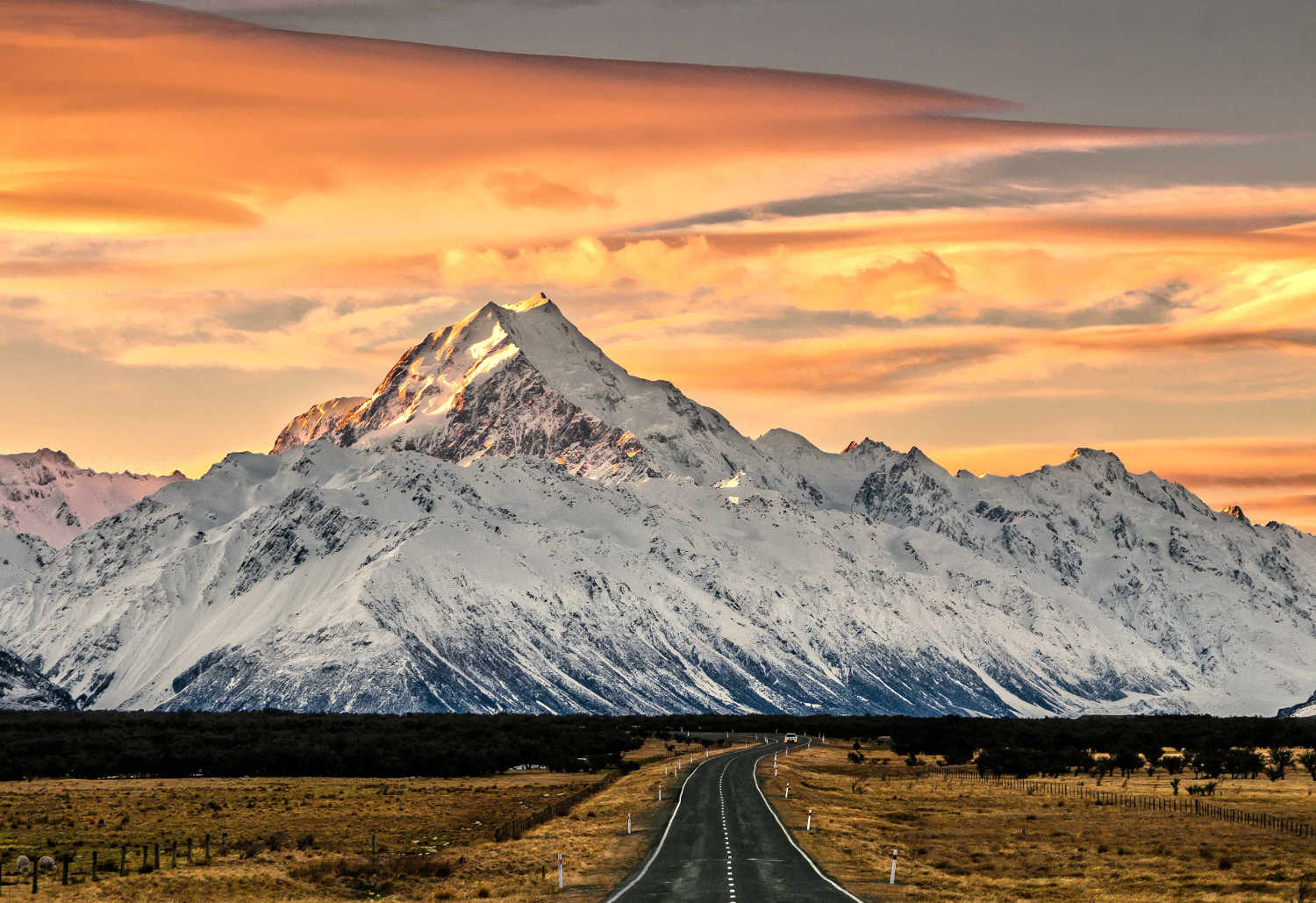
WHAT IS HAPPENING IN JUNE IN NEW ZEALAND?
In NZ June is not as busy as July and August with winter tourists. For snow lovers June is increasingly unlikely to have enough snow on the ski slopes to dust off the skis or snowboard. Mountain passes are likely to be drivable without snow chains however be prepared especially towards the end of June.
- June in New Zealand is the best month for Milky Way photography
- June waterfalls and rivers are starting to full up (be prepared to carry your waterproof coat)
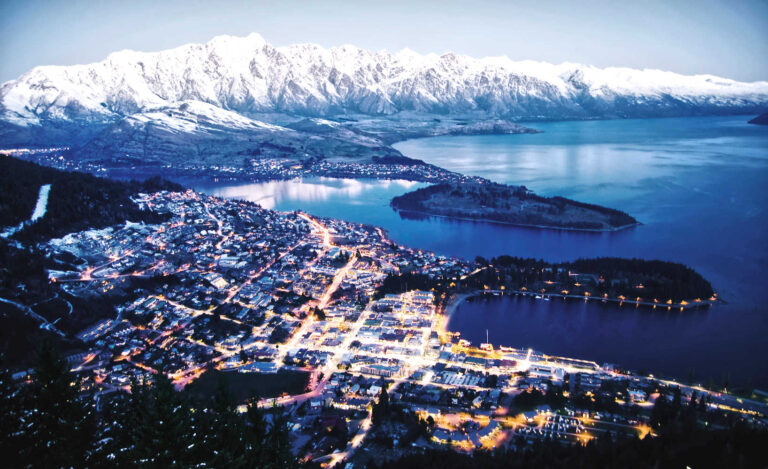
WHAT IS THE WEATHER LIKE IN NEW ZEALAND IN JUNE ?
North Island NZ June monthly average temperature:
Average low + 4°c
Average high + 15°c
South Island NZ June monthly average temperature:
Average low + 1°c
Average high + 12°c
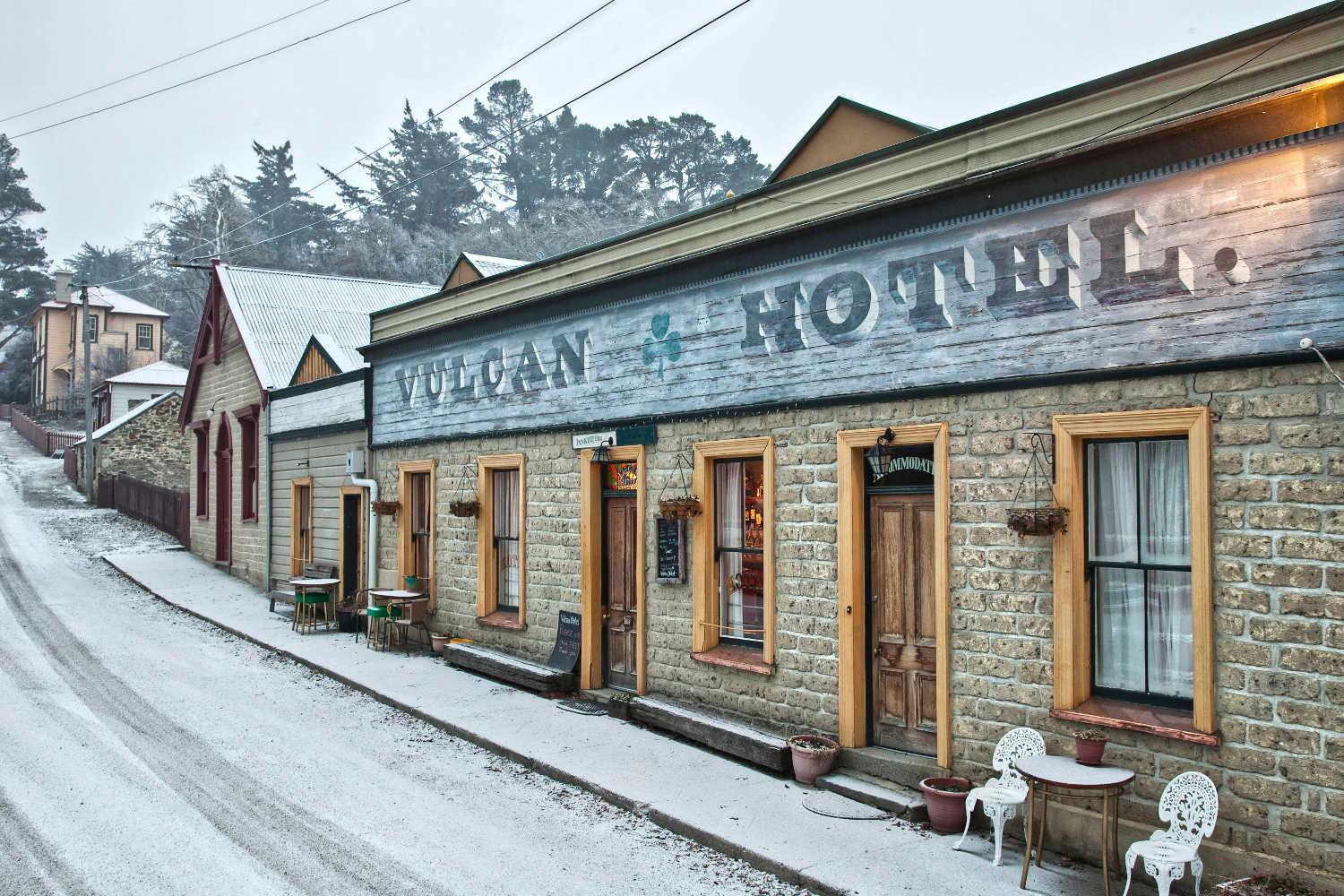
Check out New Zealand average temperatures for the month you are planning to visit either the North or South Island. Or anywhere in between. The most reliable weather forecast service is NZ Met Service .
NEW ZEALAND CLIMATE, WEATHER AND SEASONS ADDS A RICHNESS TO YOUR HOLIDAY
Four seasons, four opportunities to experience what New Zealand has to offer visitors. The climate, the daily weather forecast and the distinct seasons add to the rich palate of attractions from spring festivals to winter ski resort activities.
Find out more
TRAVEL PACK INFORMATION
- NEW ZEALAND PUBLIC HOLIDAYS
- Monthly temperature data is sourced from Monthly | NIWA . For visitors fascinated by climate change data NIWA provides a rich publicly available resource to browse
- Source The uniqueness of New Zealand plants an excellent school resource handy for visitors to help understand NZ’s unique biodiversity

BEST BITS TRAVEL GUIDE
Best Bits travel guide is published by nzjane.com . Owned and managed by PacificJane Ltd.
Other months you might also like to check....
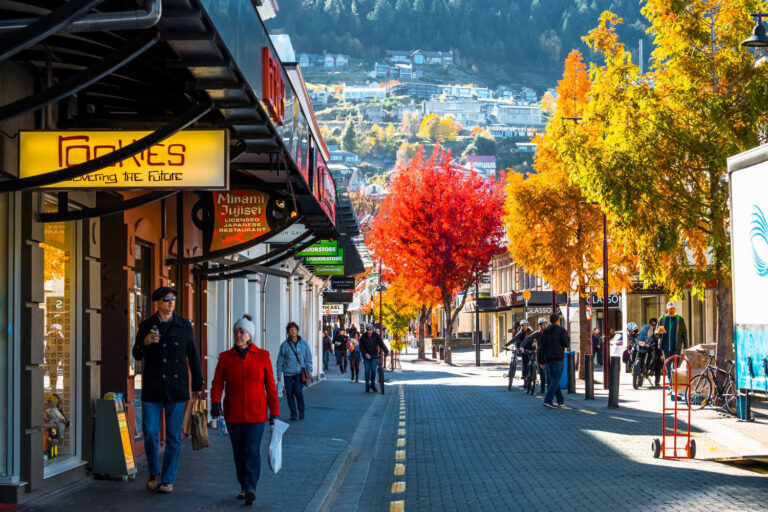
Your information is secure, no third party involved. 100% Safe, secure, privacy guaranteed. Privacy Policy .
Submit Enquiry

- Join 34500 travellers receiving savings
- Priority access to upcoming deals
Your enquiry has been successfully sent. We will contact your shortly.
You will get your insider discount checklist shortly.
- New Zealand Tours
- New Zealand Travel Guide
- When to Visit New Zealand
New Zealand in June: Weather, Tips & More
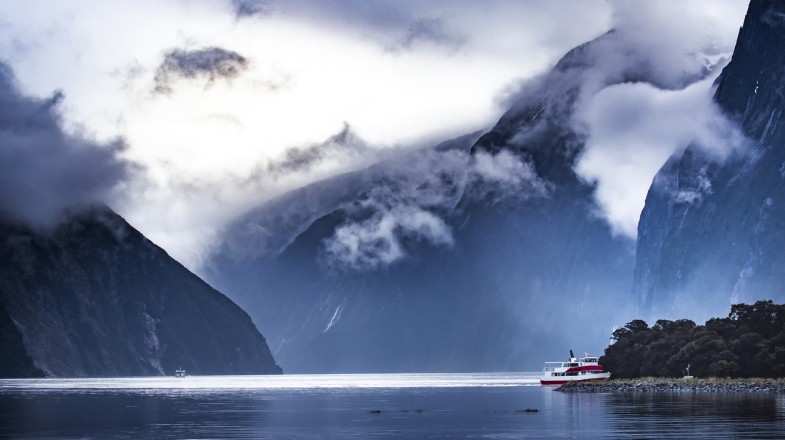
- ~ mins read
Looking forward to skiing in New Zealand? Well, we have got great news. June marks the start of winter in New Zealand, which means the resorts in the South will start opening up for the season. Further North, you can expect to find rainy conditions, especially around Auckland, which means it is ideal for indoor exploration. All in all, if you are touring New Zealand in June, visit the South Island for outdoor fun and the North Island for indoor exploration.
New Zealand Weather in June

New Zealand’s weather in June is wintry means that the temperatures tend to drop. Up North in Auckland, it is still pretty mild with temperatures between 15°C and 12°C, but June is also when the city receives the most rainfall in the entire year.
If you are heading South for the ski and adventure capital of New Zealand, Queenstown, temperatures are much colder between -2°C to 5°C. With an average of three days of snowfall out of an annual average of 16 days, you can expect some fresh powder during your New Zealand vacation in June.
Thinking of heading to the Fjordlands? Bundle up at Milford Sound experiences temperatures between 2°C and 10. It rains approximately half the month.
For a seasonal overview, go through our guide on the best time to visit New Zealand .
Weather in New Zealand in June - Rainfall and Temperatures
Why visit new zealand in june.

With winter rolling in, there is a good mix of things to do, events to attend and reasons to travel to New Zealand in June . Here are some:
- Queenstown Winter Festival: The start of ski season means that Q-Town is open for business. This quintessential ski town kicks off the season, normally in late June, with free concerts, and some really cool slopestyle competitions.
- Better rates in the north: Due to the less-than-ideal weather in the North Island, rates for accommodation and tours tend to take a hit. These are good conditions for exploring Auckland ’s many museums and indoor attractions or wrapping up warm to explore, you can grab yourself a great deal.
- Lesser crowds in the north: For much the same reason as the rates going down in the North Island, the tourist numbers are also sparse around this time. As most visitors keep to the South Island in June, you will be free to explore the popular North Island spots like Hobbiton or the Maori city of Rotorua.
Where to go and what to do

The main place that you are going to want to ski in New Zealand in June is Queenstown. It is one of the best skiing and snowboarding locations in the southern hemisphere, and the start of the season is always an exciting time. Whether you are a pro or have never strapped on skis before, there are plenty of ski schools to check out. In the town itself, you will find plenty of adventure excursions including bungee jumping, ziplining, and a giant bungee swing. Adrenaline junkies take note.
There are also plenty of great bars, restaurants and shops in Queenstown for those days where you need to recover from your adventure on the slopes. Do not forget to try the iconic dirty burgers while you are here.
If you are looking for a calmer pace on the South Island, journey down the Fjordlands at Milford Sound and take a boat trip across glacial lakes. One of the most popular spots in the whole country and on a lot of bucket lists, these majestic landscapes need to be seen to be believed. Despite being pretty cold in June, gliding across the lakes and fjords is truly a special experience. The area will be way less crowded in June than in the busy spring and summer months.

If you are not afraid of the cold, the surf season in New Zealand truly picks up in the winter months. The country has plenty of coastlines to choose from. Due to the low water temperatures and size of the swell, June probably is not great for beginners, but if you visit Kaikoura , you can expect great swells at South Island spots. Just check with the locals before you head out to get a good read on the conditions.
So, if you are planning on visiting New Zealand in June, your best bet is to head to the South Island and embrace the snowsports scene and general ski town vibe. While Auckland on the North Island is a great city with rich culture and beautiful nature, the amount of rainfall during June is likely to put a dampener on your outdoor plans. But you can still explore its many indoor attractions. If you are planning a customized trip to New Zealand , contact our local travel experts.
Other articles: New Zealand in May New Zealand in July Winter in New Zealand
Related Articles
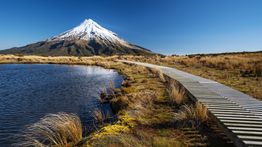
Best Time to Visit New Zealand
Pristine beaches, soaring mountain peaks, spr... read more
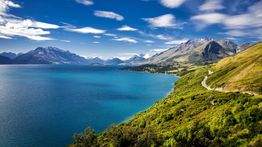
Summer in New Zealand: Destinations and Weather Tips
From the beaches on the Bay of Plenty to padd... read more
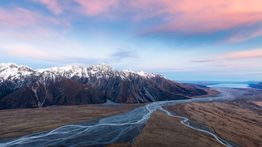
Winter in New Zealand: Top Destinations and Weather Advice
Characterized by snowfall all over the southe... read more
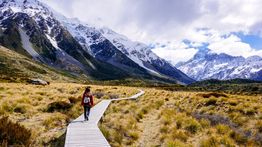
New Zealand in January: Great Weather for a Trek
Many visitors travel to New Zealand in Januar... read more
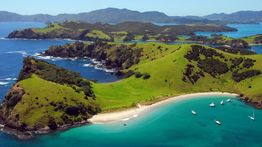
New Zealand in February: A Summer Island Hopping Trip
February is the last summer month in New Zeal... read more
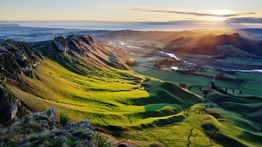
New Zealand in March: Great Weather For Exploration
Although it is already the start of autumn in... read more
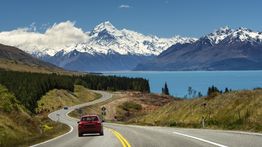
New Zealand in April: Great Weather and Fun Festivals
April is the middle of autumn season in New Z... read more
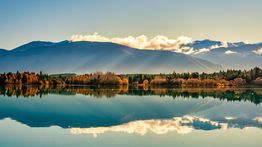
New Zealand in May: Weather and Travel Tips
Being the last month of autumn, the weather i... read more
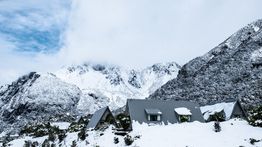
New Zealand in July: Weather, Tips & Snow Sports
Thinking of visiting New Zealand in July? Unl... read more

New Zealand in August: Dry Weather and Outdoor Fun
August is probably the driest of the winter m... read more
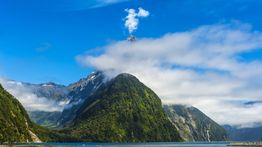
New Zealand in September: Weather, Tips & Adventure Sports
September is the start of spring in New Zeala... read more
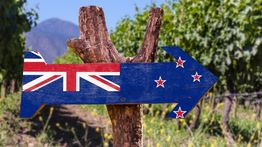
New Zealand in October: Weather, Tips & Water Sports
Visiting New Zealand in October is an amazing... read more
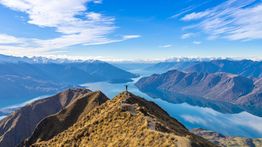
New Zealand in November: Great Weather for Outdoors
Spring will be in full swing during a trip to... read more
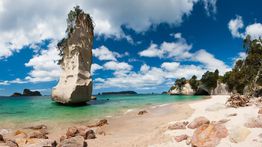
New Zealand in December: A Summer Holiday
As summer in New Zealand begins in December, ... read more
Related Categories
- How Long To Stay In New Zealand
- New Zealand Travel Advice
- What To Do In New Zealand
- When To Visit New Zealand
- Where To Go In New Zealand
- Previous Post

Popular Destinations
- Europe Tours
- Everest Base Camp Trek
- Italy Tours
- Spain Tours
- Argentina Tours
- Canada Tours
- Sri Lanka Tours
- Chile Tours
- Antarctica Tours

New Zealand Travel Insider
New Zealand in June
Learn whether June is a good month to visit New Zealand, what you can do, where you can go, and what New Zealand’s weather is like in June.
June marks the beginning of winter in New Zealand and it also marks the start of the high season .
However, because the winter holiday for New Zealanders generally falls in July, June is not an overly crowded month to be out-and-about enjoying the snow – if there is any – and the winter scenery.
While I’ve mentioned the white powder, snow is not guaranteed to fall in June.
However, June generally marks the arrival of snow, or at least, snow is expected to start falling in June.
And down in Queenstown , they celebrate this snow expectation and anticipation every year in the form of the Queenstown winter festival [winterfestival.co.nz], which is usually held at the end of June.
Due to the expectation of snowfall, June is also the month that the New Zealand ski fields start to open with Mt. Hutt ski field on the South Island of New Zealand generally being the first ski field to open in early June, but not always – Coronet Peak sometimes wins.
Things to do in June in New Zealand
June is not only the first month to go skiing or snowboarding in New Zealand, but it is also a good month for scenic winter driving if you are into seeing winter scenery .
Driving on New Zealand roads can be hazardous in winter due to snow, black ice, and having to drive through mountain passes such as Lindis Pass .
But if you drive carefully and carry chains, you should be able to experience and see some of the most stunning winter landscapes on the Southern Hemisphere.
If you are looking to do a scenic winter driving tour on the South Island you may want to take a look at a 3-part article series I wrote or review the list of the best places to visit in New Zealand during winter to see snow .
Other winter activities include ice skating and heliskiing , but you can also do activities that you would normally do in warmer weather such as jet boating, kayaking, off-roading, skydiving, ballooning, or bungy jumping.
Not all tour operators tend to shut down in winter, since winter is one of the two high seasons in New Zealand.
You can even go walking on low elevation trails or snowshoeing on higher elevation trails. I particular like to hike in winter, because of the cooler temperatures and the ideal light for landscape photography.
The sun tends to lie low on the horizon in winter, so the quality of light is very good in winter. This also applies to autumn , by the way.
Places to visit in June in New Zealand
In June, people tend to head where there is snow. You can find snow both on the North Island and on the South Island of New Zealand.

Hoar frost on trees in New Zealand in June
On the North Island, the place to be for snow would be the central plateau South of Taupo and Rotorua in Tongariro National Park .
Another location with snow would be Mount Taranaki in Mount Egmont National Park . So basically, the volcanoes on the North Island would be the places that have snow.
On the South Island there are several places you can visit for snow, from the Kaikoura Ranges in the upper half of the South Island, to Mount Cook National Park in the center, to ski fields around Queenstown and Wanaka in the bottom half of the South Island.
New Zealand weather in June
June marks the arrival of much colder weather to New Zealand, which includes Polar Blasts – cold air being blown up from Antarctica.
While severe freezing temperatures below minus 10 degrees Celsius are uncommon, temperatures tend to fluctuate between -5 degrees Celsius (23 degrees Fahrenheit) at night and 20 degrees Celsius (68 degrees Fahrenheit) during the day. But this depends on where you are located in New Zealand.
In general, you can expect the South Island to almost always be colder in winter than the North Island – during the night, that is. Daytime temperatures on the South Island can still be the same as those on the North Island in some places.
And a few localized regions in New Zealand such as for example Central Otago may experience temperature extremes.
In general, less rain falls in June than in July , except for the West Coast of the South Island where there is more rain in June than in July.
The days are quite short in June with the sun rising between 7:35 a.m. and 8:15 a.m. at the beginning of June and between 7:45 a.m. and 8:25 a.m. at the end of June. The sun sets between 5:00 p.m. and 5:15 p.m. in June.
So you have approximately 9 hours of daylight in June.
The times mentioned above are for Wellington and Queenstown and may vary depending your location in New Zealand.
Photos of winter in New Zealand in a video
This video is a collection of images that were taken in June and July. The photos should give you a good idea of what June and July in New Zealand are like in terms of the weather but also what you will be able to see.
This article falls under Travel Guide .
Note: This article was accurate when it was published. Please confirm all details directly with the companies in question before planning your trip.
Related Articles
Similar posts, best time to go to queenstown.
Learn when is the best time to visit Queenstown New Zealand based on your interests and the things you would like to see or do in Queenstown.
6-Day self-drive tour of the South Island during winter – Part 3
Get tips on where to go, what to see, and what not to miss in this 3-part series for setting up a self-drive itinerary to see snow on the South Island.
Travel by train in New Zealand: Is it possible?
Learn where you can travel to by train in New Zealand and what transport options are available if you cannot or do not not want to drive a car.
Basics of travel to and between New Zealand islands – airports and ferries
Learn which airports on the North and South Island of New Zealand are often used when traveling to New Zealand and how you can travel between the New Zealand islands.
New Zealand in October
Find out whether October is a good month to visit New Zealand, where to go, what to do, and what New Zealand’s weather is like in October.
What city to stay in in New Zealand
Get four practical tips that will help you decide where to stay in New Zealand and see a list of recommended New Zealand cities to stay in.

- +44 (0) 1636 813 544
- get in touch
- Before you go to New Zealand
- Flights and Stopovers
- Travelling Around New Zealand
- New Zealand and Australia
- New Zealand and the Pacific
- Bay of Plenty
- Northland & Bay of Islands
- Taranaki & Whanganui
- Christchurch & Hanmer Springs
- Dunedin & Central Otago
- Marlborough Sounds
- Mount Cook & Tekapo
- Nelson & Abel Tasman
- Southland & Stewart Island
- Te Anau & Fiordland
- Complete New Zealand (32 days)
- Great Sights of New Zealand (30 days)
- A Grand Tour of New Zealand (28 days)
- Wonderful New Zealand (27 days)
- The Best of New Zealand (24 days)
- Family New Zealand (17 days)
- New Zealand Highlights (14 days)
- South Island Spectacular (14 days)
- Affordable Luxury New Zealand (14 days)
- Kauri (23 days)
- Pohutukawa (20 days)
- Kowhai (19 days)
- Rimu (16 days)
- Mount Cook Lily (14 days)
- Koromiko (11 days)
- City Hotels
- Private Hotels
- Bed and Breakfasts
- Apartments & Motels
- Farmstays & Rural Homestays
- Experiences
- Walking Holidays
- Cycle Rides & Tours
- New Zealand by Motorcycle
- Wine Appreciation
- Ski New Zealand
- Nature & Wildlife
- Bird Watching Trips
- Gardens of New Zealand
- New Zealand as Middle Earth
- Captain Cook’s New Zealand
- Request a Brochure
Visiting New Zealand in June
June marks the beginning of winter in New Zealand: the arrival of the snows, the start of the skiing season and swathes of glistening ice crystals adorn the landscape. It’s not just the chill in the air that takes your breath away at this time of year!
What is New Zealand Like in June?
Arrive in New Zealand in June and you’ll find the season of winter has draped itself across the land, and you might also find that you have much of that land to yourself, as the winter holiday doesn’t begin for New Zealanders until July. June can be a stunningly beautiful as well as a quiet time to see the country, which also means flights to New Zealand in June can be cheaper than at other times of the year.
The first snows arrive as temperatures start to drop, and the New Zealand June climate is a cool one. Polar blasts from the Antarctic hit the coastlines and the temperature in New Zealand in late June can drop to around -5° at night. But New Zealand is a temperate country and conditions don’t get too bitter: daytime temperatures can still reach as high as 20° in some places and you can expect around 9 hours of daylight.
Both the South and North Islands experience snowfall in their mountain ranges, but the South Island is cooler. It is also drier than the North Island (which can see some really wet weather this time of year), and the drier, colder weather on the South Island makes for some stunningly clear and crisp winter days! You can typically expect highs of around 15° and lows of 3° on the North Island and highs of 13° and lows of -2° on the South.
What to Do in New Zealand in June
We love to visit New Zealand in June. The wild landscape takes on a completely new character as winter makes its mark, and the activities and cultural experiences keep step, turning with the season. It’s a different country to the one you’ll find in the summer , but it’s no less rich in things to do. Here are some of our favourite New Zealand activities in June:
- Queenstown Winter Festival
- Celebrate Matariki; Maori New Year
Heli-Hike the Franz Josef Glacier
Take a dip in the hot springs in rotorua or hanmer springs, queenstown’s winter festival.
In June, winter is underway and nowhere celebrates this fact quite like Queenstown . First established in 1975, the Queenstown Winter Festival is a weeklong event, topped and tailed by wondrous firework displays and full of activities and competitions in the meantime. You could catch a music or comedy gig on one of the free stages, take part in a game of dodge ball, watch a parade, cheer the dog derby as they hurtle past or even ride a suitcase down a ski slope. It’s the biggest celebration of winter in the Southern Hemisphere and there are cultural shows, parties and competitions a-plenty.
If you fancy being part of this exuberant and joyous welcome to winter, then make sure you book your accommodation in Queenstown in plenty of time as it gets pretty busy around the festival. You can buy tickets here .
Celebrate Matariki: Māori New Year
June is the month when the star constellation of Pleiades rises above the horizon and marks the beginning of the Maori New Year . The Maori word for this constellation is Matariki, and you’ll find Matariki festivals happening across the country, with perhaps the biggest taking place at Wellington’s Te Papa Museum .
Matariki occurs at the end of the harvest period, with Maori storehouses full of lovely foods, so food is a big part of the Matariki festival, along with singing and dancing. As well as festivals, you’ll also find some interesting museum exhibitions, markets and astronomy events associated with the rise of Matariki, and as ever, there are a whole load of myths and legends surrounding the constellation to discover as well!
All hail the thrills and spills of fun in the fresh alpine air! That’s right, the ski season is waking up and it’s time to don your skis, snowboard, sledge or snowshoes and get out in the powder. There are around 24 snow fields in New Zealand found both on the North and South Island (though most are on the South) that cater for beginner up to advanced abilities.
As we’re just at the start of the season, some fields won’t be open yet so if snow sports are high on your bucket list, head straight to the cooler South Island. The Mt. Hutt ski field is often the first to open there and many fields have snow-making facilities, so if you find June is a little warmer that you’d hoped, the chances are there’ll still be somewhere to ski. And don’t worry about bringing suitcases full of gear with you, as there are lots of rental opportunities around the ski fields.
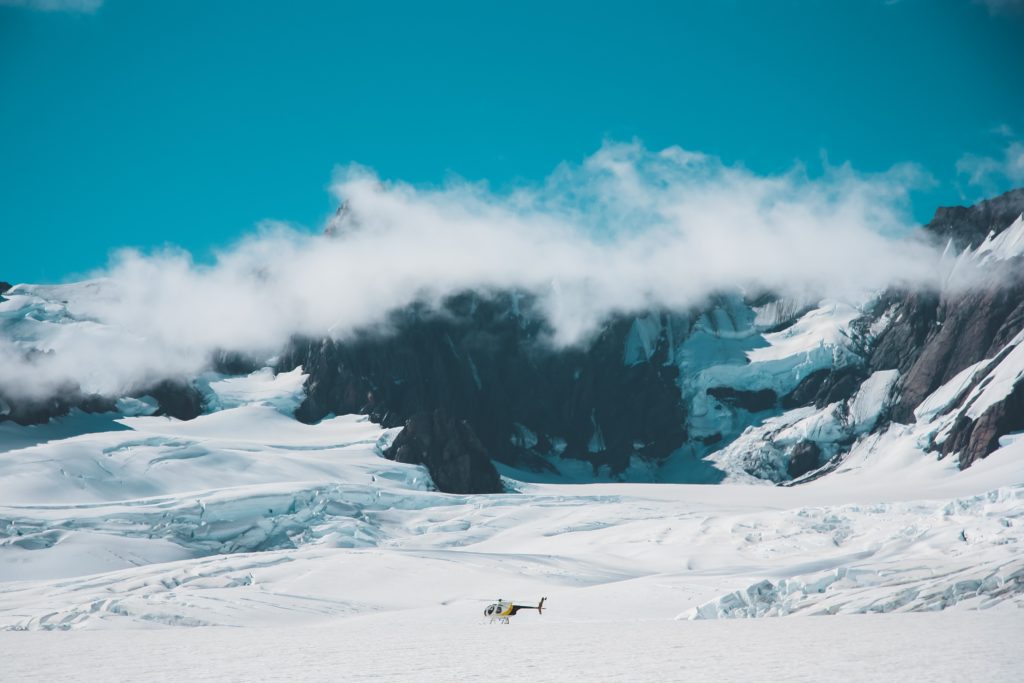
Like to hike? Ever hiked on a glacier? Ever hiked on a glacier after arriving on a helicopter?! Well this unique experience is yours for the taking. The Franz Josef Heli-Hike involves jumping in a helicopter in the centre of the town of Franz Josef and then taking an incredible trip up and over the awesome phenomenon of the Franz Josef Glacier .
Once you’ve got the measure of landscape from a distance, it’s time to step out onto the top of the glacier and see some of its amazing features up close. Take a walk through ice caves, past pinnacles and crevices and marvel at the beautiful colours of the ice flows. Warm, waterproof clothing is provided and a once-in-a-lifetime experience is guaranteed. Just be aware that safety is paramount on the glacier, and trips are sometimes cancelled if the weather is bad. If your trip is cancelled, don’t worry, you’ll be offered free seats on the next available one.
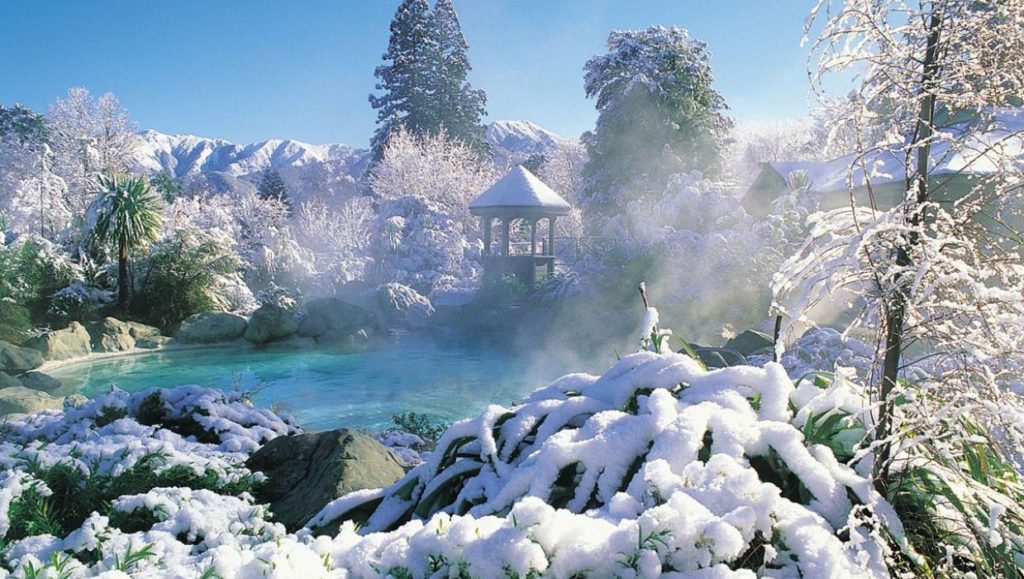
Cold weather brings lots of fun and beauty to a holiday in New Zealand, but sometimes it’s nice to warm up a bit. The good news is that New Zealand’s geothermal springs are a year-round natural attraction and ever so willing to warm those bones of yours. What could be better than relaxing in a hot spa and breathing the crisp, fresh winter air?
Rotorua has a collection of natural hot springs along the edge of its lake, that have been famed since the early 19 th century for their healing properties. And if that’s not enough, a short drive south brings you to Kerosene Creek which flows through natural bush-land, over a 2-meter waterfall, and into an inviting pool of warm water.
Hanmer Springs is another option for some natural geothermal bone-warming and mountains and ski fields surround these lush turquoise waters! While you can’t quite ski down the slope and land straight into a soothing hot spa, the pools are only a short ride and a change of clothes away.
What to Pack for New Zealand in June
We’re going to round off today’s article with some suggestions about what to pack for New Zealand in June. This isn’t a comprehensive packing list but rather some “don’t forget to bring’ items that we have picked up over many visits to our favourite country at this time of year.
Temperature-wise, things are cooling down, but while the North Island will retain some of the warmth of autumn, the South Island will start to get very cold. Antarctic winds will start to blow across the country and it’ll get pretty wet too – especially in the North Island. The key to what to wear in New Zealand in June is to be prepared for cold and wet weather, and we think you’ll be glad to have the following to hand:
- Woolley hat, gloves and scarf
- Zip up fleece jacket
- Light, packable waterproof jacket (perfect when teamed with the fleece)
- Thermal underwear – it takes up no space and you’ll really feel the benefit
- Lightweight layers, such as tee shirts, baggy long sleeved tops and light pull-overs
- Warm thick socks
- Comfortable, practical, waterproof footwear
- Swimwear (for those thermal pools!)
Jeans are a bit of a grey area when it comes to packing for New Zealand in June. On the one hand, they’re rugged and versatile; on the other they’re atrocious in the rain. If you’re the kind of person who feels naked without their jeans, then bring two pairs so you at least have a spare to wear while your others are drying. And bring thick denims rather than flimsy jeggings!
New Zealand is a country that evolves with the turning of the seasons, which is partly why it’s such a varied and fascinating holiday destination. Even the changes between New Zealand in March and June are astonishing: March announces the dazzling colours of autumn, while June brings the snows and wonderlands of winter. It’s quiet, it’s beautiful and it’s action-packed – what’s not to like about New Zealand in June? As always, if you’d like any help or just a chat about New Zealand June tours, please drop us a line and our in house experts will be able to help.
Privacy Preference Center
Privacy preferences.
Change location
- UK / International
- Call toll-free tomorrow from 9am EDT 617-223-4521 617-223-4580 or
- REQUEST A QUOTE
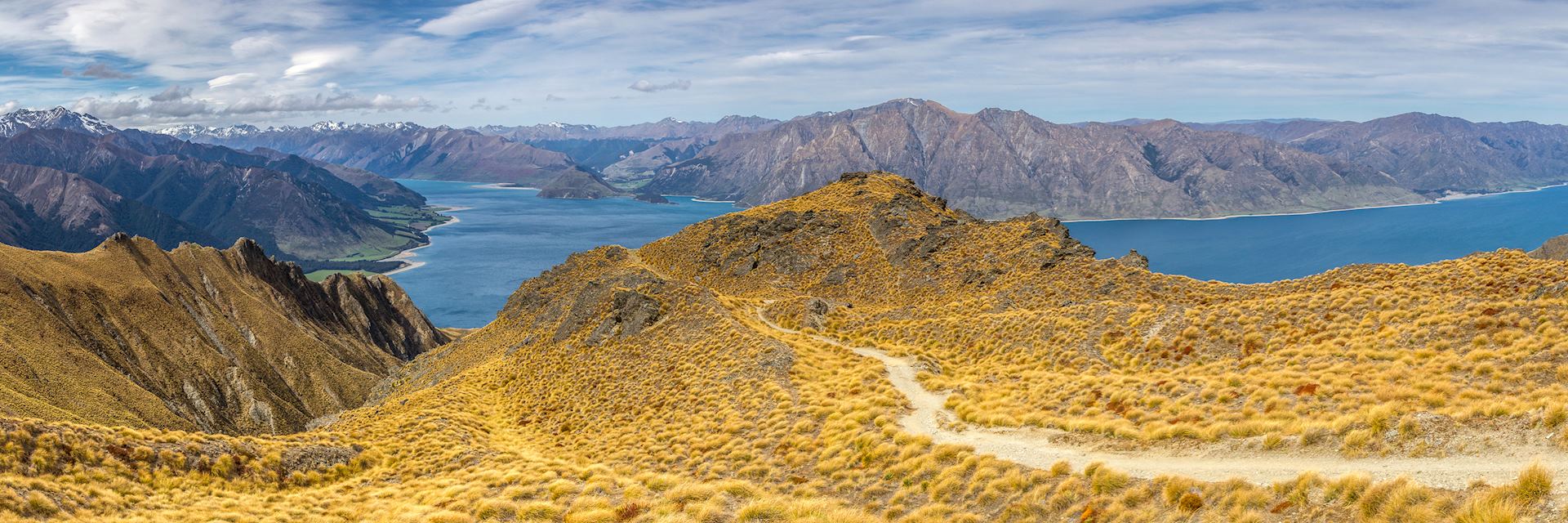
When is the best time to visit New Zealand?
- The Otago Peninsula
- Month-by-month
The best time to visit New Zealand is during the summer months of December to March. Expect long, bright, sunny days and temperatures between 61°F and 75°F. It’s an ideal time to visit the lovely beaches or enjoy the many outdoor activities available, such as hiking and mountain biking.
However, New Zealand’s rugged beauty and varied landscapes make it a spectacular destination to visit at any time of year. Just be prepared for a fair sprinkling of rain whenever you decide to visit.
Snow often arrives in the South Island between June and September, as well as in some of the North Island’s more mountainous areas, attracting skiers from far and wide.
The spring and fall months herald milder weather and fewer visitors, but this is still a very pleasant time to visit. Temperatures normally sit in the fifties and sixties.
- Make an inquiry
- Request a brochure
Month-by-month guide for traveling in New Zealand
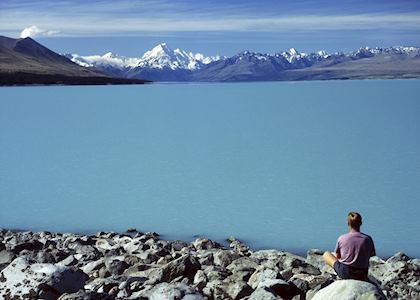
Visiting New Zealand in January - February
The warm sunny days of summer make this an ideal time to visit, particularly for snorkeling or outdoor pursuits, but it can be harder to find accommodation. School vacations run into the first two weeks of January, while tourists arrive in large numbers to make the most of the warm climate until the end of February. It's also a great time to spot dolphins and fur seals off the coast of the South Island.
Events & Festivals
- Marlborough Food and Wine Festival (February): This is New Zealand's longest running wine festival, right in the heart of the world-famous wine producing region.
- Rugby Sevens (January to February): Thousands flock to watch the country's favorite sporting event in New Zealand’s capital city, Wellington.
- Wellington Fringe Festival (February to March): This lively festival brings masses of entertainment in the form of music, comedy and theater to venues across Wellington.
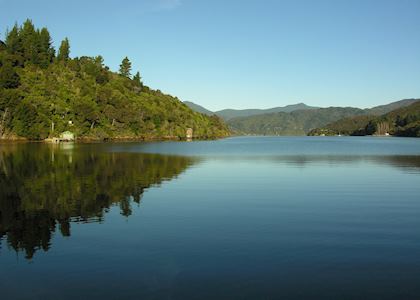
Visiting New Zealand in March - May
The arrival of fall brings cooler days and quieter roads. While the weather will be more changeable, there is still a fantastic array of wildlife to be seen and the changing colors of the leaves add a new dynamic. If you are happy with cooler weather then this is a great time to make the most of lower prices and fewer crowds.
- Bluff Oyster Festival (May): This festival celebrates the season's oyster harvest with music, food and wine.
- Warbirds Over Wanaka International Airshow (every other year over Easter weekend): This thrilling air show brings historic aircraft and modern fighter jets to the skies in the South Island.
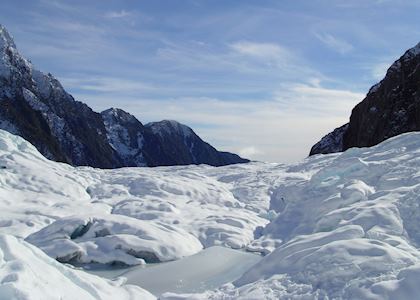
Visiting New Zealand in June - July
Winter in New Zealand can be both beautiful and challenging. While the North Island sees much rain, snow in the South Island can make mountain passes more difficult and many excursions cease to operate. It is, however, a spectacular draw for skiers and a fantastic time to see the country away from the crowds that the summer brings.

Visiting New Zealand in August
As winter continues, areas in the North Island such as Rotorua and the Bay of Islands remain relatively popular as they benefit from milder weather than the south. The South Island holds its own charms, though, as humpback whales pass by Kaikoura on their way north to warmer waters.
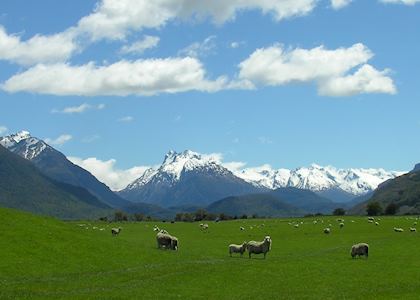
Visiting New Zealand in September - October
Temperatures begin to rise and snow on the mountains starts melting, making this a fantastic time for white-water rafting as the rivers are full and fast. The weather is changeable, but as most tourists are yet to arrive the roads are quiet and accommodation is easier to secure. September is also a brilliant time to see newborn lambs gamboling in the fields and orcas gracing the coastline with their presence.
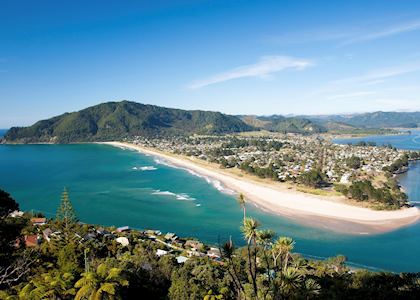
Visiting New Zealand in November - December
The warmer weather isn't the only draw of the start to New Zealand's summer; stunning wild gorse and vibrantly colored lupins spread across the country, making it one of the most impressive times to visit. As peak season begins, prepare for busier attractions and book early to secure accommodation in the more remote areas.
New Zealand Climate Guide
Why travel with audley.
- 100% tailor-made tours
- Fully protected travel
- Established for over 25 years
- 98% of our clients would recommend us

Travel advice
Practical tips for traveling to New Zealand, from social protocols to guidance on money matters, with a link to the latest US State Department travel advice.

Request our brochure
Covering all seven continents, The World Your Way shows you how you can see the world with us. It features trip ideas from our specialists alongside hand-picked stays and experiences, and introduces our approach to creating meaningful travel experiences.
Trip ideas and travel guides for exploring New Zealand
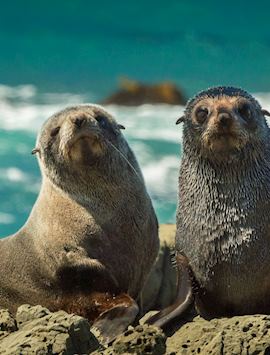
Highlights of New Zealand
13 days from $6,555pp
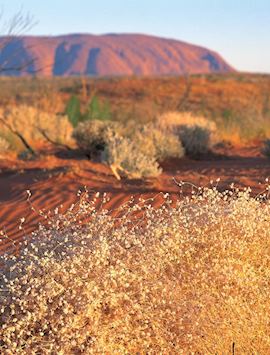
Australia & New Zealand uncovered
20 days from $11,900pp
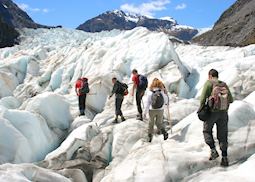
7 experiences to try on your outdoor activity vacation in New Zealand
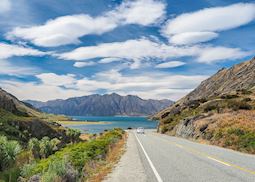
Driving vacations in New Zealand: 3 great routes
10 min read
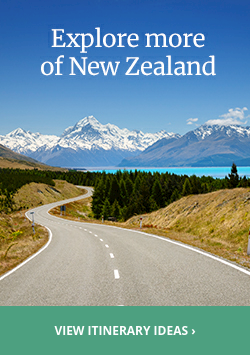
My Blonde Bucket List
Queenstown in June: Your weather and travel guide for 2024

Wondering when is the best time to visit Queenstown? Queenstown in June is stunning as it marks winter’s beginning in New Zealand.
Queenstown is the ideal spot for winter travellers who want to experience a one-of-a-kind and memorable getaway. From skiing or snowboarding on its slopes to discovering the astounding beauty of Queenstown, you’ll find countless activities that will keep you captivated.
What’s more – Queenstown’s scenery looks even more breathtaking during wintertime. Imagine being surrounded by snow-covered mountains and a glistening lake – pure bliss!
If you’re planning a trip here in June, make sure to book your accommodation early as Queenstown can get pretty busy during the winter. From its stunning views to thrilling activities, this destination is guaranteed to bring an unforgettable travel experience.
Queenstown weather in June
Does it snow in queenstown in june.
Yes it sure does! With winter’s commencement in June, Queenstown can be a bit chilly. Since it’s the first month of winter, it marks when the snow begins to fall – hello snow sports!
As Queenstown can also be quite breezy in June due to the southwesterly wind, don’t forget to add some warm jackets and scarves to your luggage.
Plus, raincoats are recommended since rainfall is inevitable during this month – though so is snowfall. Make sure you’re ready for the crisp days and cold nights!

Average Temperature in Queenstown in June
Queenstown in June has an average temperature range of 6 to 8 degrees Celsius. With the days being generally cooler, the temperatures usually dip to 0 or 1 degree Celsius at night time.
It is possible for the temperature to go below 0 on particularly cold nights, although when the sun is out you can get some lovely crisp winter days!
Can you swim in Queenstown in June?
Well nobody’s going to stop you…but it certainly would be very chilly! Swimming in Queenstown during June is not recommended, you’re better off hitting the slopes instead.
Does it rain in Queenstown in June?
If you’re planning to travel to Queenstown in June, it’s best to be ready for any kind of weather! With an average rainfall of about 90mm (3.5 inches), the winter months bring some extra precipitation and unpredictable weather conditions.
To ensure that you stay warm and dry no matter what Mother Nature has in store, make sure to pack a few layers as well as an umbrella just in case – snowfall is usually expected in June.
What time does the sunset in Queenstown in June?

June in Queenstown is the perfect time to witness a mesmerizing sunset; especially from Lake Wakatipu, where the sun usually sets at 5 pm.
It is rather early given there are no daylight savings at this time of year and the days are shorter but it leaves plenty of time to head out to dinner afterwards!
Events and things to do in Queenstown in June
1. luma southern light project.
Celebrate the King’s Birthday in style at LUMA , a four-day extravaganza of light art and sculpture, performances, and community fun held in the beloved city of Queenstown Gardens.
From local to international artists, the project not only displays creative works of art but also supports businesses and provides educational opportunities while establishing a strong network between creators alike.
Be ready to be taken on an illuminated journey that you won’t soon forget!
2. Go skiing or snowboarding
Skiing or snowboarding through the enhanced winter scenery of Queenstown is a dream come true for many people, drawing travellers from all corners of the globe.
Coronet Peak and The Remarkables are two premier ski fields located in close proximity – Cardona Valley and Treble Cone not far behind at just an hour’s drive away! Truly, there is no shortage of options to make your skiing experience one-of-a-kind here.
If you’re not a fan of winter sports, don’t worry! The mountains are still stunning enough to make the drive worthwhile. Plus, exploring New Zealand’s majestic Remarkables mountain range is an absolute must-do experience.
3. Skyline Queenstown Gondola

From the beautiful snow-dusted peaks to the stunning landscape, Queenstown really is a winter wonderland! With Skyline Gondola located just five minutes away from downtown Queenstown, you can ascend 480 metres into the clouds and bask in its majestic beauty.
This accessible activity is one of New Zealand’s best gems that should be enjoyed year-round – don’t miss out on this amazing experience!
What to wear in Queenstown in June
June in Queenstown is all about bundling up and keeping warm. With the temperature sometimes dipping to 0 degrees Celsius, you’ll need a few pieces of clothing and accessories to keep you cosy.
Pack a thick coat, scarf and gloves as well as hats or beanies for those extra chilly days – thermals are also recommended underneath your regular clothing. A pair of shoes with good grip is also essential for navigating Queenstown’s many trails or slopes if that’s your thing.
So if you’re looking to take in Queenstown’s beauty during the month of June, make sure you’re dressed appropriately and ready for whatever adventures await!
Queenstown in June: FAQ
What is the best time of year in queenstown.
No matter what time of year you choose to take a trip here, Queenstown will always provide incredible scenery and plenty of things to do so it really depends on what you want to experience.
If you’re looking to explore New Zealand’s natural beauty and partake in exciting winter activities, a visit to Queenstown during June is the perfect choice. The crisp winter days offer spectacular views of snow-covered landscapes, providing an unforgettable experience for any traveller!
If you choose to exchange the cold snow for sunny, dry days you can explore Queenstown in a whole new light during the summer months. Immerse yourself in this beautiful region while taking part in exciting outdoor activities like hiking, kayaking and mountain biking!
There’s no limit to what adventure awaits you when visiting Queenstown during the warmer season.
What is the wettest month in Queenstown?
October and March tend to be the wettest months in Queenstown, with precipitation of approximately 80-90mm (3.5 inches) on average. If you plan to visit during these months then it’s good to ensure you are well prepared for your trip, take into account that New Zealand’s weather can be very unpredictable – Queenstown included!
What is the driest month in Queenstown?

Despite the fact that July is winter in Queenstown, it has been known to be one of the driest months with a mere 65mm of precipitation. However, this is primarily due to snowfall rather than rain as summer remains an ideal time for sunnier days.
With mild temperatures and some rainfall throughout the year, don’t let this deter you from visiting during any month: Queenstown will not disappoint!
What is the hottest month in Queenstown?
January is the warmest month of the year in Queenstown, with an average high temperature of 22°C (71 Fahrenheit). Its sunny skies make it ideal for nature lovers and adventurers alike – basking in a generous helping of sun rays each day!
In total, you will enjoy around 230 hours of sunshine throughout this warm month.
What is the coldest month in Queenstown?
In Queenstown, the chilliest month is usually July with an average temperature of 8°C (46 Fahrenheit). As snowfall frequently happens during winter in this location, it’s essential to pack a few extra layers if you plan on visiting at that time.
Queenstown in June: Travel Guide

If you’re looking for a memorable winter experience, June is the perfect time to visit Queenstown. Its picturesque landscapes are simply breathtaking and its vast array of activities can cater to all types of travellers.
Whether it be an adrenaline-filled adventure or leisurely relaxation, there’s something special waiting in Queenstown. Just remember to pack extra layers – when June comes around, temperatures tend to dip rather quickly!
Is Queenstown worth visiting?
Yes, Queenstown is the ultimate getaway! With its mesmerizing landscapes and numerous activities all year round, this part of New Zealand has something for everyone.
Whether you’re skiing down the slopes or sampling local wines, your experience in Queenstown will be extraordinary – I guarantee it. The scenery here is absolutely exquisite and there’s no shortage of things to do; which is why it’s one of my favourite New Zealand getaways.
Is Queenstown safe to travel to?
Queenstown is usually a safe haven for travellers, but just like anywhere else it’s important to be mindful of your environment and take additional steps when travelling solo at night.
The bustling atmosphere provides plenty of activities for exploration during the day, while its tranquil corners make great destinations to explore as darkness falls. With some smart strategizing during your stay, you’ll have an unforgettable journey that remains secure all throughout!
Where is Queenstown, New Zealand?
Queenstown is located in the South Island of New Zealand and it’s quite a popular tourist destination. Boasting majestic views of Lake Wakatipu and the mountains that surround it, Queenstown is one of the most beautiful towns in New Zealand.
Best place to stay in Queenstown

Queenstown has something for everyone, no matter the budget. Are you seeking out an exquisite experience? Then look no further than Kamana Lakehouse or QT Queenstown!
Looking to save a dollar or two? Pinewood Lodge and Queenstown Top 10 Holiday Park are both excellent options that won’t break the bank.
Best luxury Queenstown accommodation
- Kamana Lakehouse (the most beautiful views!)
- Hilton Queenstown Resort and Spa
- QT Queenstown
Best budget Queenstown accommodation
- Pinewood Lodge
- Queenstown Top 10 Holiday Park
- Sir Cedrics Tahuna Pod Hostel
How many days do you need in Queenstown?
Queenstown can be explored in as few as three days if you’re tight on time, but to experience the very best of what this town has to offer, it’s recommended that you stay for 5-7 days.
This way you’ll have enough time to check out all its amazing activities and attractions while also getting some skiing or snowboarding done.
When can you see the southern lights in Queenstown?
If you’re looking to see the awe-inspiring Southern Lights in Queenstown, make sure to plan your trip during winter – between May and August . However, don’t discount shoulder seasons such as March, April or September when you could be lucky enough to witness this spectacle of nature!
Be prepared for a midnight sky watch; bundle up well with warm clothes and leave any light pollution behind by heading out of town. Lake Tekapo is considered to be a great spot to see the lights from.
Conclusion: Queenstown in June
Queenstown in June is a one-of-a-kind winter retreat, providing awe-inspiring scenery and an abundance of activities. With that said, be sure to bring layers for those chilly days and nights as well as an umbrella – nature can surprise you at times!
Make the most out of New Zealand’s breathtaking season by visiting Queenstown this coming June; adventure awaits with no shortage of memories to make along the way. So bundle up and experience all that Queenstown has to offer!
• 15 Best things to do in Queenstown alone | A solo travellers guide • 10 Best Things to do in Omarama • The Ultimate Travel Guide For Fall In New Zealand • 21 Day New Zealand Itinerary: What to See & Do from a Local • Does it snow in Queenstown? Winter Travel Guide • Winter in Queenstown, 20 Best Things To Do • Queenstown in October: Your weather and travel
Sammy Green is the owner and creator of My Blonde Bucket List, your go-to guide for unforgettable journeys to the world's best beach and mountain destinations, including the likes of New Zealand, Canada, and Portugal. She does this by creating blog posts about the best tips and resources on how to make the most of your time in each destination. Having travelled to 24 countries (and counting) her goal is to inspire you to experience all the world has to offer, whether that be on your first solo trip or with your significant other.
Best time to visit New Zealand

The best time to travel to New Zealand largely depends on what kind of holiday you want to have, with the peak season (featuring the best weather) falling from December to February. If you’re after snow, travelling during the winter months of June to August is the way to go.
Although New Zealand’s climate is quite varied due to its diverse landscape, most of the country experiences a maritime climate with four distinct seasons: summer, autumn, winter and spring. This is part of the reason why New Zealand is the perfect country to visit year-round, as there’s always plenty to see and do regardless of the season. To help you plan out your trip, we’ve broken it down month by month.
Summer is the perfect time to visit New Zealand’s North Island as the weather’s the best it will get, lending itself to beachside getaways and various water activities. Temperatures can reach a mild but nice 77°F with a low chance of rainfall, so be sure to make the most of being in the beautiful great outdoors.
A little heads up, places like the Bay of Islands and Mount Maunganui are popular during this time, so booking accommodation and securing transportation as soon as possible is recommended to avoid any disruption to your travel plans.
With epic ski destinations like Queenstown and Nelson , it’s little wonder travelers fly to the South Island in droves when winter rolls around. While temperatures can reach a low of 14°F, unfavorable weather patterns hardly deter travelers looking to spend some time on the slopes. In fact, ski season falls between June and October, so this is often the busiest (and most popular) time to head to the South Island.
If snow is what you’re after, the best months to visit New Zealand are June to August. However, snow predominantly falls on the South Island (rarely on the North Island), accumulating roughly 24 inches every year, so keep this in mind when planning your trip. Some of the best locations to visit for snow include Queenstown, Otago and Canterbury – all on the South Island.
Best for: lazy beach days, swimming and snorkeling
The sun is out in full force during January in New Zealand with an average of 25 partly cloudy/partly sunny days, so it’s little wonder it’s the most popular time to visit. You can expect these days to be long and warm (with hardly any rain), ones that are perfect for water-based activities such as swimming and snorkeling. Once you’ve had enough of the water, plenty of daylight is left to participate in a little sunbathing – don't forget the sunblock!
Best for: boat cruises, bush walks and mountain biking
The good times keep on rollin’ in February (and so do the warm temperatures). February is officially the last summer month in New Zealand but that doesn’t mean the weather’s turning bad anytime soon. You can still expect temperatures to reach a sweat-inducing 86°F in some parts of the country; however, they’re more likely to sit at a comfortable 77°F average.
February’s also known to be one of the driest seasons in New Zealand, so partaking in outdoor activities such as bushwalking, mountain biking and boat cruising are all a pretty great way to spend the long days of sunlight. If you want to take your summer getaway to the next level, visit Aoraki Mt Cook National Park and Stewart Island for views you simply won’t get anywhere else.
Best for: Dunedin Fringe Festival celebrations, cycling and paddle boarding on Lake Wanaka
It might not be summer anymore but that doesn’t mean the nice, warm weather automatically disappears. In fact, you can still count on temperatures of 65°F+ most days. These temperatures will start to decrease as the month goes on though, so ensure you’re making the most of the nice weather before it retreats during the winter season.
And it’s important to note that while it isn’t technically peak season anymore (bye summer, bye tourists), some popular destinations such as Lake Wanaka, Milford Sound and Lake Tekapo will still be a little busy, so booking in advance is recommended for most activities and accommodation.
Best for: rainforest exploring, going on walks and picnic lunches
Autumn is well and truly underway in April with most of the country’s foliage turning from green to an array of oranges, reds, yellows and browns. For this reason, April is one of the best months to go outside and explore the great outdoors, and when you’ve got destinations like Auckland, Hawke’s Bay and Gisborne at your gloved fingertips, why wouldn’t you?
While New Zealand’s landscapes in April might take your breath away, there’s a real possibility that this month’s weather might as well with unpredictability reigning supreme – one minute it could be nice and sunny, and the next, it could be cold and pouring with rain. To help combat this, try to dress in layers and always carry an umbrella with you (especially if you plan on spending long periods of time outside).
Best for: wandering around Hobbiton, learning about Maori culture and oyster festival celebrations
You might be aware of the Lord of the Rings franchise filmed in New Zealand, but you probably didn’t know that May is one of the best months to explore it. Why you may ask? Well, May is technically considered the low season for traveling in New Zealand so while the summer brings plenty of tourists to this famous filming location, you’ll have it largely to yourself in May.
Not only that, but the weather is somewhat ideal too (think not too hot but not too cold either) with average temperatures in some destinations reaching a comfortable 70°F. However, winter is fast approaching, so if you plan on heading toward mountainous regions, you can expect a light dusting of snow.
Best for: Matariki (Maori New Year) celebrations, skiing and snowboarding
While summer might be the most popular season for traveling in New Zealand, winter still promises a whole heap of fun, from snow-based activities to those that are perfect for adrenaline junkies (think tandem swings and bungee jumping). However, the temperatures expected during this month are no joke – especially on the South Island.
In places like Queenstown and Lake Tekapo, temperatures can reach a chilly 28°F but you might not mind that much when you can spend all day hitting the slopes. Matariki (Maori New Year) celebrations also happen in June when there are plenty of festivals full of dancing, singing and eating happening across the country.
Best for: hot springs, museum visits and river jet-boating
Some people might be settling down for hibernation come July, but not you. There are plenty of cool experiences to be had and stunning destinations to see in winter – put simply, the fun doesn’t stop just because the temperature’s dropped (yes, we’re poets and small-group tour operators).
You can expect ‘four seasons in a day’ type of weather with the month prone to experiencing a mixture of rain, snow, sun and wind at any given moment. While this adds to the excitement and unpredictability of your adventure, make sure you pack accordingly so you don’t find yourself too cold or too hot. Some popular activities to keep you busy in July include jetboating in Queenstown and relaxing in hot springs in Rotorua.
Best for: heli-hiking, marveling at geothermal activity and carving your own Pounamu (jade) necklace
Most people think winter is perfect for cozying up in front of the fireplace with a hot chocolate in one hand and a good book in the other, but there’s plenty of fun to be had in the colder months in New Zealand. Yes, temperatures can reach a chilly 44°F in August but that’s what thermal layers and beanies are for, and as far as we’re concerned, that’s not a good enough escape to miss the sight of snow dusting some of this country’s most iconic landscapes.
While road-trippin’ can be a lot of fun (emphasis on the ‘lot’), it’s important to remember that roads can be dangerous with low temperatures encouraging snow. Before long drives, tune into local weather stations, listen out for advice and make sure your car is appropriately equipped for icy conditions.
Best for: Hobbit Day festivities, evening cruises and cheese & wine tastings
September heralds the start of spring in New Zealand, and while it might not promise the ideal summer weather, it’s still a fantastic time to travel. Not only are the large crowds of tourists still a couple of months away but the landscapes are coming to life after a long winter – you’re going to want to take plenty of photos of gardens bursting with flowers and lush countryside looking like a sea of green.
Hobbits (LOFTR characters) hold a special place in the heart of New Zealanders thanks to the iconic filming location outside of Rotorua, so Hobbit Day is not to be missed if you’re anywhere near Hobbiton come September 22nd. Outside of that, other popular activities include soaking up that nice springtime weather with a glass of local wine and a bite of cheese and spending a quiet evening on the waters of Milford Sound.
Best for: brewery tours, Lake Taupo sailing adventures and national park wanderings
October in New Zealand marks the middle of spring, and with it comes mild weather and a relatively even mix of rainy/sunny days. But, even if the sun isn’t shining, you should still be wary of its potentially harmful rays and wear sunscreen if you’re spending long periods of time outside. This’ll come in handy for the mornings spent sailing the calm waters of Lake Taupo and the afternoons spent wandering the trails of various national parks.
Best for: seeing glow worms, seal spotting and winery visits
We’re not going to say you’ve hit the jackpot if you’ve chosen to travel around New Zealand in November but we’re not not going to say that (if you know what we mean). November technically falls into the second shoulder season of the year (outside the peak and low seasons) but summer is right around the corner, so temperatures are warmer up and days are getting longer. The tourists are also not out in full force yet, so you still have popular locations largely to yourself. Sounds like a win/win situation.
Best for: wildlife watching, Christmas markets and New Years celebrations
December marks the start of summer in New Zealand, and while that generally means warm temperatures, average highs can differ depending on your location. For instance, on the North Island temperatures can reach up to 86°F while the South Island experiences a much cooler 73°F on average. Rain is also nonexistent this month, so make the most of December’s clear days before we blink and winter’s back to rear its shiver-inducing head.
PSA: school holidays start from mid-December onwards, so expect popular spots to be more crowded than usual. You should also lock in accommodation and activities well in advance to avoid disappointment or disruption to your travel plans.
Let's create an exclusive trip for your group.
The 7 best places to go on a hot air balloon ride
Australia or New Zealand? Where to go on your next trip
10 ways to get closer to nature with Intrepid
What is Greymouth known for?
9 ways to get to know a place through multi-active adventures in 2023
7 Nelson walks that’ll take your breath away
Get your feed on at these top Wanaka restaurants
5 of the best restaurants in Hawke’s Bay
See reviews Enquire now
Email: [email protected]

- North Island New Zealand Weather in June

- New Zealand Travel Blog
June marks the beginning of winter in New Zealand, and with it comes a whole host of great activities, events, and special celebrations to look forward to. Overall, temperatures are cold but not freezing, and in terms of rainfall June marks a kind of ‘calm before the storm’ of the wettest months about to come.
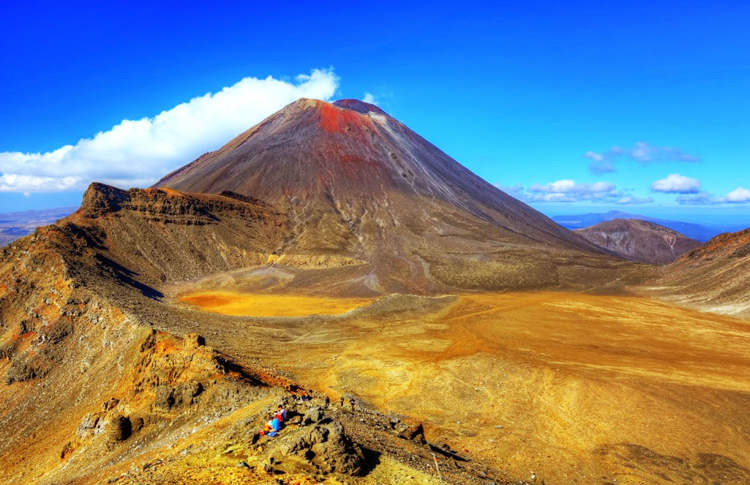
Average Temperatures in the North Island in June
Average sunshine hours per day in the north island in june, average rainfall in the north island in june.
- Best Things to do in the North Island in June
June is a wonderful time to visit the North Island of New Zealand. From skiing and food festivals to traditional Maori celebrations and star-gazing, it’s a great time to enjoy a North Island holiday. Combined with a number of great events taking place around the country – from traditional Maori New Year celebration of Matariki to the country’s biggest urban wine festival – June is a great time to plan a North Island visit .
June is the start of winter in New Zealand, and so this is the month when temperatures start to head towards their coldest point of the year. Overall, then, average temperatures in the North Island in June are quite cold, but never freezing.
However, there is huge variation across the island in terms of average temperatures, as well as from the beginning of June to the end of the month. For example, average high temperatures all across the North Island all remain in or near the teens (12°C-16°C, or 54°F-61°F), wherever you are; whereas there is a big difference in average nighttime low temperatures between, say, the coastal northern regions of Auckland (8.1°C) and Northland (9.2°C for Kaitaia) and, say, the higher inland areas around Rotorua (4.3°C) and subalpine Taupo region (3.0°C).
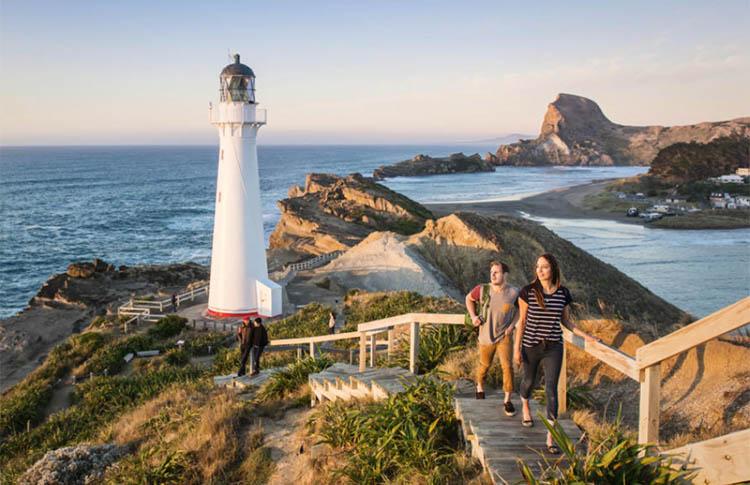
June is winter in New Zealand, and with it comes the shortest day of the year and relatively short daylight hours. Combined with more cloudy weather and rainfall in parts, that means average sunshine hours per day in the North Island in June can be quite low.
However, again it depends a lot on where you are and what you plan to do! Here’s what to expect from different regions:
Although June is typically a less rainy month in the North Island than other winter months (and, in many areas, less than in autumn), it is still part of a generally rainy period of the year, compared with other months. As a result, there’s still likely to be plenty of wet days in the month, and chances of rain are high in certain places like the far North.
That said, there are also some parts of the North Island – such as Napier and Taupo – where there are relatively few wet days, and average rainfall is relatively low throughout June!
Best Things to do in the North Island in June
Taste new zealand’s best wine in wellington.
Several New Zealand wine regions have international acclaim, and overall there are hundreds of fabulous wineries around the country. The problem, at least for anybody visiting the North Island on a limited itinerary, is that these wineries are just that – scattered around the country – and it can be hard to get around all of them. Never fear, though! Luckily, for one weekend in June, the best of New Zealand wine comes together at Winetopia, a fun festival bringing together the very best of New Zealand wine to its capital city for dozens of events, pop-ups, and tastings.
Attend the Hawke’s Bay Food & Wine Classic
It may be the middle of winter, but Hawke’s Bay’s renowned Food and Wine Classic (better known to the locals as F.A.W.C.) ensures that there’s not a sniff of winter blues hanging around. Taking over one of New Zealand’s most famous wine regions for the month, F.A.W.C. brings together the region’s many superb winemakers, brilliant brewers, fabulous restaurants and innovative eateries. There are plenty of events taking place, from family-friendly picnics to late-night parties, so you’re bound to find something to fit your North Island itinerary.
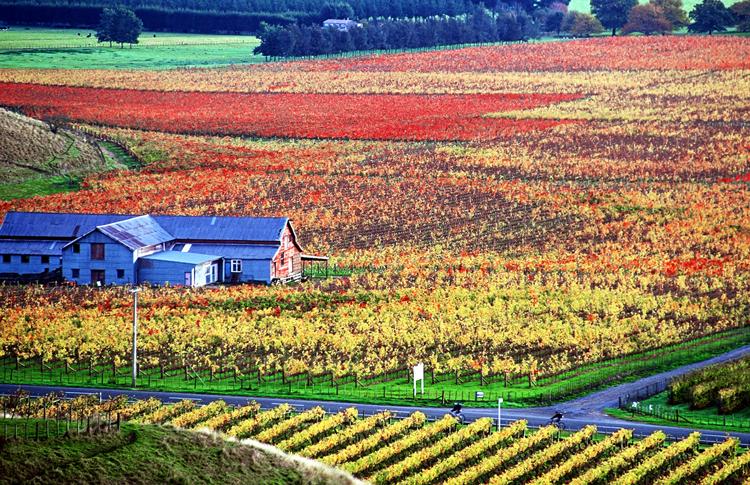
Ready to start planning?
Making your North Island trip a reality is easy thanks to First Light Travel . You’ll find all the information you need about what to expect on their comprehensive New Zealand travel blog . If you’re ready to start planning or booking now, then there’s a wide range of different North Island travel itineraries and tour packages available. Or, contact FLT’s friendly travel experts and they can help you create your own special itinerary, free of charge.
Read our Google Reviews to see what our guests have to say about us!

RELATED TOURS
Download Our Free NZ Travel Guide
Get our free guide which is full of actionable tips and information about how to make the most of your time in New Zealand.
Recent Posts
Blog categories.
- April 2024 (1)
- March 2024 (2)
- January 2024 (2)
- November 2023 (9)
- October 2023 (2)
- August 2023 (1)
- June 2023 (1)
- May 2023 (2)
- April 2023 (1)
- March 2023 (17)
- February 2023 (4)
- January 2023 (2)
- December 2022 (11)
- November 2022 (7)
- October 2022 (1)
- May 2022 (1)
- March 2022 (3)
- February 2022 (3)
- January 2022 (1)
- December 2021 (1)
- August 2021 (1)
- June 2021 (1)
- May 2021 (2)
- February 2021 (1)
- August 2020 (1)
- July 2020 (1)
- May 2020 (1)
- April 2020 (1)
- March 2020 (1)
- January 2020 (1)
- December 2019 (1)
- November 2019 (1)
- October 2019 (1)
- September 2019 (1)
- August 2019 (5)
- July 2019 (2)
- June 2019 (1)
- May 2019 (3)
- April 2019 (1)
- March 2019 (1)
- February 2019 (1)
- January 2019 (1)
- December 2018 (1)
- November 2018 (1)
- September 2018 (1)
- August 2018 (1)
- July 2018 (1)
- June 2018 (1)
- May 2018 (1)
- April 2018 (1)
- March 2018 (1)
- February 2018 (1)
- January 2018 (1)
- December 2017 (1)
- October 2017 (1)
- September 2017 (1)
- August 2017 (1)
- July 2017 (1)
- June 2017 (1)
- May 2017 (1)
- April 2017 (1)
- March 2017 (1)
- February 2017 (1)
- January 2017 (1)
- December 2016 (1)
- November 2016 (1)
- October 2016 (1)
- September 2016 (1)
- August 2016 (1)
- July 2016 (1)
- June 2016 (1)
- May 2016 (1)
- April 2016 (1)
- March 2016 (1)
- February 2016 (1)
- January 2016 (1)
- December 2015 (1)
- November 2015 (1)
- October 2015 (1)
- September 2015 (1)
- August 2015 (1)
- July 2015 (1)
- June 2015 (1)
- May 2015 (1)
- April 2015 (1)
- March 2015 (1)
- February 2015 (1)
- January 2015 (1)
- December 2014 (1)
- November 2014 (1)
- October 2014 (1)
- September 2014 (1)
- July 2014 (1)
- June 2014 (3)
- May 2014 (1)
- April 2014 (1)
- March 2014 (1)
- February 2014 (1)
- January 2014 (1)
- November 2013 (15)
- October 2013 (1)
- September 2013 (1)
- August 2013 (1)
- July 2013 (1)
- May 2013 (1)
- April 2013 (1)
- March 2013 (1)
- February 2013 (1)
- January 2013 (1)
- December 2012 (1)
- November 2012 (2)
- October 2012 (2)
- September 2012 (2)
- August 2012 (2)
- July 2012 (2)
- June 2012 (2)
- May 2012 (2)
- April 2012 (3)
- March 2012 (2)
- February 2012 (2)
- January 2012 (2)
- December 2011 (2)
- November 2011 (1)
- October 2011 (2)
- September 2011 (1)
- August 2011 (1)
- July 2011 (1)
- June 2011 (1)
- May 2011 (1)
- April 2011 (1)
- March 2011 (1)
- February 2011 (1)
- January 2011 (1)
- December 2010 (1)
- November 2010 (1)
- October 2010 (1)
- September 2010 (1)
- August 2010 (1)
- July 2010 (1)
- June 2010 (1)
- May 2010 (1)
- March 2010 (1)
- February 2010 (1)
- January 2010 (1)
- December 2009 (1)
- November 2009 (1)
- October 2009 (1)
- September 2009 (1)
- August 2009 (1)
- July 2009 (1)
- June 2009 (1)
- May 2009 (1)
- April 2009 (1)
- March 2009 (1)
- February 2009 (1)
- January 2009 (1)
- December 2008 (1)
Related Tours
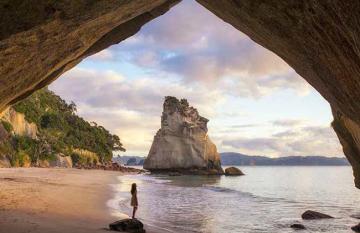
A Relaxing New Zealand Journey – the North Island
Here is a self drive holiday that makes you feel like you have really had a holiday – no rushing around on this itinerary. Enjoy exceptional scenery, stunning beaches and experience New Zealand great outdoors with easygoing relaxed adventures. Plenty of 2 or 3 night stays in one location ensuring you will return home revived.
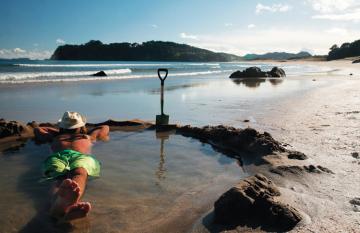
A Relaxing NZ Journey - North and South Islands
This self drive holiday that makes you feel like you have really had a holiday – no rushing around on this itinerary. The North Island’s Relaxing Journey is designed for those needing space and relaxation. Enjoy exceptional scenery, stunning beaches and experience our great outdoors.
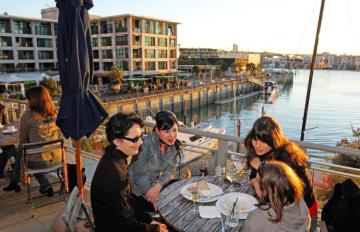
A Quick New Zealand Fix - North Island
Short on time, but want to maximize your experience in New Zealand's North Island, without going over the top, leaving you breathless at the end of your journey, we created the Quick Fix New Zealand North Island Tour allowing you to see and do those iconic New Zealand sight seeing and activities that the North Island is famed for - the MUST-DOs.
Pricing terms
The price is based on current exchange rates but is only an approximation. Please contact us for a final price
8-14 day Itineraries
Refine your selection to find the perfect itinerary
Destination
itineraries found
Recommended itineraries
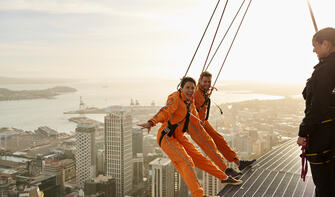
Auckland to Christchurch Adventure itinerary
Adventure — Nature & wildlife — Volcanic/Geothermal
Auckland > Christchurch - Canterbury > Rotorua
Discover a world of beauty and adventure. Swim with dolphins, explore magical caves of glow worms, gaze on geothermal wonders, bungy jump from great heights and cross ancient glaciers with this unforgettable New Zealand Itinerary.
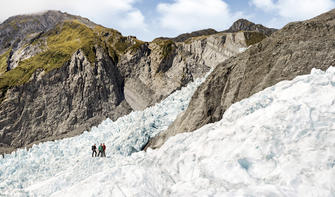
New Zealand highlights itinerary
Food & wine — Hot pools & health spas — Māori culture — Nature & wildlife
Auckland > Rotorua > Queenstown
This itinerary takes you through some of New Zealand’s most scenic spots over 14 days. Enjoy glowworm caves and geothermal wonders in the central North Island, before driving through rolling green farmland to our country’s capital, Wellington.
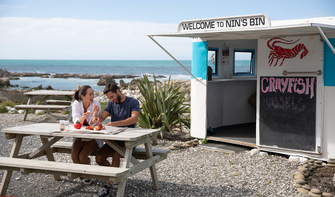
Christchurch to Nelson Loop
Adventure — Food & wine — Hot pools & health spas — Nature & wildlife
11 Days — 1400 km
Christchurch - Canterbury > Kaikoura > Marlborough
Experience a blend of history, adventure, wildlife and the spectacular outdoors on this 11 day loop from Christchurch to Nelson and back. Travel Akaroa and Kaikōura for whale watching and on to the world-famous Marlborough wine region. Find out more.
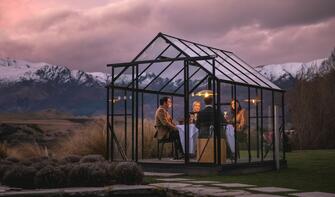
Cameron Douglas’s Wine-tinerary
Adventure — Food & wine
Created in collaboration with Master Sommelier Cameron Douglas, the wine-tinerary showcases the best each wine region has to offer with a selection of Cameron’s favourite wineries and restaurants.
- Work With Us
- Blogging Bootcamp

- Van Conversion Academy
- Campervan Shop
- Campervan Rentals
- Plan a Trip
- Itineraries
- Destinations
- Responsible Travel
- Family Travel
- Budget Travel
- Scuba Diving
- Travel Credit Cards
- Digital Nomad
- Teach English Abroad
- Blogging Resources
- Income Reports
- Travel Shop
- Meet Katie & Ben
- About Two Wandering Soles
- Personal Stuff
- Portfolio & Press
How to Plan the Perfect New Zealand Itinerary
Home » Blog » New Zealand » How to Plan the Perfect New Zealand Itinerary
With miles of jaw-dropping landscapes and experiences, it can be hard to decide how to plan for a trip to New Zealand. We’re walking you through how to put together the perfect New Zealand itinerary based on our travels.
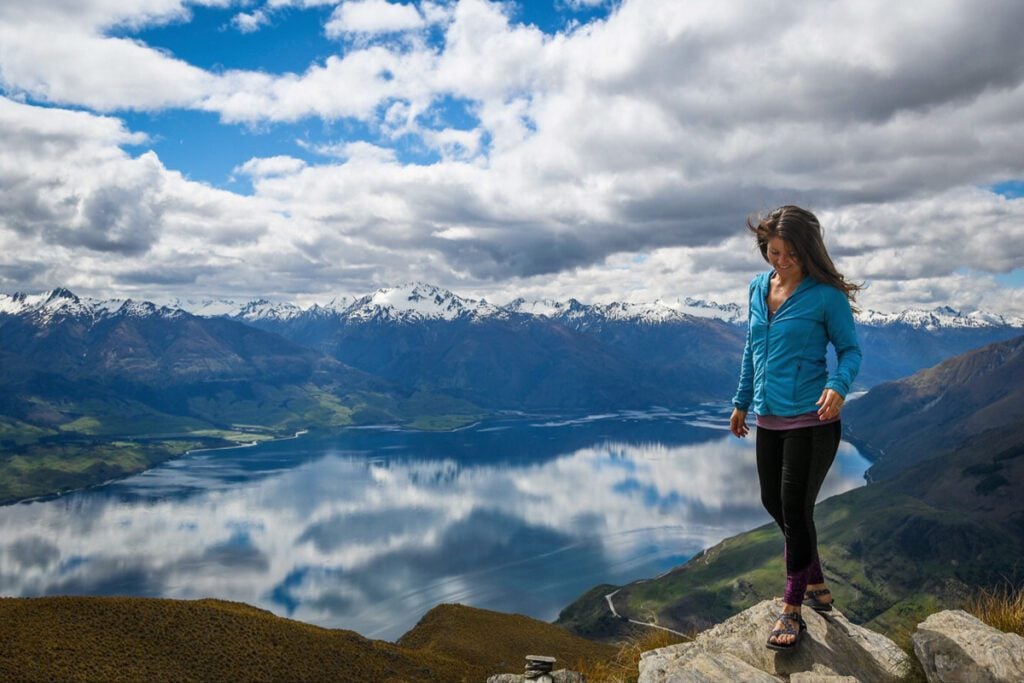
New Zealand is truly one of our favorite countries to explore. And if you know me, you know how hard it is for me to choose favorites.
The relatively small island nation is home to an astounding variety of scenery: lush forests, snow-capped mountains, volcanoes, ancient glaciers, stunning coastlines, rugged fjords, and rolling farmland.
There are tons of activities to get your adrenaline pumping in the “Adventure Capital of the World”. You can go caving, hiking, skydiving, skiing, climbing, bungee jumping, jet boating, swimming with dolphins, camping… just to name a few.
But there are also plenty of opportunities to slow down. On our trip, we soaked in hot springs, sipped wine, sampled the local cuisine , slept in mountain huts, and relaxed on the beach.
We spent 5 weeks traveling around New Zealand in a campervan, and we’ve been lucky enough to explore a lot of what this country has to offer!
In this article, we’ll walk you through exactly how to plan the perfect New Zealand itinerary, from how much time you’ll need to where to go and how to spend your days.
New Zealand itinerary contents
- Where to go
- Type of travel
- Where to start/end
- How many days
- Typical Budget
- Accommodation
- Perfect New Zealand itinerary
- Booking your trip
- Itinerary planning resources
Want to save time and energy on planning?
If you want to save yourself the hours of research and planning, we’ve got you covered with our ultimate done-for-you New Zealand Itinerary . This itinerary includes a lot of what you’ll find in this article, plus so much more!
We took our 5-week travels and condensed it down to 30 days (because so many people wanted a 1-month route) that hits the top destinations on both the North and South Islands in one epic road trip.
We’ll send you our complete 1 month itinerary, filled with tips and advice. Just click below to get your 30-day New Zealand road trip itinerary today!

Where to go on your New Zealand itinerary
From the vibrant cities and geothermal wonders of the North Island to the wild fjords and towering mountains of the South Island, below is a list of places to consider visiting on your New Zealand itinerary. We’ve included the country’s main highlights as well as some underrated gems not to be missed.
(Are you skipping the North Island all together? Jump down to the South Island .)
North Island
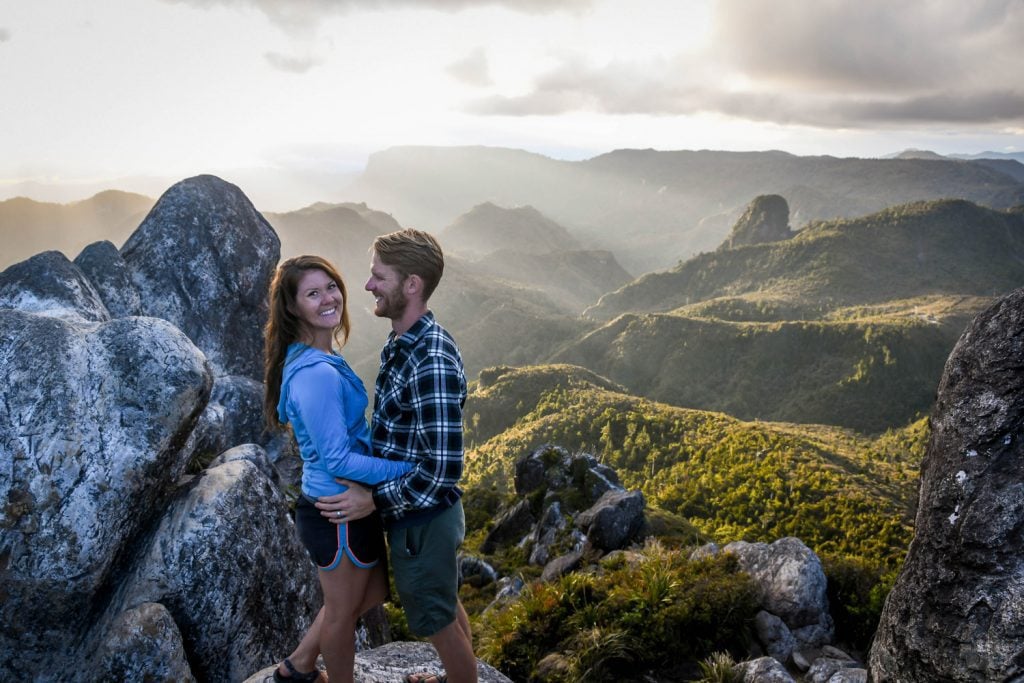
With thermal hot springs, white sand beaches and enough volcanoes to make your head spin, New Zealand’s North Island is not to be overlooked. Though it is often outshined by its more mountainous neighbor to the south, we found the North Island to be quite enjoyable.
If you’re looking for a shortcut, we created a perfect New Zealand North Island itinerary that brings you to all the major highlights, as well as hidden gems off the typical tourist path.
We’re even sharing where to stay and what to eat in the North Island, so you have all the information you need right at your fingertips!
Below we’ve listed all of the top places to consider visiting on the North Island of New Zealand.
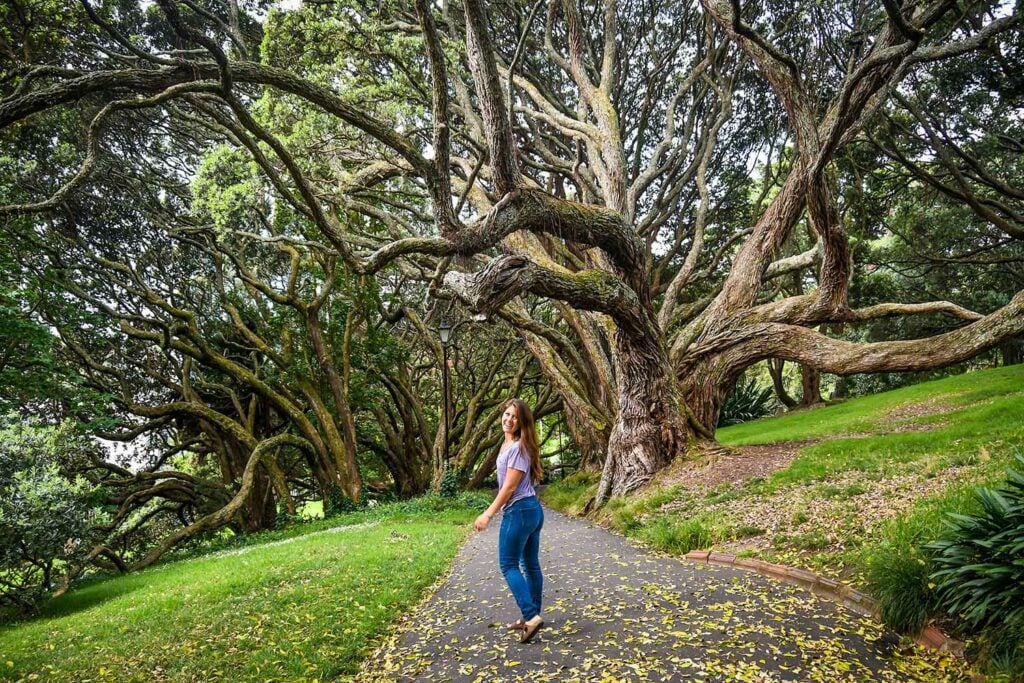
Due to its large international airport, Auckland is the entry point for most visitors to New Zealand. It’s also the country’s largest city, with more than a third of the national population residing here.
This “City of Sails” is a dynamic, multicultural metropolis with a buzzing waterfront, lots of green space, and a diverse dining scene. In addition to all the fun things to do in Auckland , it also makes a great base for some of the North Island’s best day trips.
Waiheke Island
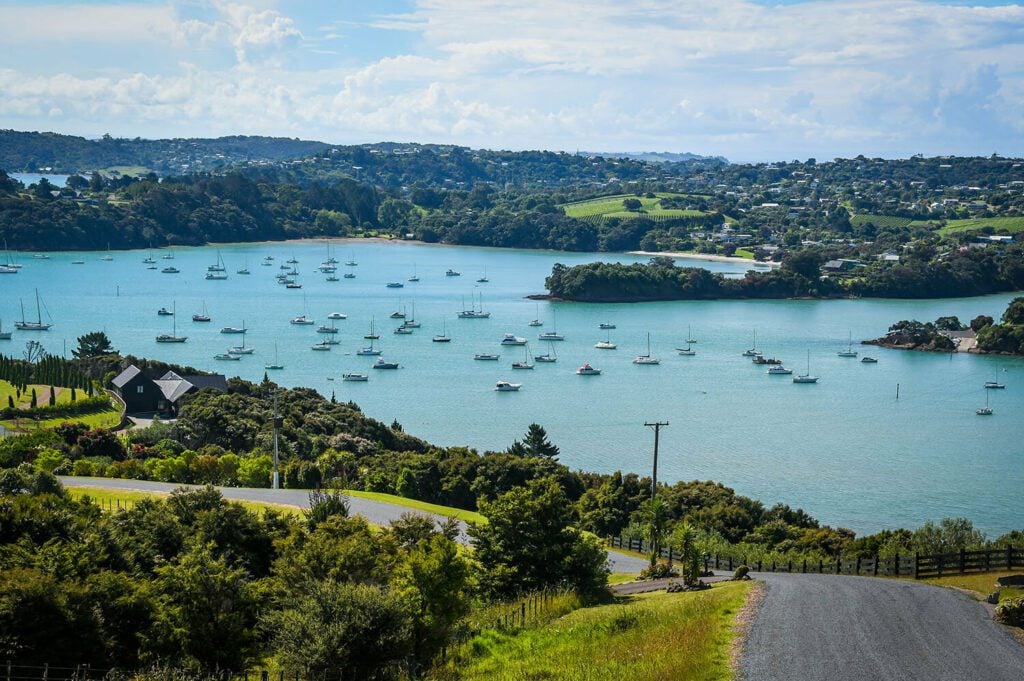
Just a short ferry ride from Auckland, Waiheke Island is a captivating gem known for its world-class wines, which visitors can sip while taking in the picturesque vineyards and olive groves that dot the landscape.
Nature lovers can explore pristine beaches, lush forests, and rugged coastal cliffs , while cultural connoisseurs browse art galleries, boutique shops, and fine dining establishments.
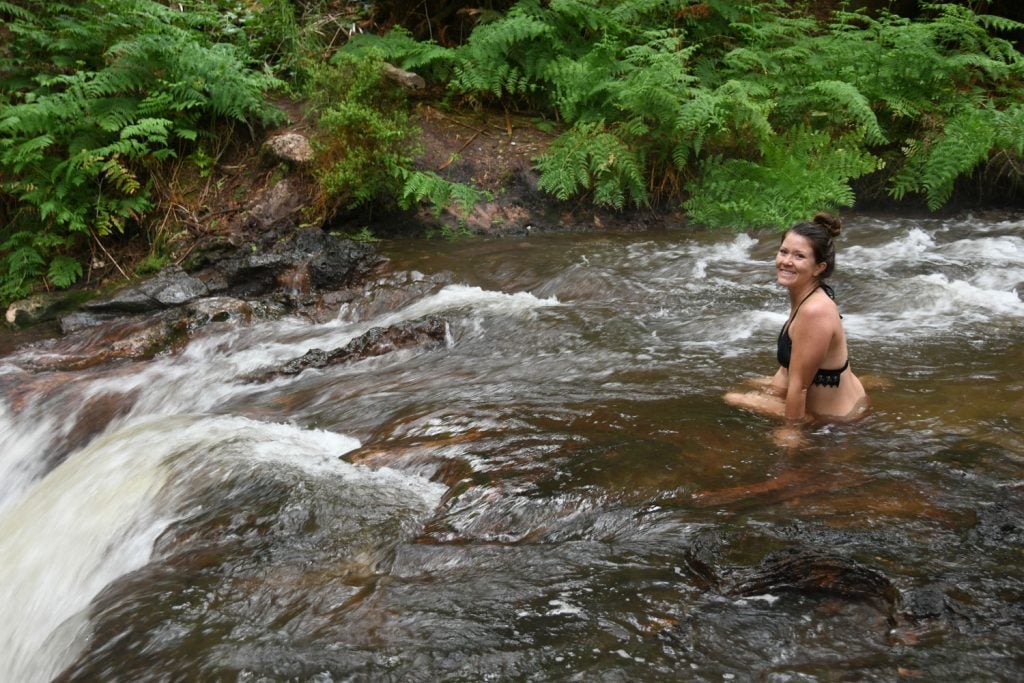
This geothermal wonderland of Rotorua boasts bubbling mud pools, steaming geysers, and colorful mineral-rich hot springs alongside lush forests and serene lakes. It is also home to the Whakarewarewa Living Maori Village and offers cultural experiences, including traditional Maori performances and cuisine.
Coromandel Peninsula
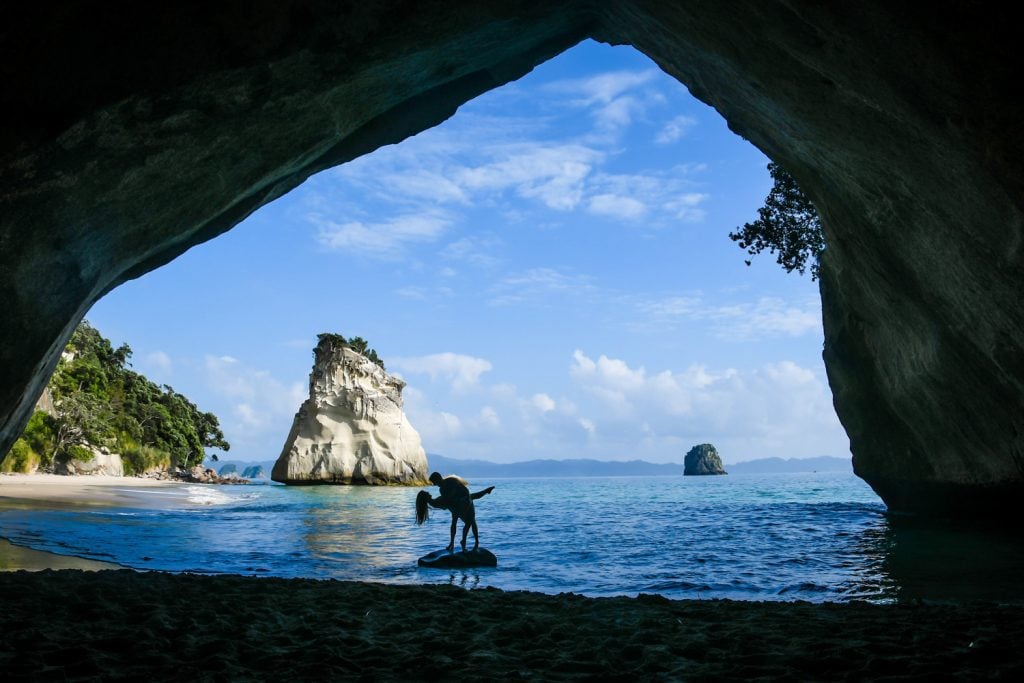
A coastal region with a laid-back vibe , the Coromandel Peninsula is home to some seriously bucket list-worthy experiences. Trek or kayak to the marine reserve at Cathedral Cove, dig your own personal hot tub at Hot Water Beach, or kick back in the charming seaside towns of Whitianga and Coromandel Town.
Mount Maunganui
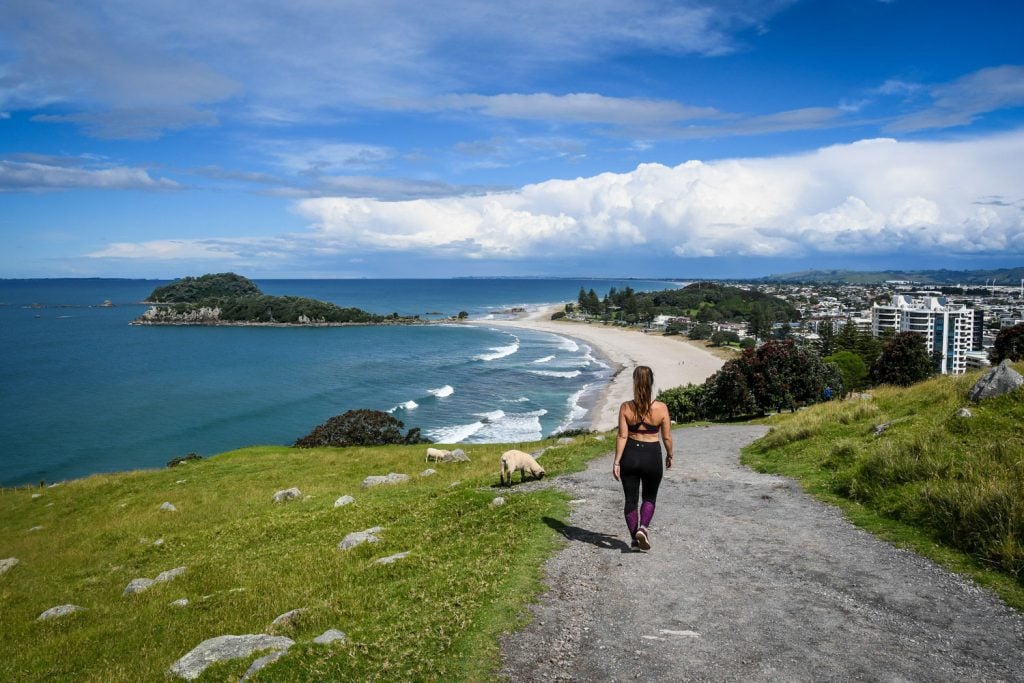
Located in New Zealand’s Bay of Plenty, Mount Maunganui is a dreamy destination for hikers, surfers, and beach bums alike. Summit the iconic Mauao, an extinct volcanic cone , for panoramic views of the surrounding land and seascapes.
Bay of Islands
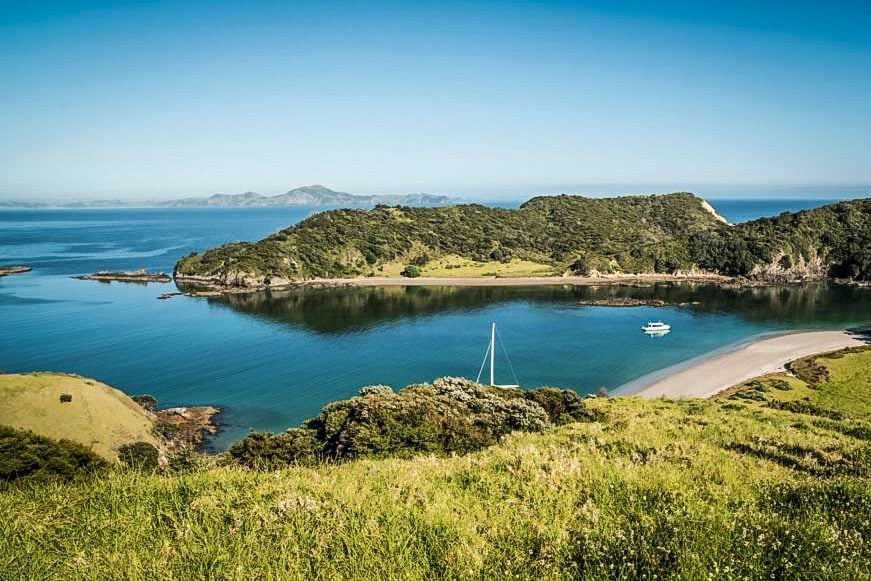
The 144 islands that make up this subtropical region are full of cute seaside towns and marine wildlife . The Bay of Islands is also historically significant, as this is where the Treaty of Waitangi (New Zealand’s founding document) was signed in 1840.
Cape Reinga
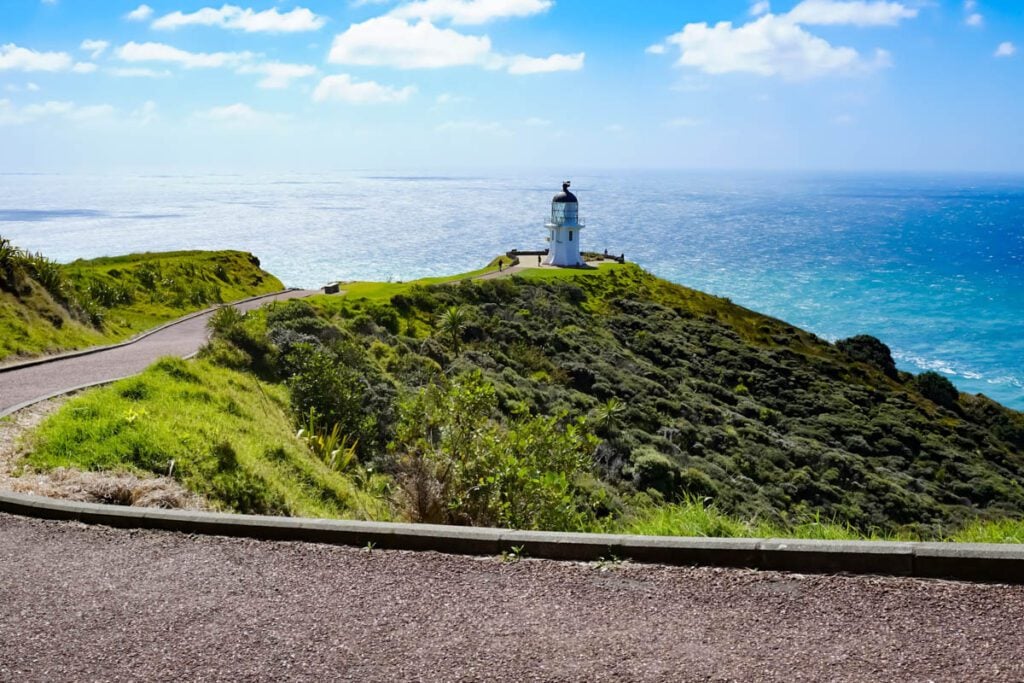
The Tasman Sea meets the Pacific Ocean at the northern tip of the North Island. The mesmerizing collision of currents makes it easy to see why Cape Reinga is a site of deep spiritual significance in the Maori tradition.
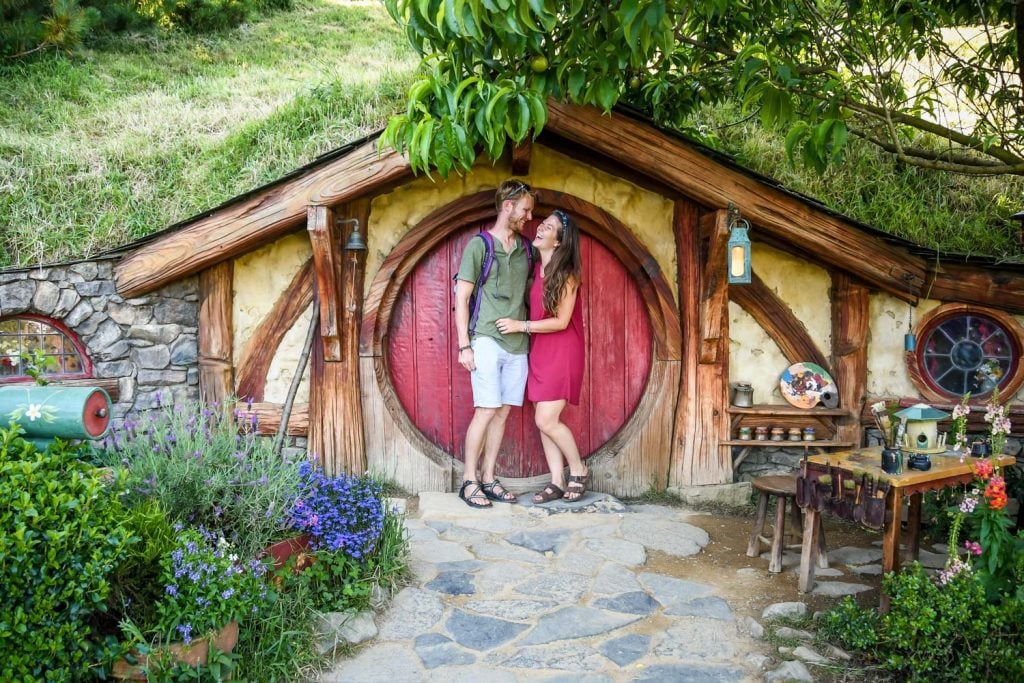
If you haven’t heard of Hobbiton, you may be living under a rock (or a hill!)… The Lord of the Rings film set is one of New Zealand’s most popular tourist attractions, complete with life-sized hobbit holes , magical gardens, and the iconic Green Dragon Inn.
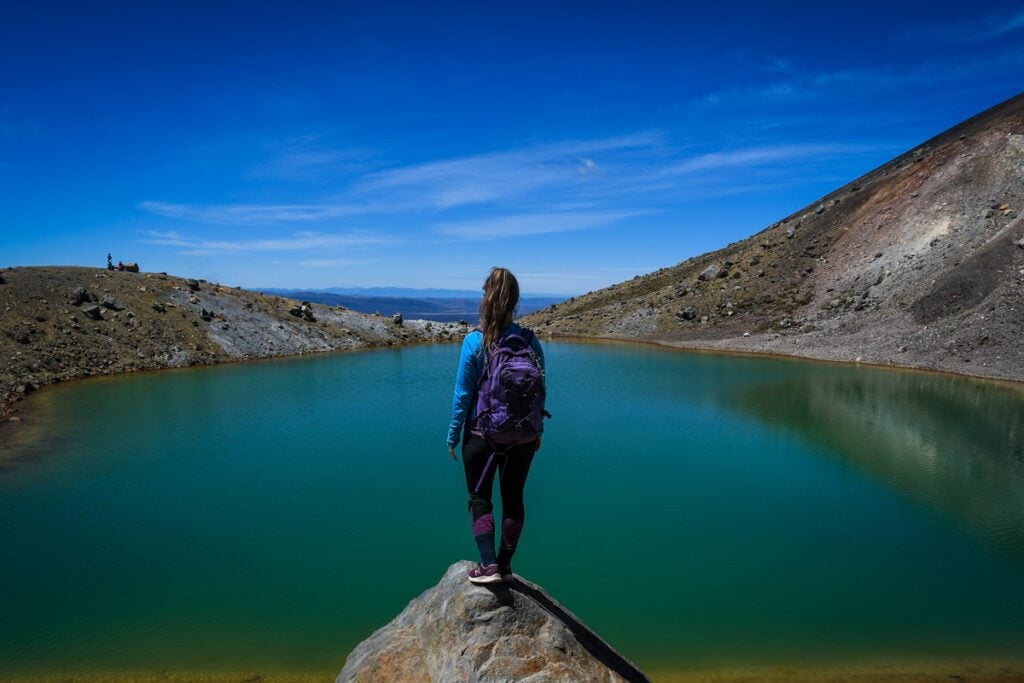
Nestled in the heart of the North Island’s volcanic plateau, the deep blue waters of New Zealand’s largest lake provide a scenic backdrop for swimming and boating. On the north shore of the lake, the town of Taupo serves as a gateway for Tongariro National Park, home to New Zealand’s best day hike .
Hawke’s Bay
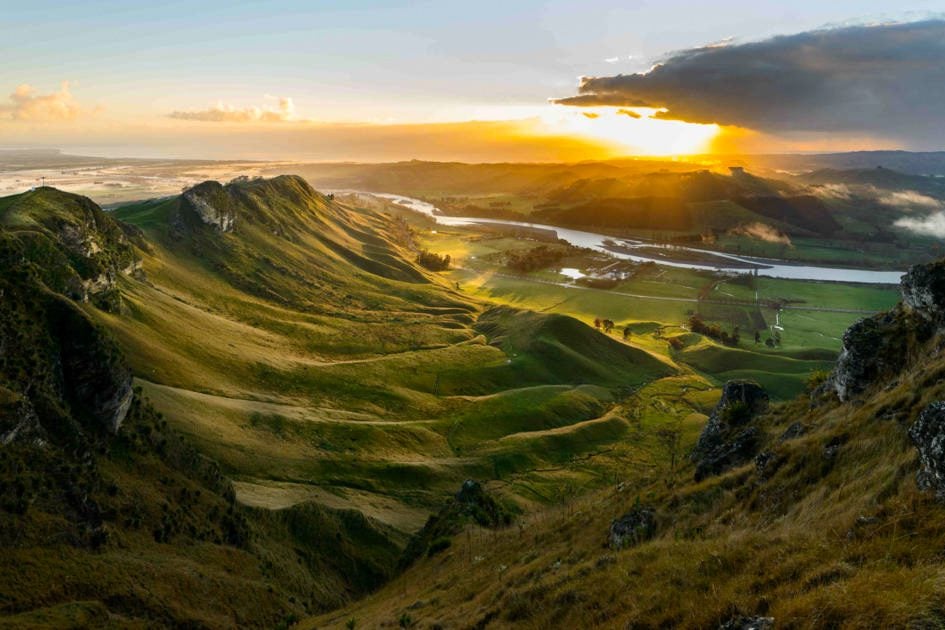
Hugging the North Island’s east coast, the region of Hawke’s Bay is known as “New Zealand’s Food and Wine Country” for good reason. With 200+ vineyards and 70+ wineries, Hawke’s Bay is one of the Great Wine Capitals of the World.
Not a fan of vino? You won’t be left wanting for other choices – craft beer, distilleries, fresh juices, cafes, and some of the country’s best restaurants – you’ll find it all in Hawke’s Bay.
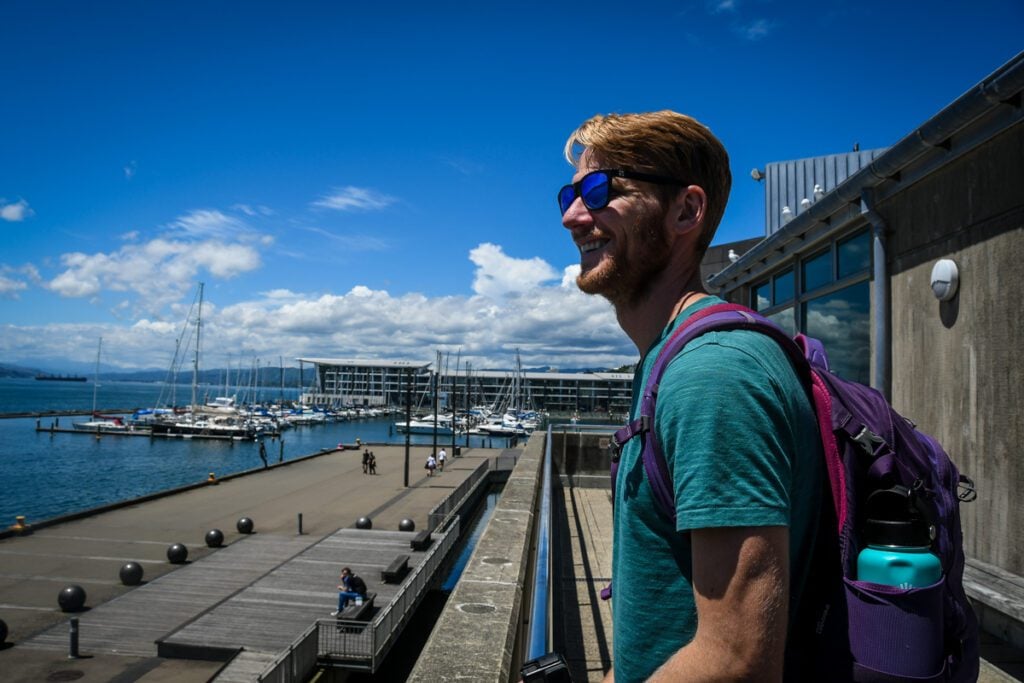
New Zealand’s capital is a compact but thriving harbor city at the southern tip of the North Island. Caffeine fiends (like us!) will enjoy the city’s famous coffee culture , while foodies (also us!) can indulge in an eclectic dining scene .
There are plenty of opportunities for cultural immersion in the urban hub with museums, galleries, theaters, and live music venues, as well as chances to explore the city’s natural surroundings.
Read more in our Wellington Travel Guide .
South Island
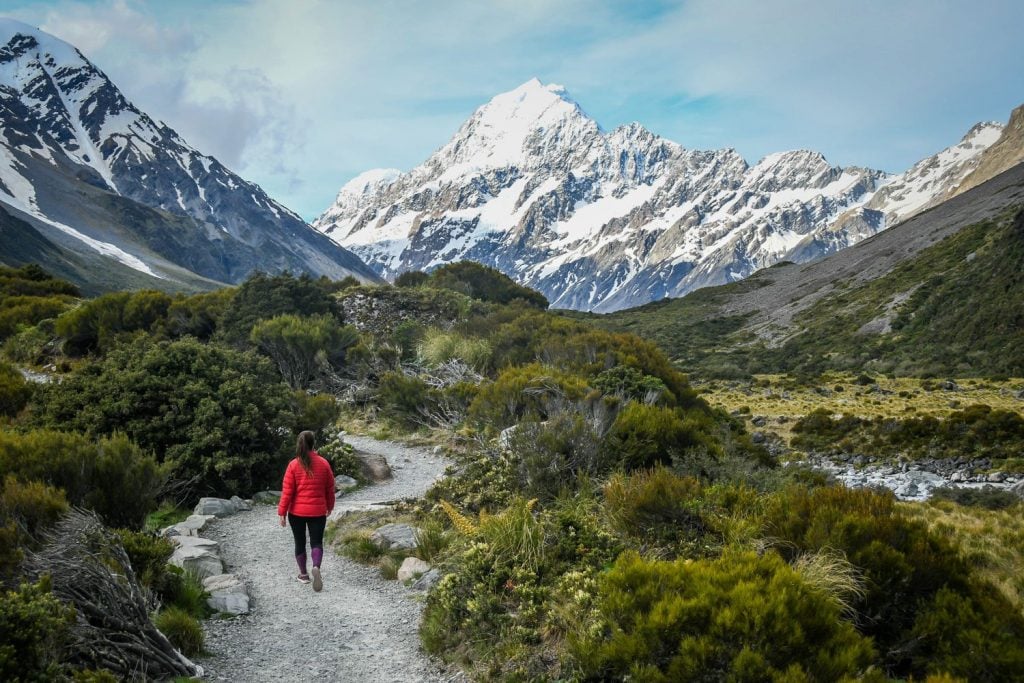
With picturesque fjords, snow-capped mountains, temperate rainforests, and black sand beaches, New Zealand’s South Island is a nature-lover’s paradise.
We’ve created an action-packed 2-week South Island New Zealand itinerary that hits the major highlights and gets off the beaten path.
We even included tips for altering it to fit a shorter trip, and recommendations for what to see if you have more than two weeks to explore!
Below are some of the places we’d recommend including in your travels on New Zealand’s South Island.
Christchurch
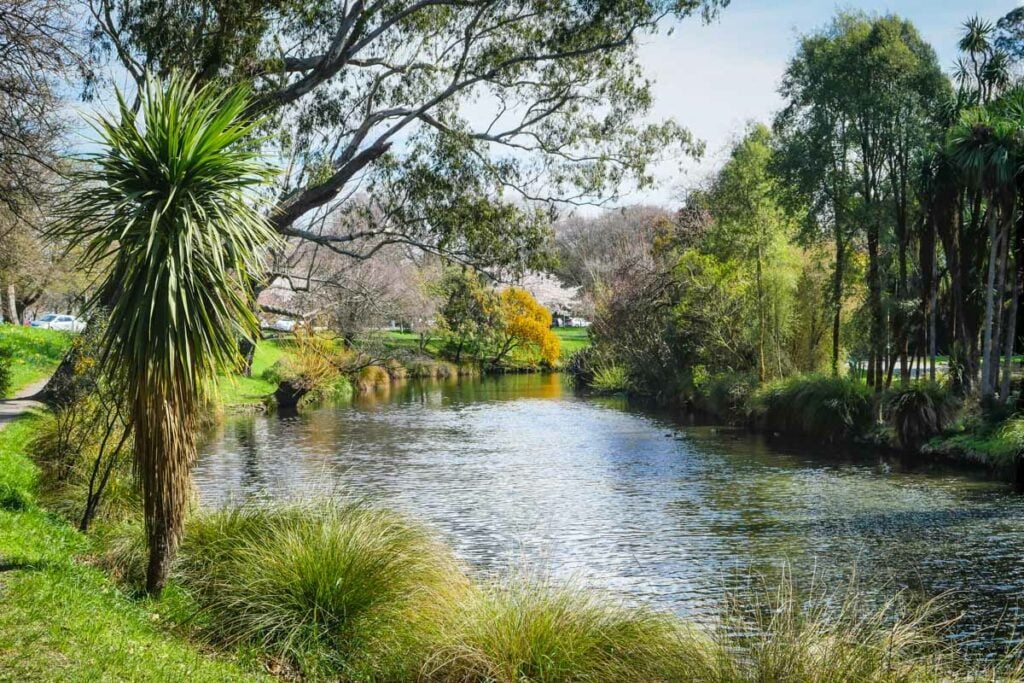
Known as the “Garden City” for its parks, green spaces, and famous Botanic Gardens , Christchurch is a lively city with a buzzy vibe.
Rebuilding efforts following the devastating earthquakes of 2010 and 2011 focused heavily on environmental initiatives and Christchurch has since become a shining example of innovative urban planning and sustainability .
Lake Tekapo
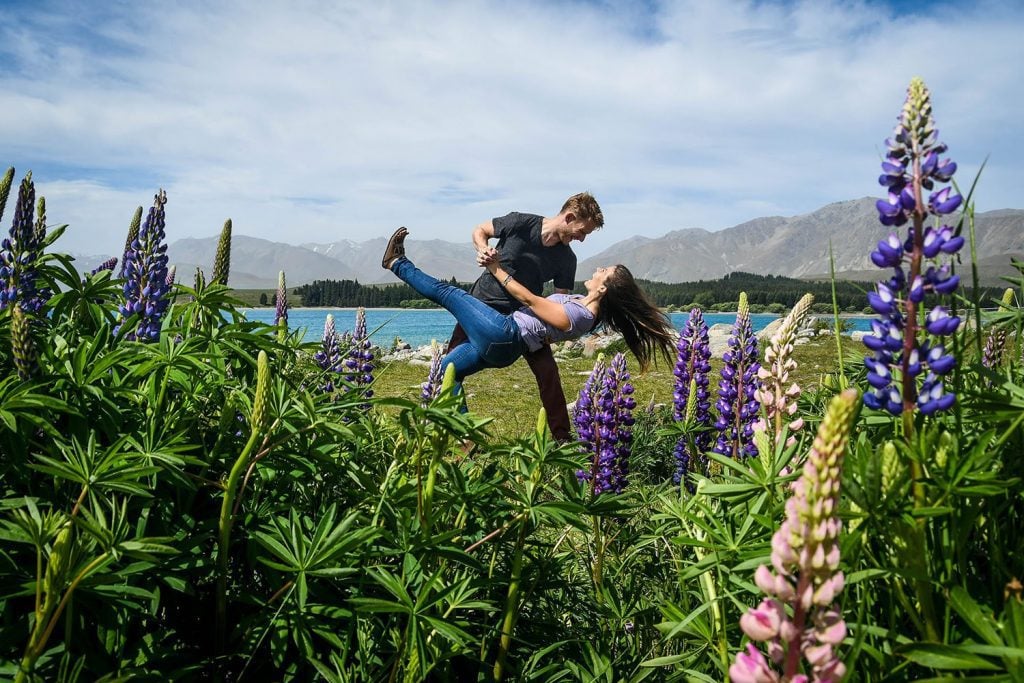
Situated in a UNESCO Dark Sky Reserve and surrounded by the rugged Southern Alps, Lake Tekapo offers a tranquil escape on the South Island. With turquoise glacial waters by day and dazzling star-filled skies by night, the scenery at Lake Tekapo is nothing short of breathtaking.
Lake Pukaki
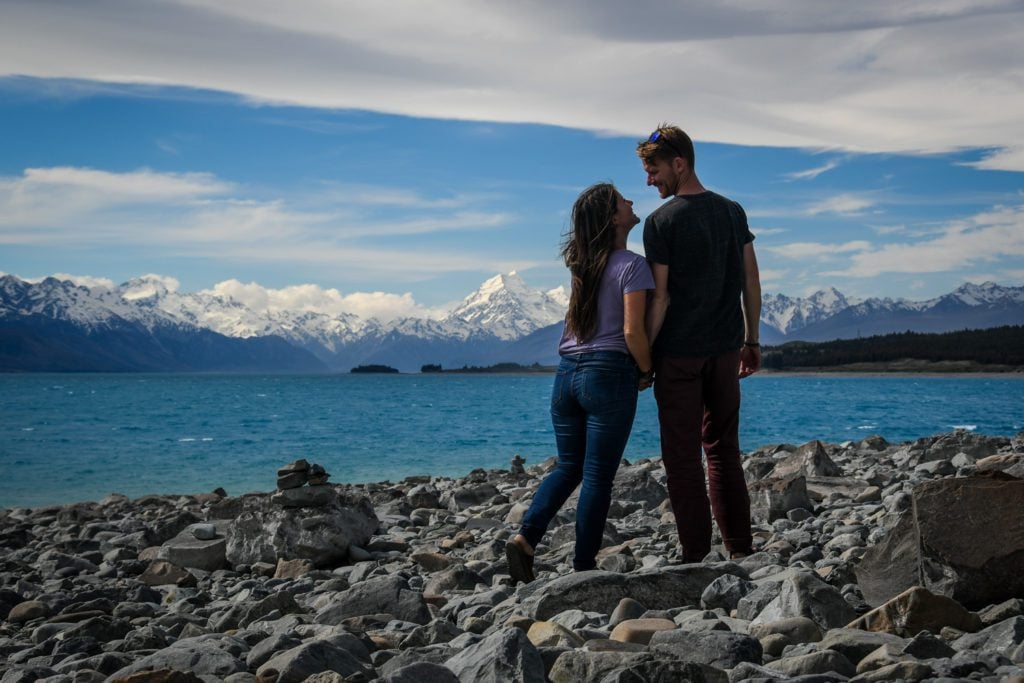
Another stunning alpine lake, the vivid turquoise color of Lake Pukaki is caused by “rock flour” suspended in the meltwater from the Tasman and Hooker glaciers. Its postcard-worthy surroundings and proximity to Aoraki Mount Cook National Park make Lake Pukaki a must-visit destination for nature lovers and outdoor enthusiasts.
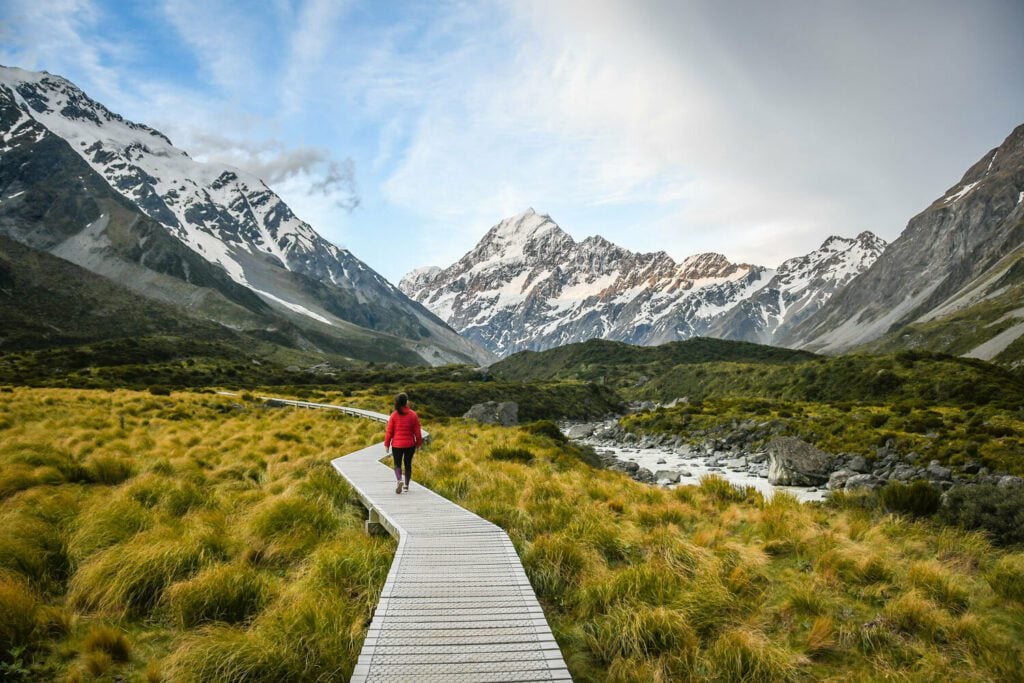
At 3,724 meters (12,218 feet), Mount Cook is New Zealand’s highest peak and the crown jewel of Aoraki Mount Cook National Park. It’s a haven for hiking and mountaineering; in fact, the majestic peak famously aided Sir Edmund Hillary in preparing to summit Everest. But don’t worry, you don’t have to be a legendary mountain climber (or even a hiker) to enjoy the park’s breathtaking glacial vistas and alpine scenery.
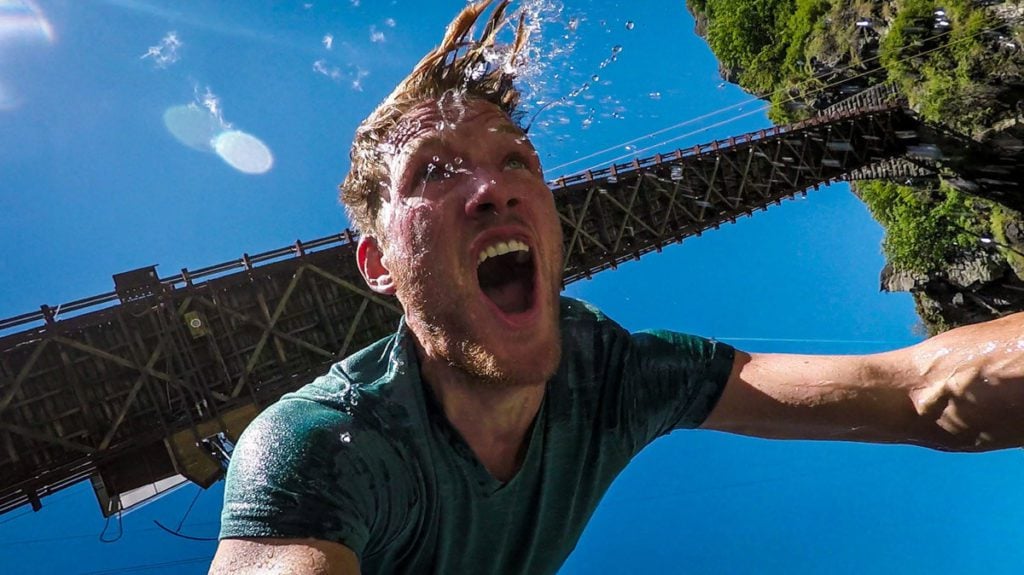
Not only is Queenstown credited as the birthplace of bungee jumping , it also offers a plethora of other heart-pumping activities, earning itself a reputation as the “Adventure Capital of the World”. Not an adrenaline junkie? No problem! From cultural activities to culinary adventures, there are plenty of things to do in Queenstown for all ages and interests.
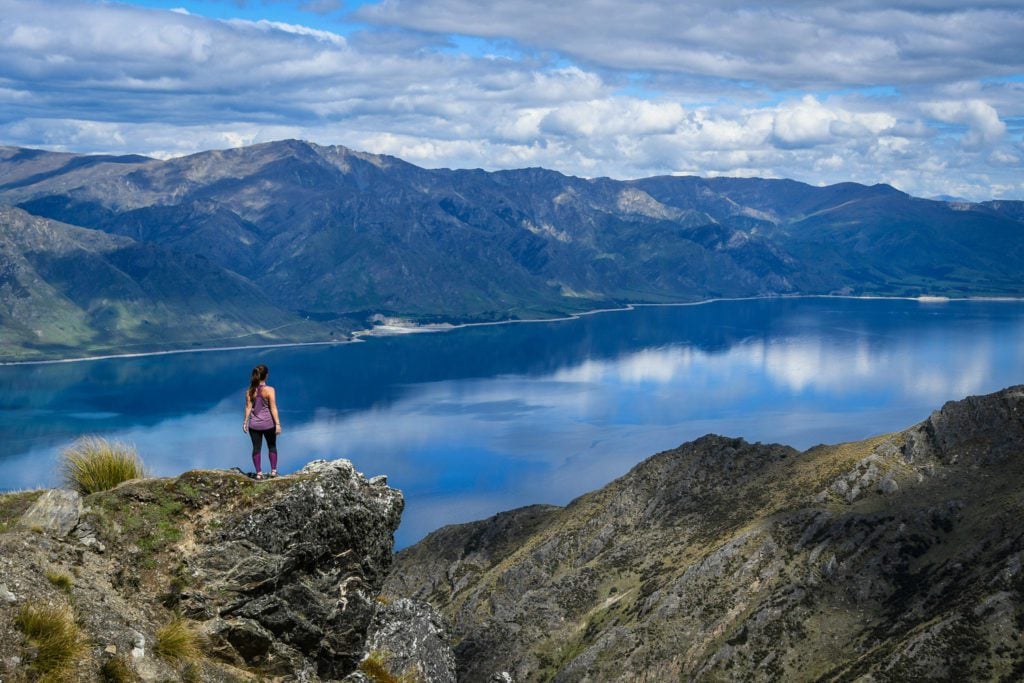
Nestled on the shore of its namesake lake, Wanaka is a charming resort town with a proud craft beer culture. In the evenings, you can find outdoor enthusiasts enjoying a pint in one of the local breweries after a day of hiking, mountain biking, skiing (winter), or water sports (summer).
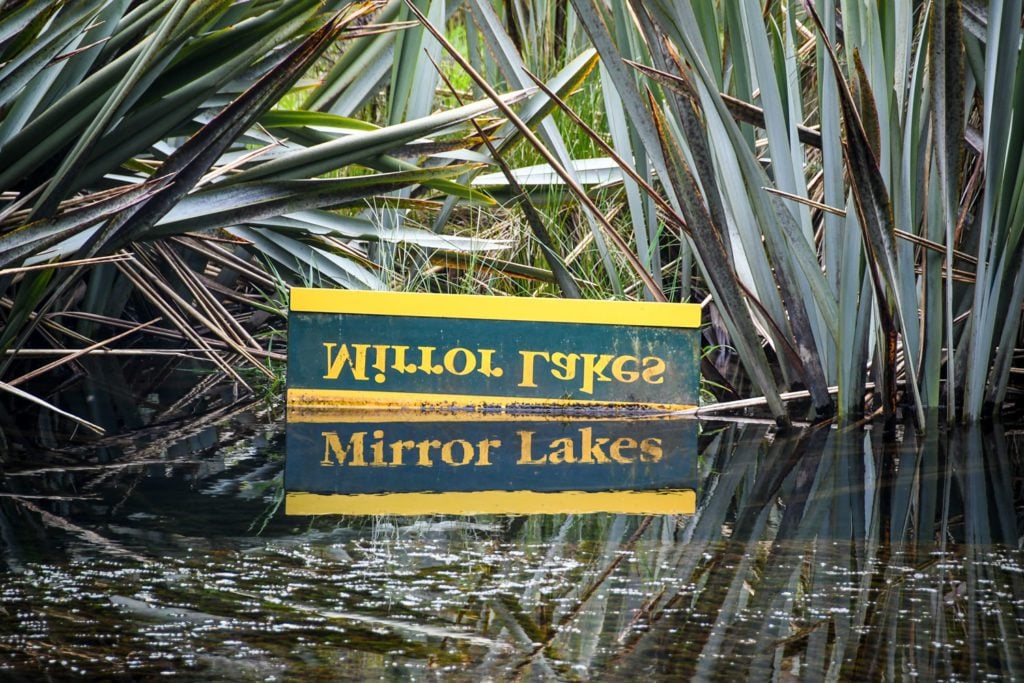
This idyllic lakeside town is the perfect base for exploring some of New Zealand’s most iconic natural attractions, such as Fiordland National Park, Milford Sound, and 3 of the country’s 10 Great Walks. Meanwhile, Te Anau itself offers both relaxing and adventurous activities, including l ake cruises, glowworm caves, and a bird sanctuary .
Milford Sound & Fiordland National Park
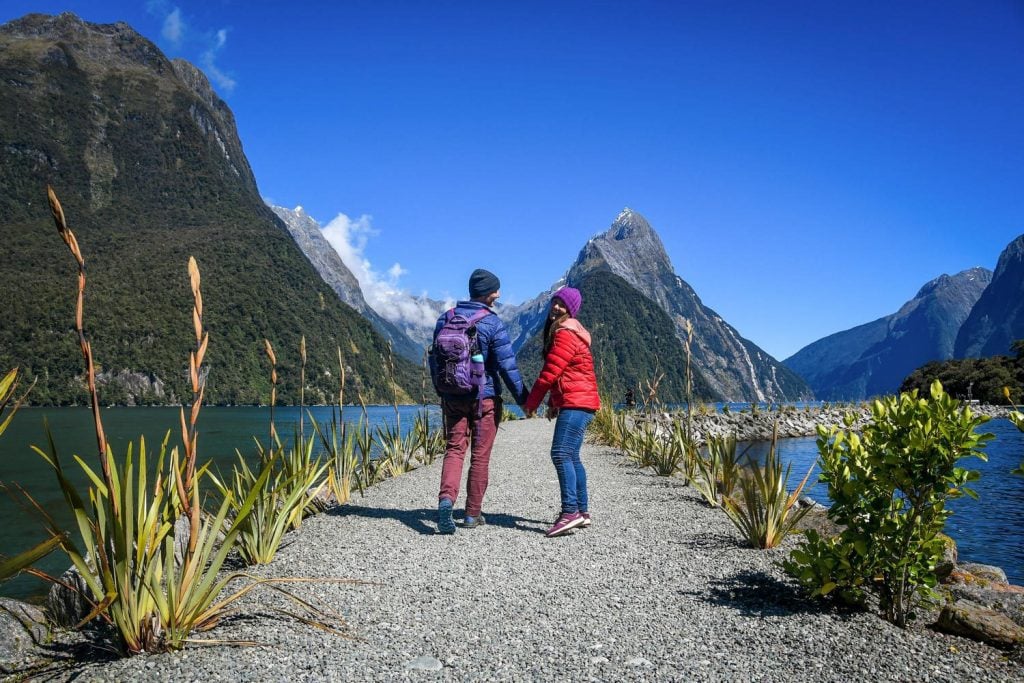
Fiordland National Park is a UNESCO World Heritage Area known for its untamed wilderness and biodiversity , and Milford Sound is the star of the show. With towering cliffs, cascading waterfalls, and verdant rainforests, Milford Sound is one of the most breathtaking natural attractions in the world.
Read more in our Milford Sound series:
- Milford Sound Cruise Guide
- Milford Sound Travel Guide
- Queenstown to Milford Sound Road Trip Guide
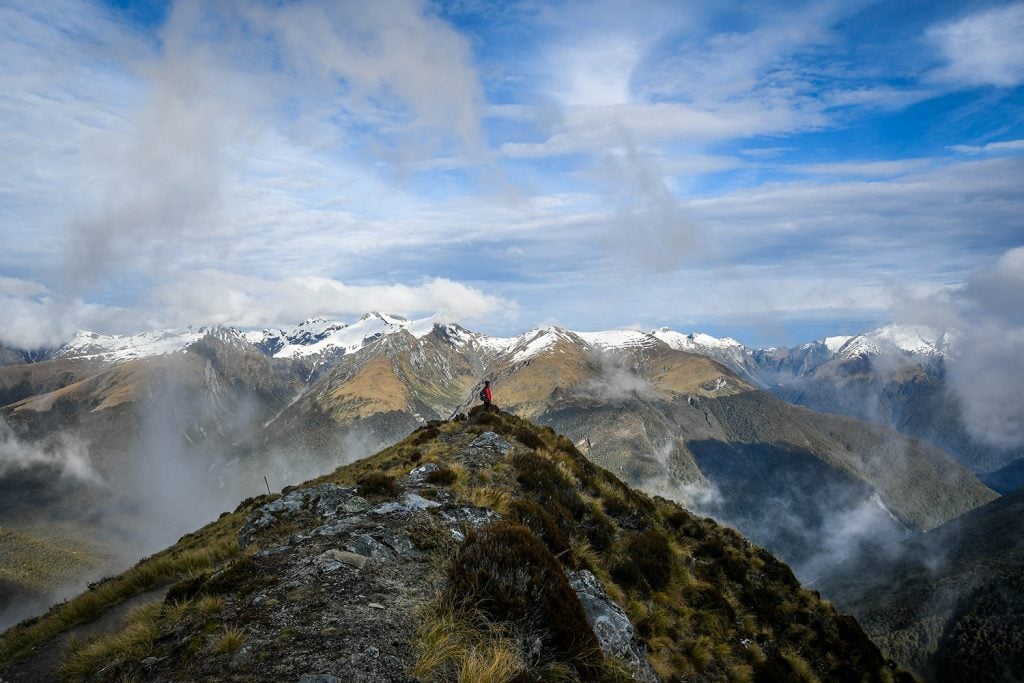
First thing’s first: “West Coast New Zealand” is a specific region, stretching from Haast to Kahurangi National Park on the South Island’s – well – west coast.
Okay, now that that’s cleared up…
The West Coast was one of our favorite regions in the country, a wild and untamed wilderness ranging from glaciers and snow-capped alps in the south to palm trees and white sand beaches in the north.
Read more in our West Coast Travel Guide .
Lake Rotoroa
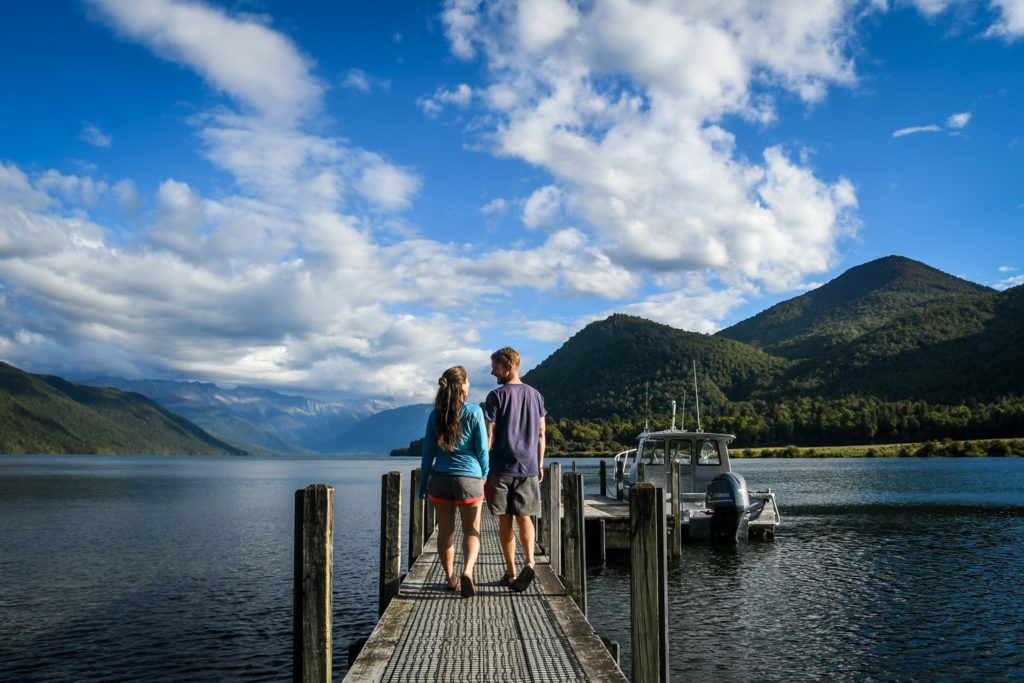
Enveloped by soaring mountain peaks and thick beech forests , Lake Rotoroa offers a remote escape 40 minutes from the nearest village of St. Arnaud. The surrounding Nelson Lakes National Park is threaded with trails ranging from leisurely walks to strenuous hikes. Bring your binoculars for birdwatching!
Abel Tasman
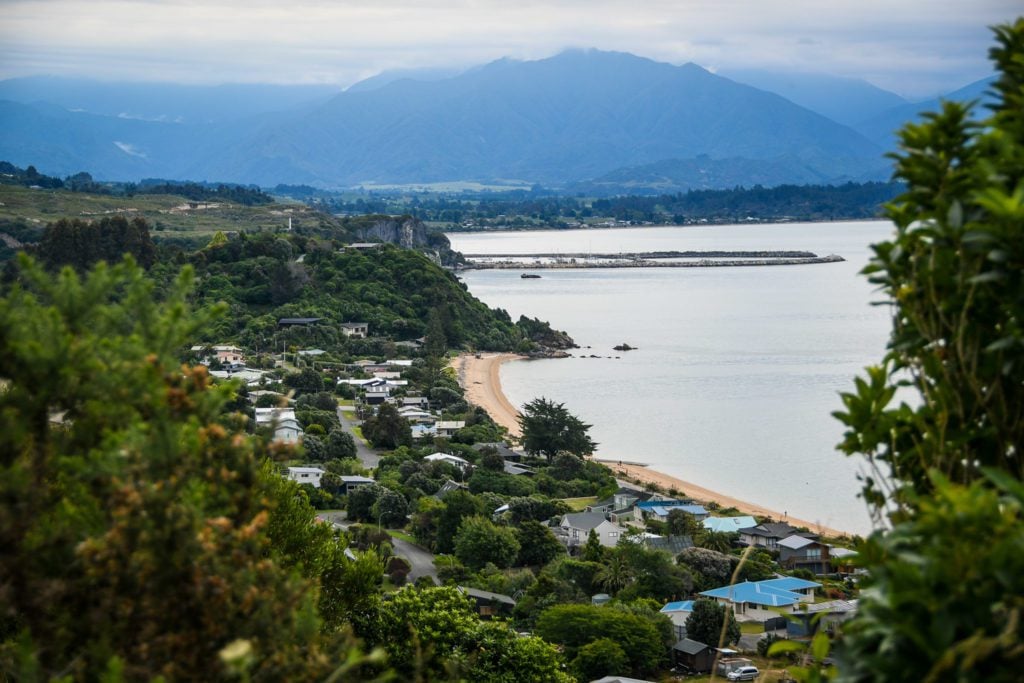
New Zealand’s smallest national park packs a big punch with golden sandy beaches, clear turquoise waters, and lush native forests. This coastal paradise holds secluded coves and hiking trails that are perfect for kayaking and spotting wildlife, such as dolphins and fur seals .
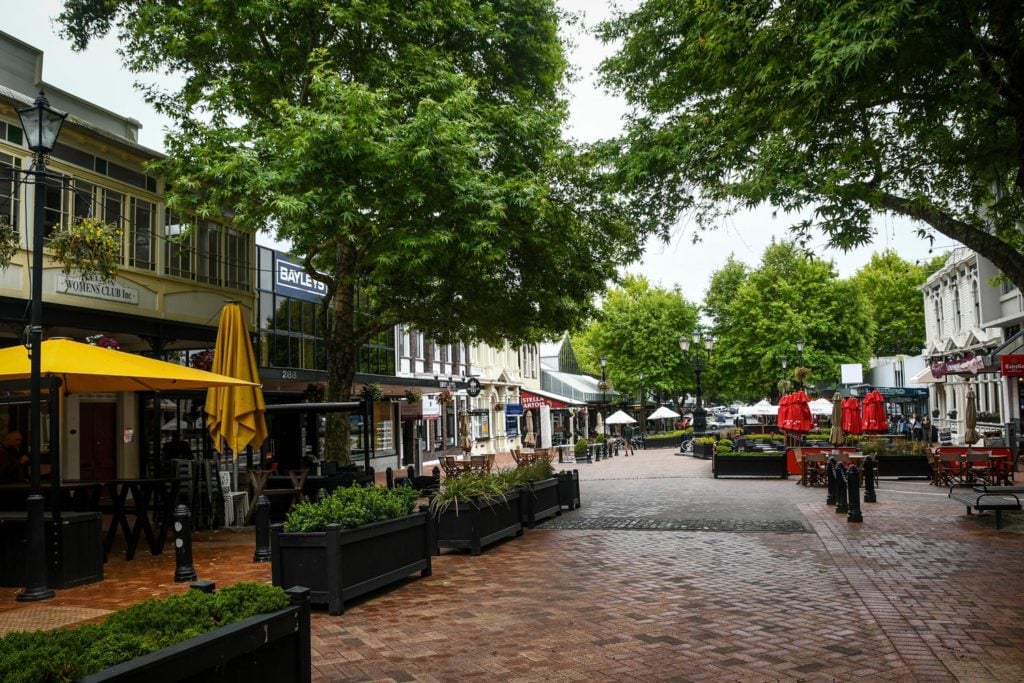
Situated on the shores of the South Island’s Tasman Bay, New Zealand’s sunniest city is a hub for artists and craftspeople of traditional, Maori, and contemporary persuasion. Visit the weekend markets for a chance to taste artisanal products and find a handcrafted souvenir to take home.
Marlborough
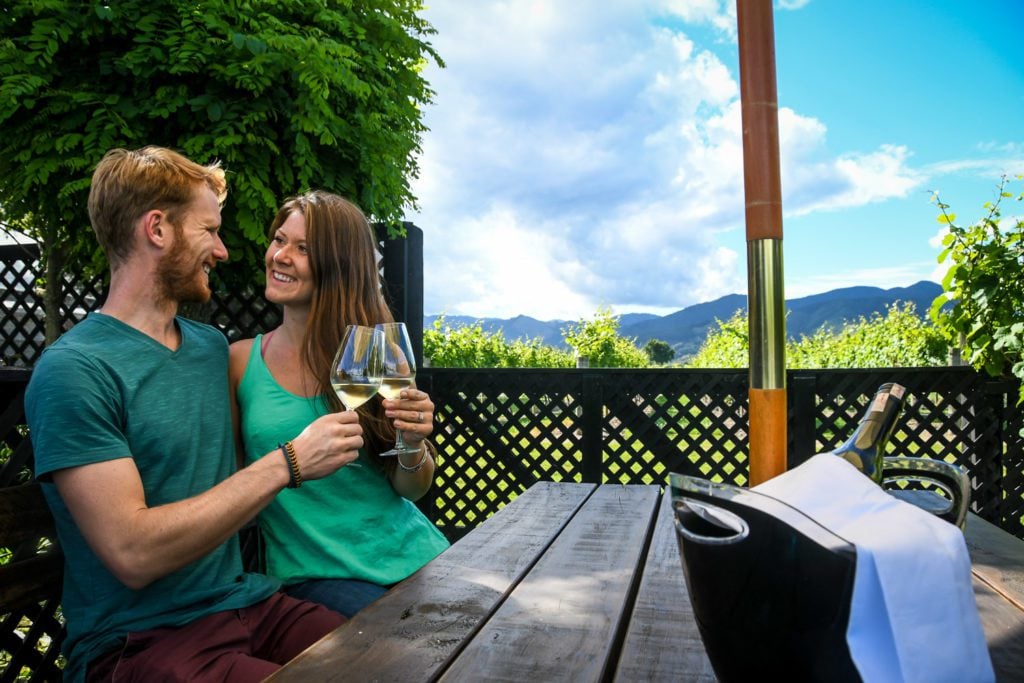
As New Zealand’s largest wine region, Marlborough is best known for its Sauvignon Blanc and fresh seafood (a match made in heaven!), as well as its diverse and stunning scenery. Rolling vineyards give way to the Marlborough Sounds, an intricate network of sheltered waterways and island sanctuaries that are home to dolphins, whales, seals, and the iconic kiwi bird.
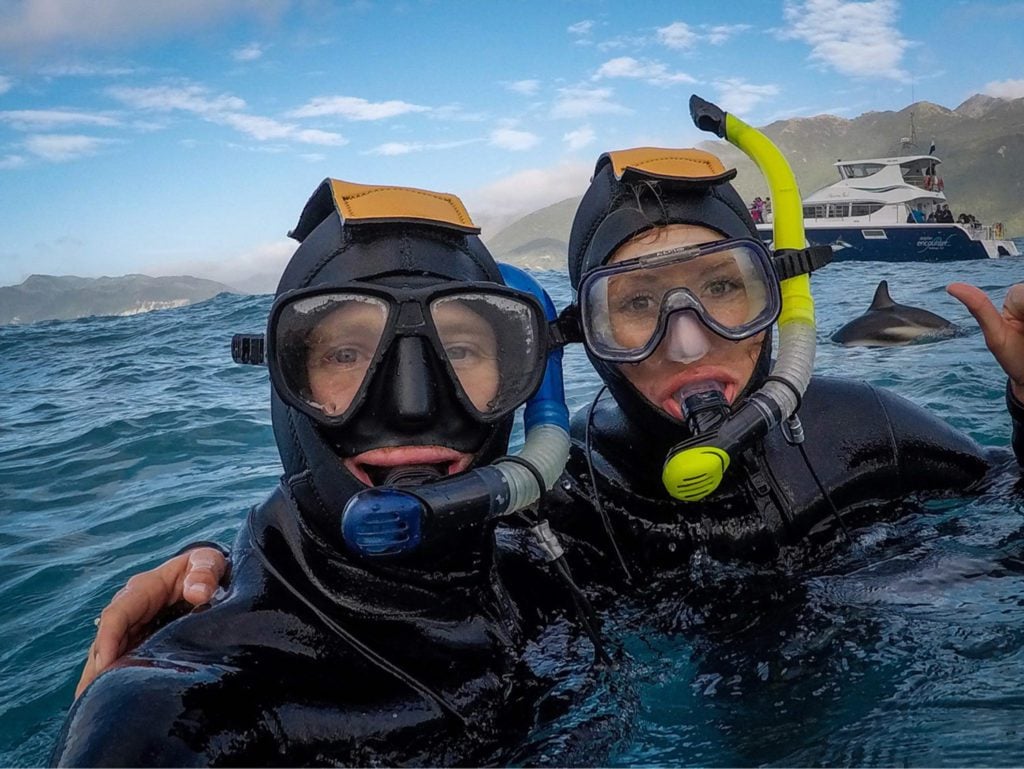
The coastal town of Kaikoura is renowned as one of the best places in the world for marine wildlife encounters, including whale watching and swimming with dolphins (ethically!). The abundant marine life coupled with its striking position between the dramatic Kaikoura Ranges and the Pacific Ocean make this a truly one-of-a-kind destination.
Dunedin and Otago Peninsula
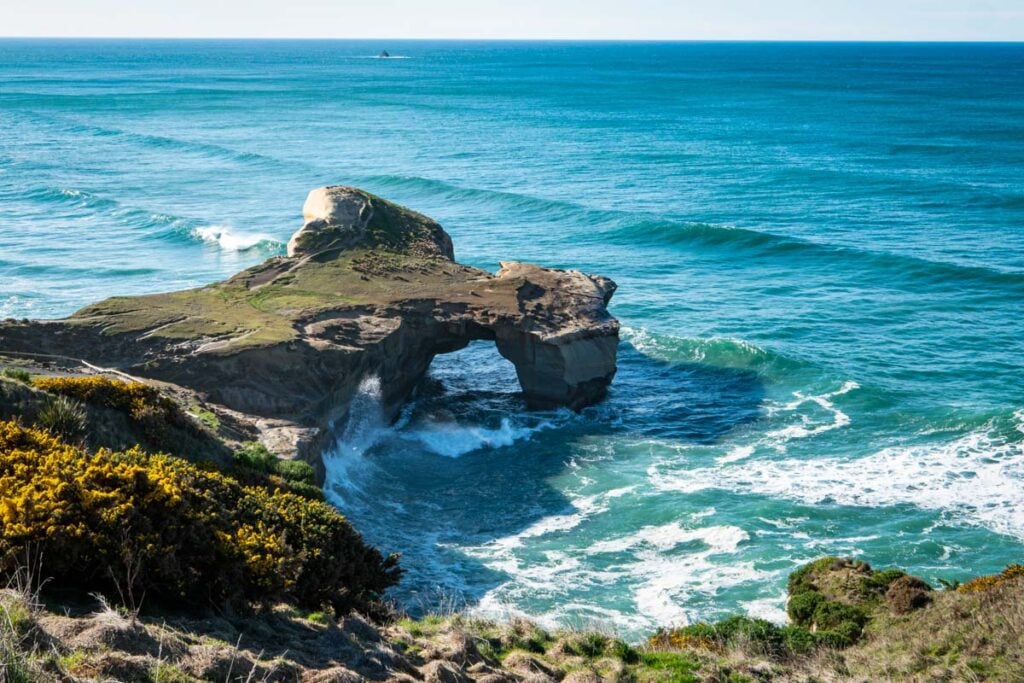
Dunedin rests at the head of a sheltered harbor, cradled by the Otago Peninsula on the South Island’s eastern shore. The city is steeped in Scottish heritage and historic architecture, including New Zealand’s only castle.
On the Otago Peninsula, scenic drives and hikes offer opportunities to view penguins, seals, sea lions, and albatross in their natural habitats.
Stewart Island
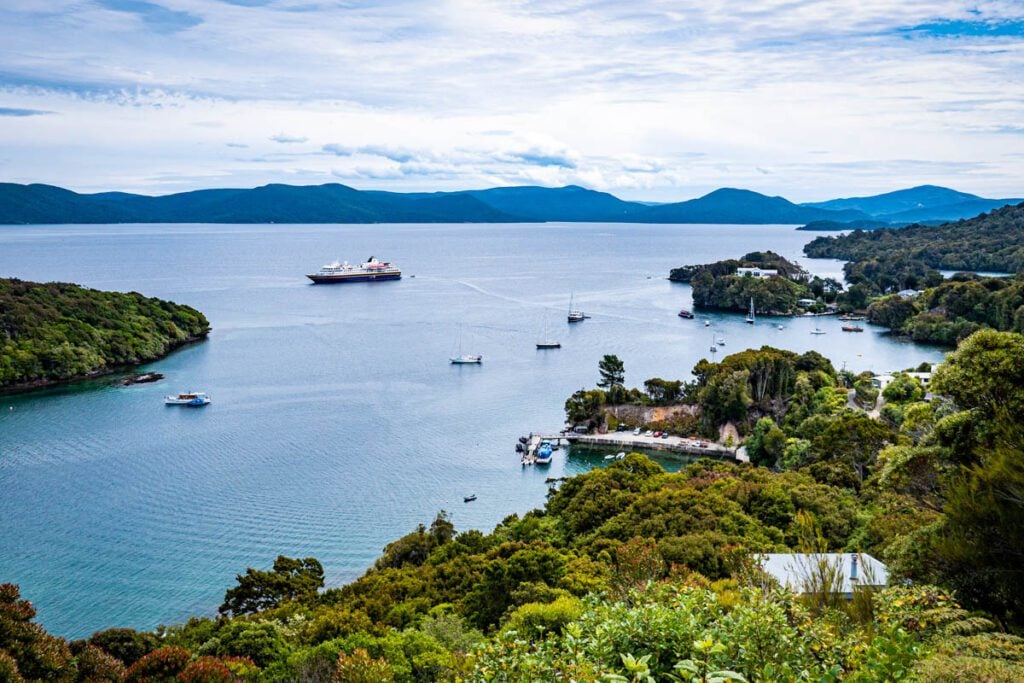
Located 30 kilometers south of New Zealand’s South Island, Stewart Island is a perfect place to get away from civilization. This remote island is known for excellent bird spotting, hiking, stargazing , and the peace that comes with being on an island with just 400 permanent residents.
Great Barrier Island
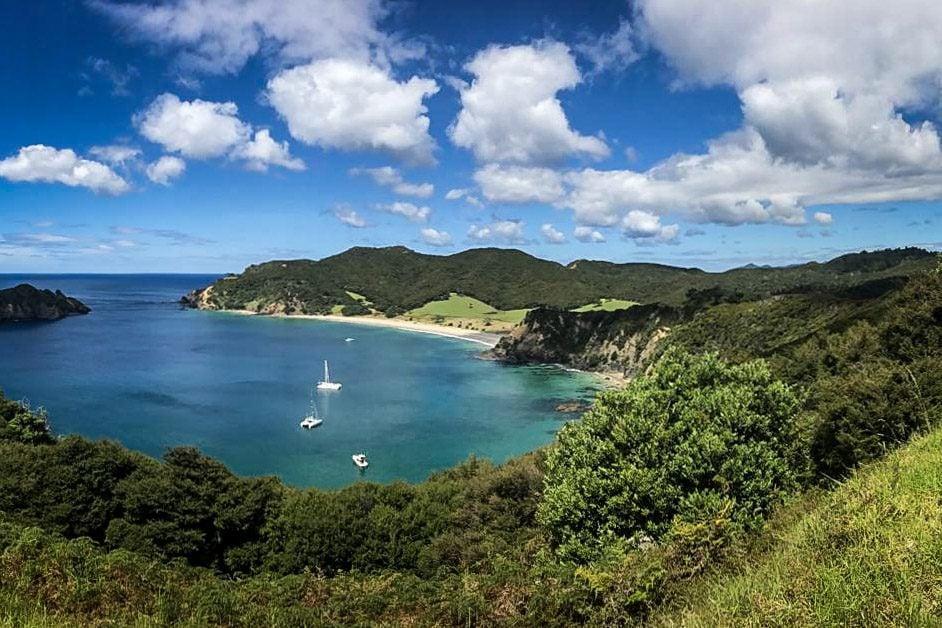
For picture-perfect beaches, untouched forests, and secluded bays, Great Barrier Island is a place to get away from it all. This tropical-feeling island is completely off-grid and has a population of 1,000 people. Getting here requires a 4.5-hour ferry ride from Auckland or a 30-minute flight.
When to go to New Zealand
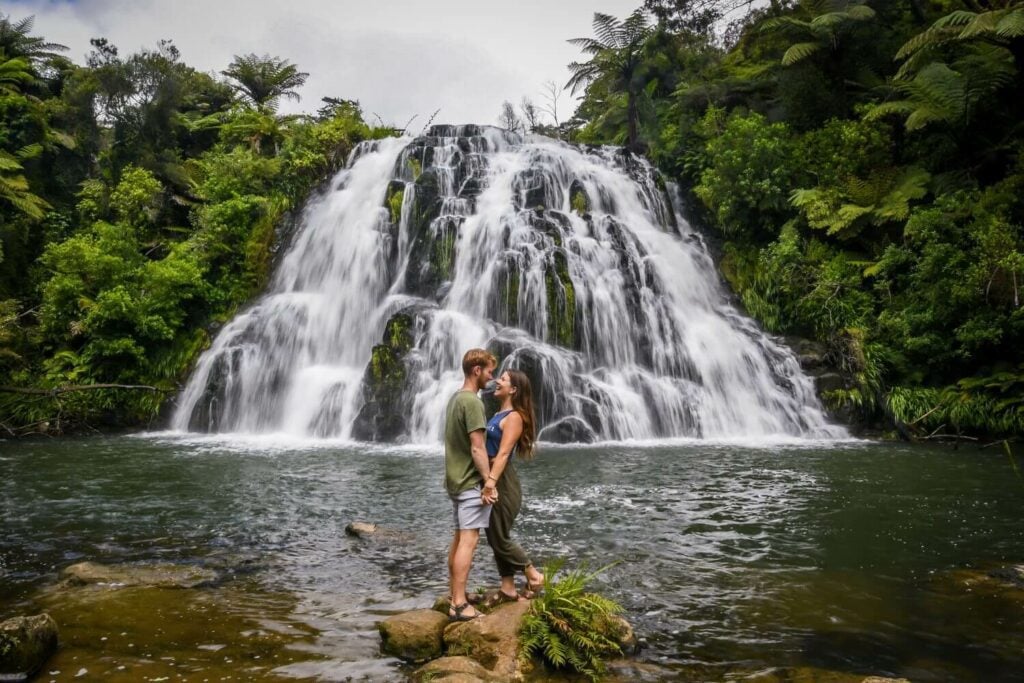
Spring (December – February) in New Zealand means temperatures are warming up and the days are getting longer. This is also lupin season, which is a big draw for photographers.
Summer (January – March) brings long and sunny days with warmer temperatures — great for hiking and long days at the beach.
Fall (March – May) is a great time to avoid high season crowds (and prices!) while still having enough daylight and comfortable temps to enjoy an array of outdoor activities.
Winter (June – August) in New Zealand is great for winter sports like skiing and snowboarding. Or if you are on a tight budget, this season brings the most discounted rates and the fewest crowds of the year.
Our personal pick would be to plan your New Zealand itinerary during the shoulder season between spring and summer (November/December).
For an in-depth guide on the regional seasons, weather patterns, and other factors, check out our complete guide to the best time to visit New Zealand .
Car vs. Campervan: How to get around on your New Zealand itinerary
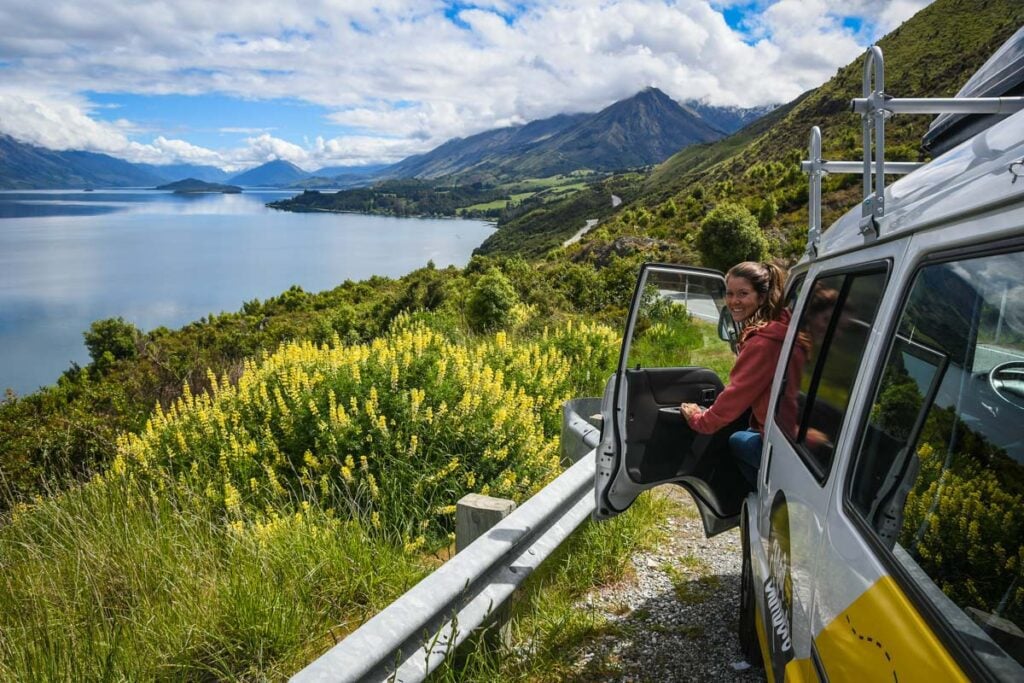
Though public transportation in New Zealand is pretty good, having your own set of wheels is hands-down the best way to explore the country for a few reasons:
- You can see hidden gems and get off the beaten path.
- You’ll be able to travel on your own schedule, and getting from point A to point B is faster.
- Driving in New Zealand is easy and parking is plentiful.
Now that we’ve established you’re renting a vehicle, you might be wondering, car or campervan?
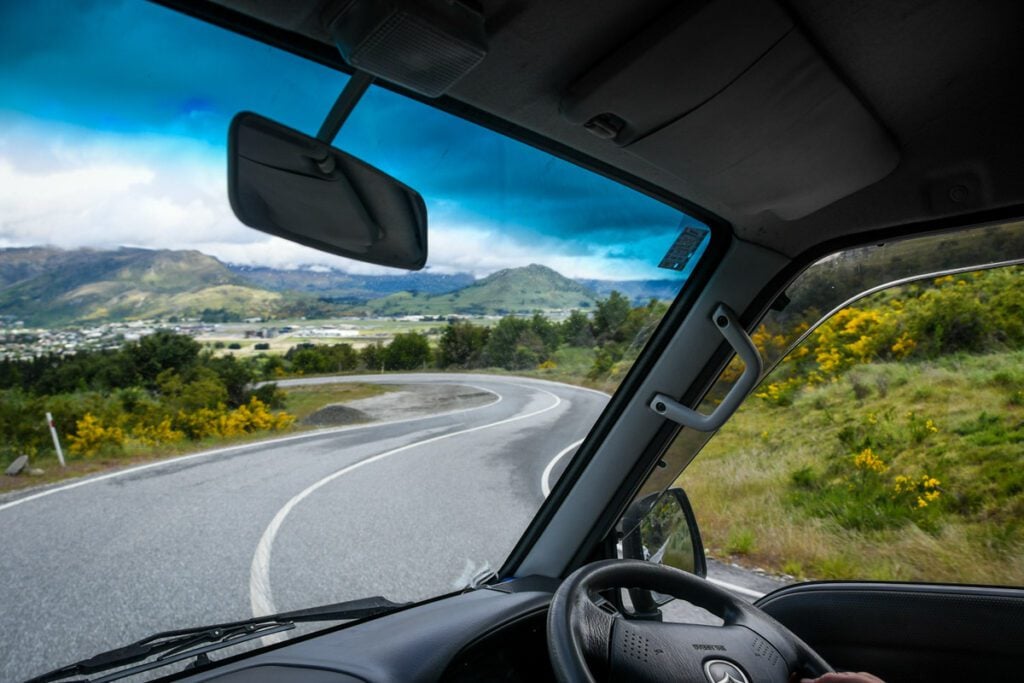
Renting a car in New Zealand is fairly straightforward, but it has a few little quirks that might surprise you, even if you’re a pro at car rentals. We put together a huge guide to New Zealand car rentals to share all our insider information with you, including things we wish we’d known before our trip.
The main advantage of renting a car (as opposed to a campervan) is that a smaller vehicle is generally easier to drive and park. And unless you’re really into campervans (like us!), you’re probably more used to driving a car and might be more comfortable with this option.
Be sure to book your rental car and any rental gear before your trip begins. And don’t forget travel insurance ! Picking a policy that covers your rental car is often cheaper than buying a separate policy through the rental company.
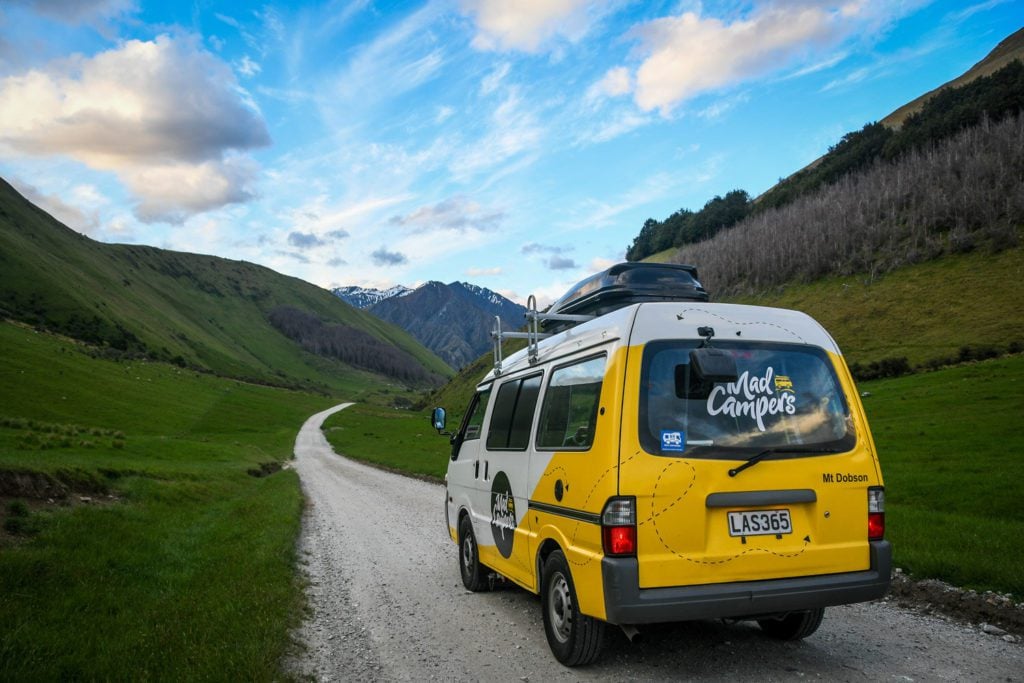
We personally traveled by campervan for 5 weeks in New Zealand and loved every minute of it! We think it’s the best way to explore this glorious country. Here are a few reasons why we love it:
- It’s easy. There are few countries in the world as well set up to accommodate campervans as New Zealand, and there are tons of places to camp (some of which are free!).
- You can save money. When you see the price tag attached to a campervan rental, you’ll probably think “Whaaat?! That ain’t cheap!” But what you have to remember is that this is your rental vehicle and your accommodations all in one!
- You can save money (again). Is there an echo in here? You can also save money in a campervan by cooking your own meals , so I think it’s worth repeating!
- It’s the adventure of a lifetime! Campervan travel adds a level of freedom even beyond driving a car, as well as experiences you won’t get at a hotel. It’s magic. Trust me.
If this got your attention, we have a guide to the best campervan rentals in New Zealand that walks you through your rental options and what to look out for. We’ve even included an exclusive discount for our readers!
We also put together a HUGE guide to planning your New Zealand campervan trip with tons of insider tips and advice. Make sure to give it a read before booking your trip!
Where to start and end your New Zealand itinerary
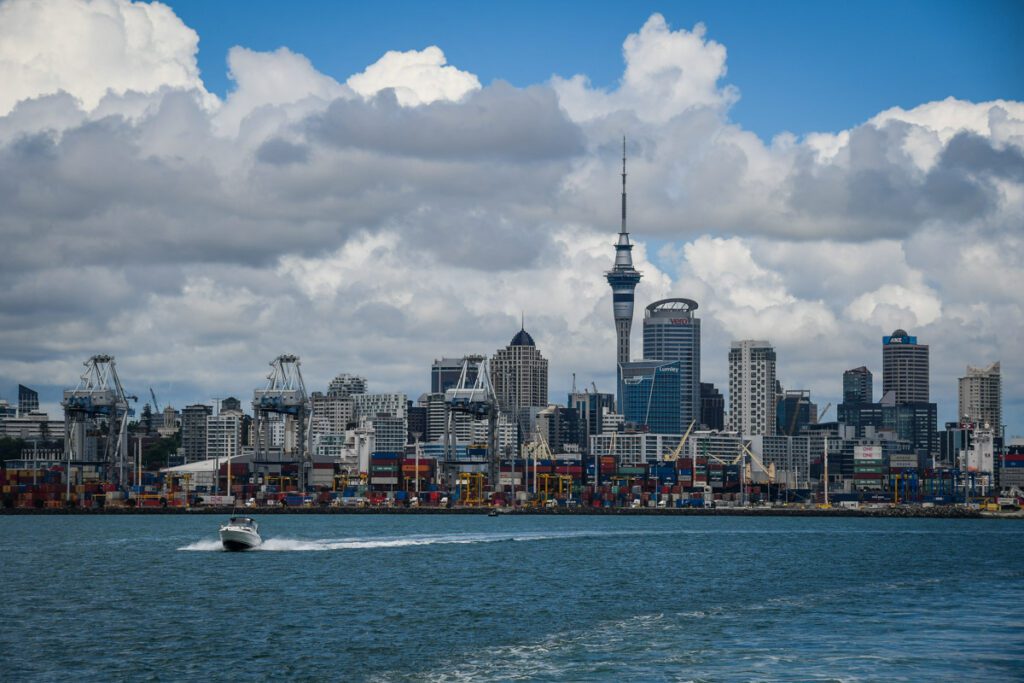
Deciding where to start and end your travels is another factor you’ll want to consider when planning the perfect New Zealand itinerary.
New Zealand has quite a few international airports – there’s one in just about every major city. So you’ll have a lot of options to choose from.
We’ve done the research, and we personally recommend starting your itinerary in Auckland .
For starters, you’ll likely fly into Auckland, since it has the biggest international airport. And as New Zealand’s largest city, you’ll find a wide selection of rental cars and campervans you can pick up in Auckland.
However, if you want to start your road trip somewhere else, Wellington, Christchurch, and Queenstown also have plenty of options for campervan pickups.
We’ve designed our 1-month New Zealand itinerary to begin in Auckland and end in Christchurch. Some rental companies will allow you to pick up and return your vehicle in different locations (sometimes for a fee). If not, you can always hightail it back to Auckland to return your rental.

Cook Strait Ferry
The Cook Strait Ferry operates between the North and South Islands in New Zealand, connecting the cities of Wellington and Picton. The ferry service provides both passenger and vehicle transportation, making it a vital link for travelers exploring both islands.
Not only is it an efficient way to get from one island to the other (especially if you are traveling by campervan or car), the ferry is an iconic journey across the Cook Strait with incredible views. Many people believe it’s the most scenic ferry crossing in the world!
How many days is enough for New Zealand?
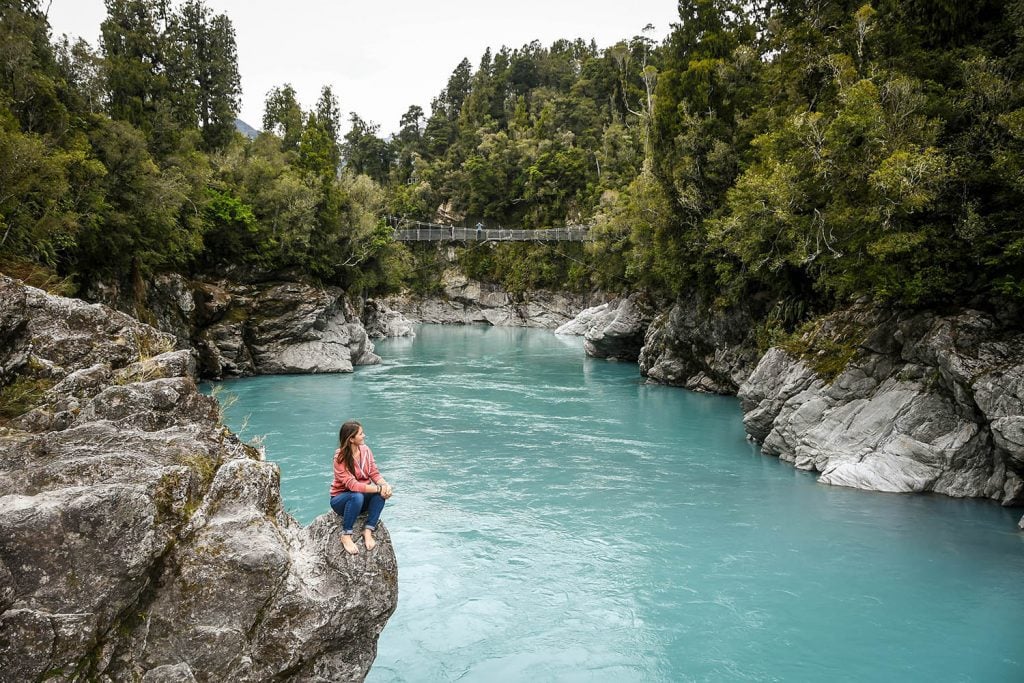
This is a tough one to answer because even a lifetime wouldn’t be enough. Seriously.
We spent 5 weeks traveling around New Zealand in a campervan, and we’ve been lucky enough to experience a lot of what this country has to offer. Even so, we still left with a loooong list of things to do “ next time ”.
That said, we do have some suggestions based on the amount of time you have to explore New Zealand:
1 Week New Zealand
If you have just one week, we recommend focusing on a specific area. Base yourself in a city like Queenstown or Auckland and plan for a couple of day trips.
2 Weeks New Zealand
Choose one island to explore. We have perfect 2-week itineraries ready-to-go for both the North Island and South Island . All the hard work is done for you!
1 Month New Zealand
We think a month is ideal for your first trip to New Zealand . With our 30-day New Zealand road trip itinerary , you’ll experience a good chunk of the country’s must-sees and hidden gems (we have lots!).
5+ Weeks New Zealand
Extra time? Even better! Our 1-month New Zealand itinerary is packed with insider tips to customize your trip , including what to add if you have more time.
What is a typical travel budget for New Zealand?
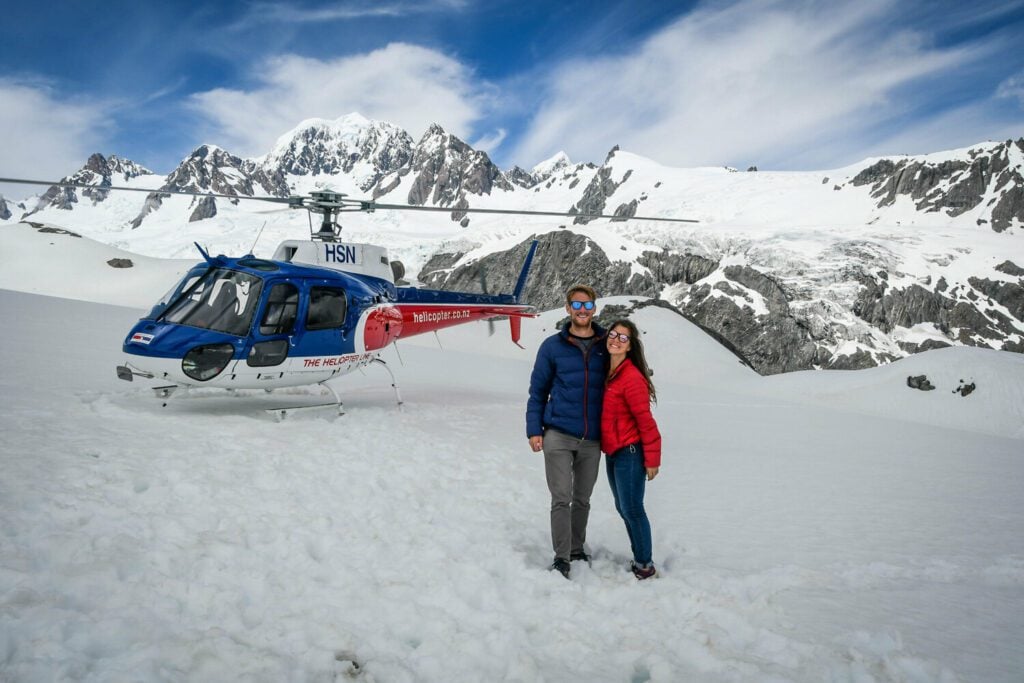
I’ll give it to you straight: New Zealand ain’t cheap. But don’t let that stop you – it is still totally possible to explore New Zealand on a budget .
If you are on a tight budget and watch your spending closely, you could get by with a daily budget of $60 – $90 per person.
If you want a few splurges and to stay in nicer accommodation, plan to budget $100 – $150.
On the other hand, you could easily blow through upwards of $200 per person per day if you book luxury hotels, eat out, and pack your itinerary with tours like bungee jumping and scenic helicopter flights.
For a more detailed breakdown, see our New Zealand travel guide .
Where to stay around New Zealand
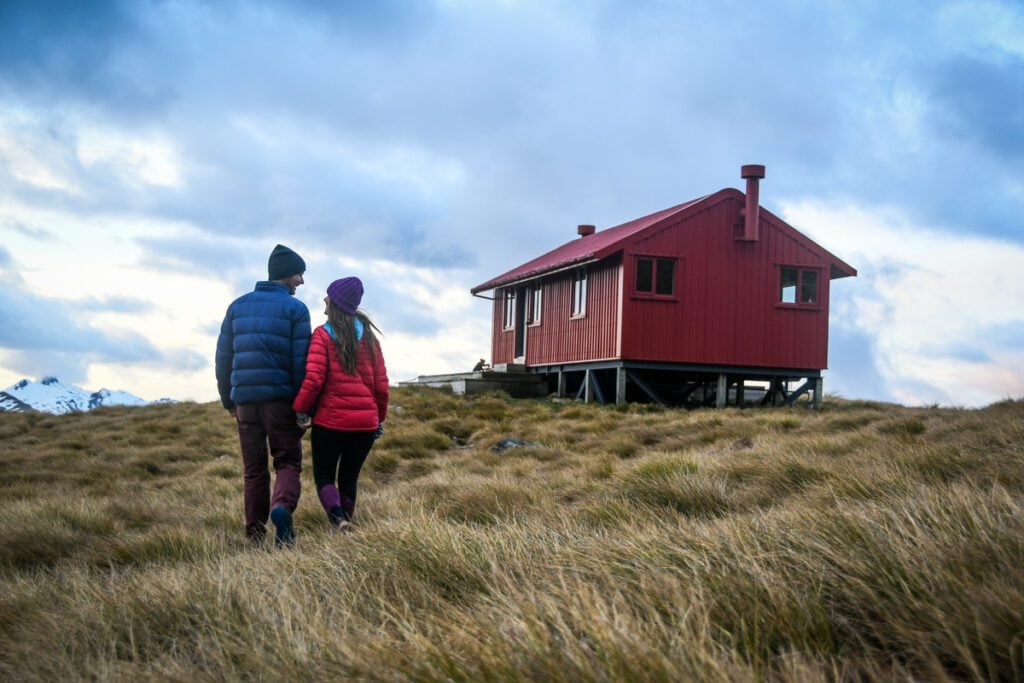
New Zealand is a developed country with lots of accommodation options. As with any destination, lodging will be more plentiful (but generally more expensive) in the city centers, and prices will be higher during peak tourist season (December to February in NZ).
Our New Zealand itinerary has options for hotel/Airbnb stays as well as campsites, so you can tailor it for your personal travel style.
From chains like Holiday Inn to boutique hotels and resorts, you can find it all in New Zealand. Hotels are usually concentrated around metropolitan centers and may not be available in some remote areas. We recommend using Booking.com to search for hotels and compare prices.
Insider Tip: Traveling on a tight budget? Use Booking.com to search and compare prices for hostels. With the exception of certain campsites, hostel dorms are usually the cheapest accommodations out there.
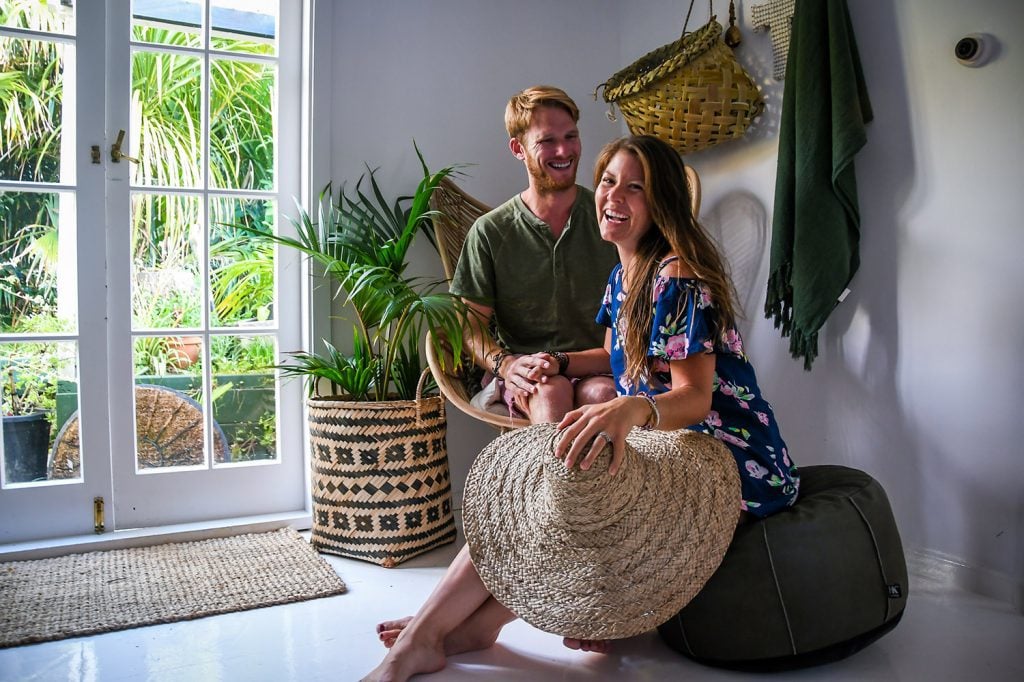
Renting an Airbnb is one of our favorite ways to get to know a place. Plus, they offer experiences you won’t get in a hotel:
- Get off the typical tourist track and experience the country from a local’s point of view.
- Stay in the suburbs or the countryside, outside of the major hotel areas.
- Enjoy perks like having your own kitchen and laundry – especially for a long-term stay.
- Psst! Read about why we prefer Airbnbs over hotels when traveling with a baby.
- Save money!
- Find unique stays, like this rainforest retreat near Auckland .
Never booked an Airbnb before, or worried about getting a dud? No sweat – we have Airbnb basically down to a science. We even created a whole guide to booking Airbnbs where we share all our tried and true secrets to ensure a great experience.
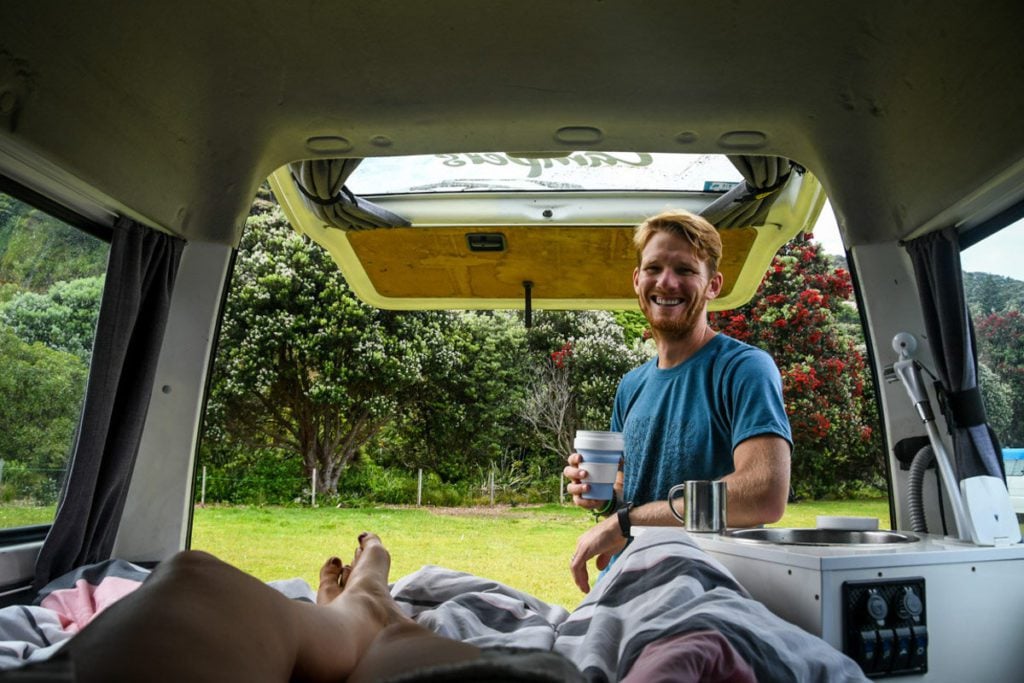
There are all types of campgrounds in New Zealand, from totally free to pretty pricey (like $70 NZD per night), from unmaintained sites to holiday parks with hot showers, BBQs, and all the frills. And then there’s everything in between.
New Zealand campsites are also quite different from those in North America. Most of the camping in New Zealand is more or less a field where campervans have space to park.
We know how overwhelming it can be to sift through tons of campsites while trying to decipher unfamiliar jargon (what exactly is a “holiday park?!”). So we created a New Zealand camping guide , complete with a rundown of the rules and a map of the best campsites in the country.
Our perfect New Zealand itinerary
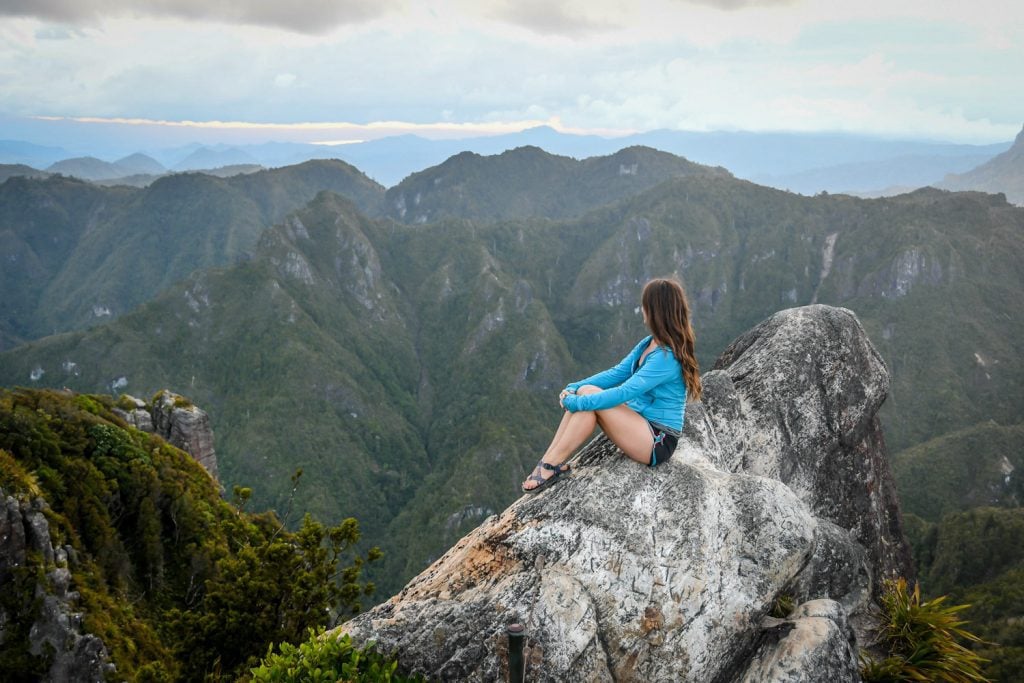
Countless hours were spent researching our route for New Zealand. We pored over article after article. We talked to Kiwis and asked for their local advice. And we finally came up with a plan.
All our research paid off: We had an incredible road trip! So, we’ve taken our road trip route and made it even better for you.
We took our 5-week travels and condensed it down to 30 days (because so many people wanted a 1-month route) that hits the top destinations on both the North and South Islands . We added some things we wish we would have made it to and we altered a couple things here and there that we wish we would’ve done differently.
This New Zealand itinerary is set up to be done as a campervan road trip . However, you can also follow this route if you’re traveling with a rental car and staying at hotels or Airbnbs along the way.
Important Note: One thing to know about traveling in New Zealand is you’ll need to be flexible. The weather in this country can be highly unpredictable (especially on the South Island), and a day of heavy rain or a surprise snowfall might derail your plans of hiking or bungy jumping. We would highly recommend having some “flex days” so you can alter your plans if you encounter weather that is not ideal. Trust us on this one.
Highlights of our New Zealand itinerary
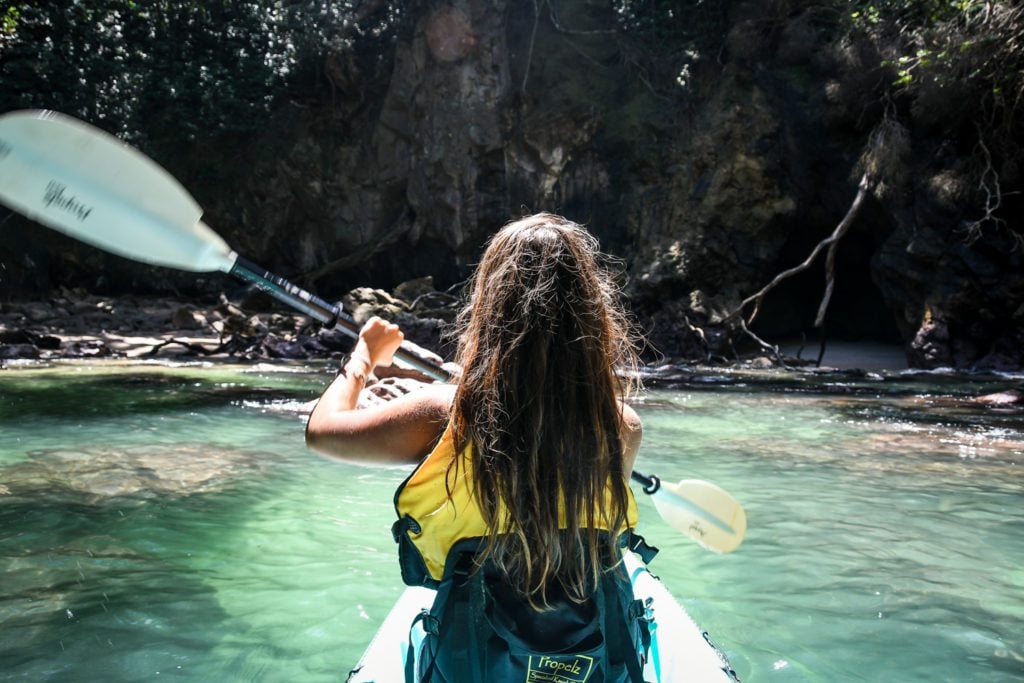
Below are some of the can’t-miss things to do in New Zealand that we’ve included in our epic one month itinerary.
- Discover Auckland and Waiheke Island
- Hike to Pinnacles Hut and witness the sunrise over the Pinnacles
- Explore the beaches on the Coromandel Peninsula
- Sea kayaking to Donut Island and camping on the beach
- Take the Hobbiton movie set tour
- Hiking in and around Rotorua and Lake Taupo
- Trek the Tongariro Alpine Crossing
- Eat and drink your way through Wellington
- Swim with dolphins (ethically!) in Kaikoura
- Wine tasting in Marlborough
- Explore Abel Tasman National Park
- Go rafting through a glowworm cave
- See Pancake Rocks
- Get up close and personal with Franz Josef Glacier
- Drive the beautiful Haast Pass
- Hiking around Wanaka
- Adventure activities in Queenstown
- Cruise Milford Sound
- Enjoy the laid back but incredibly scenic Key Summit hike
We’ve spent hours of research putting this all together, just for you!
In full transparency, this is a paid itinerary since it has taken an incredible amount of time for us to create.
However, we keep all of our paid itineraries affordable – just $15 for an entire 1-month itinerary. We think this is an extraordinary value considering almost all your planning will be done for you!
If you don’t have enough time to do both islands, we broke down our full itinerary into separate itineraries in the following articles:
- North Island Itinerary
- South Island Itinerary
Booking your New Zealand trip
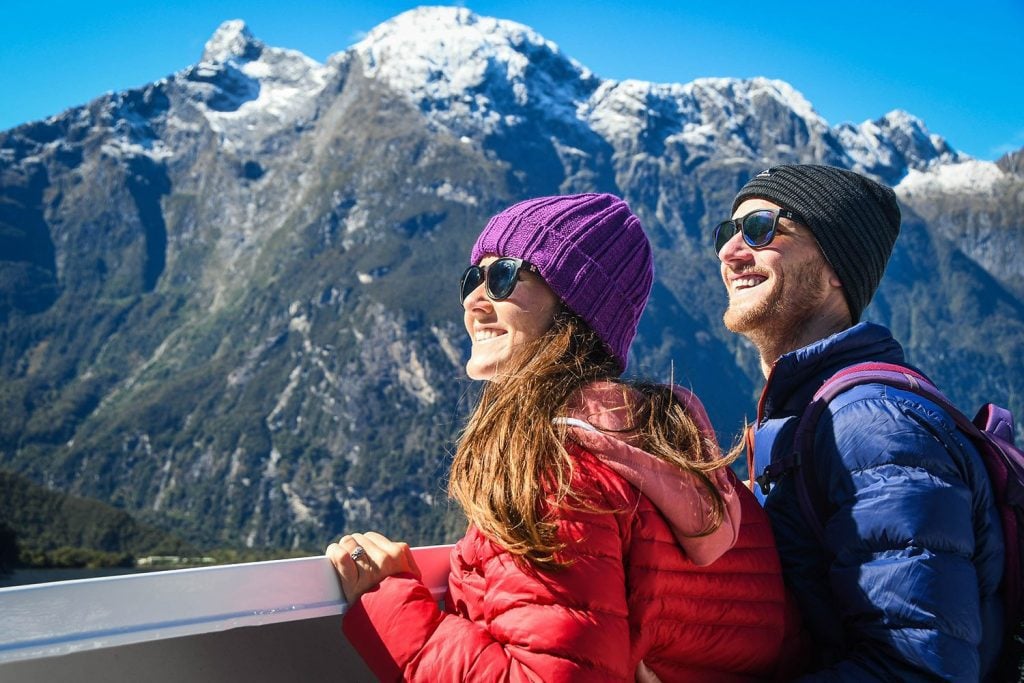
We have a handful of go-to resources that we use when planning nearly all our trips. Here are the platforms we use to book our most basic travel needs:
- Flights: Skyscanner
- Campervan rentals: Motorhome Republic
- Rental cars: Discover Cars
- Hotels: Booking
- Unique accommodations: Airbnb
Don’t forget about travel insurance!
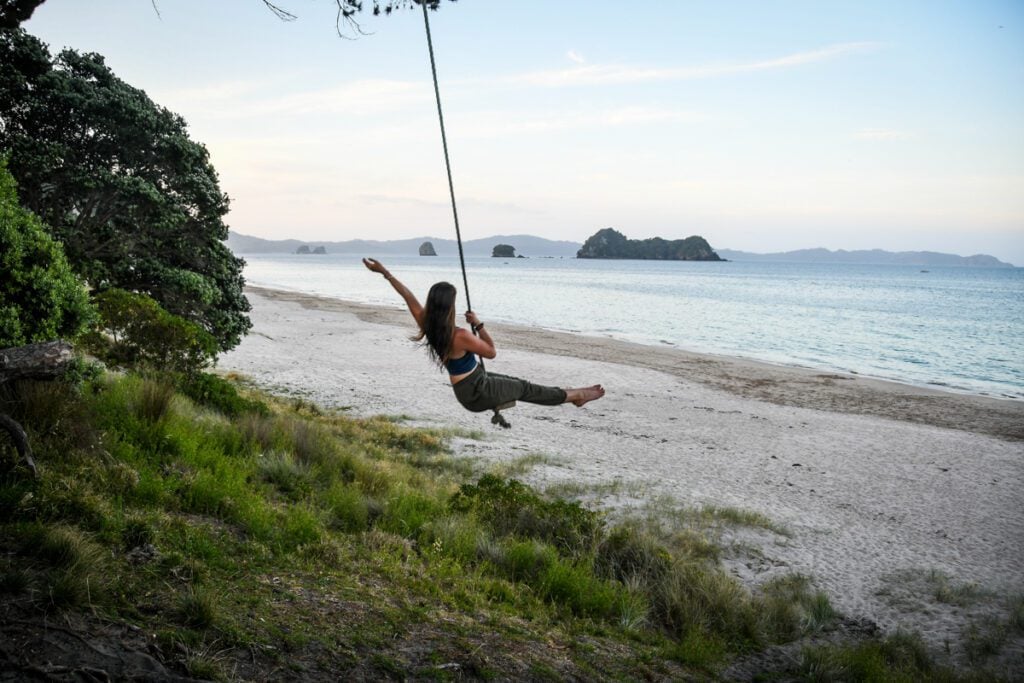
Hold up – don’t even think about getting on a plane without this! Travel insurance is just as important as your passport and, contrary to popular belief, it is not expensive.
We know a lot of people will forego this step simply because they get too overwhelmed by all the options.
Please don’t do that!
We made a comprehensive guide to travel insurance to help you out. We share which companies we use and what policy details to look for when you go over your travel insurance comparison.
Our recommendation:
Our personal pick for travel insurance is SafetyWing . Their policies are geared toward frequent travelers and digital nomads, and they’re one of the few providers who have coverage for Covid-19.
What sets SafetyWing apart is their emphasis on flexibility and adaptability . Unlike traditional insurance policies with fixed durations, SafetyWing’s coverage is designed to be subscription-based, allowing travelers to pay on a monthly basis and enjoy continuous protection while on the move.
New Zealand itinerary planning resources
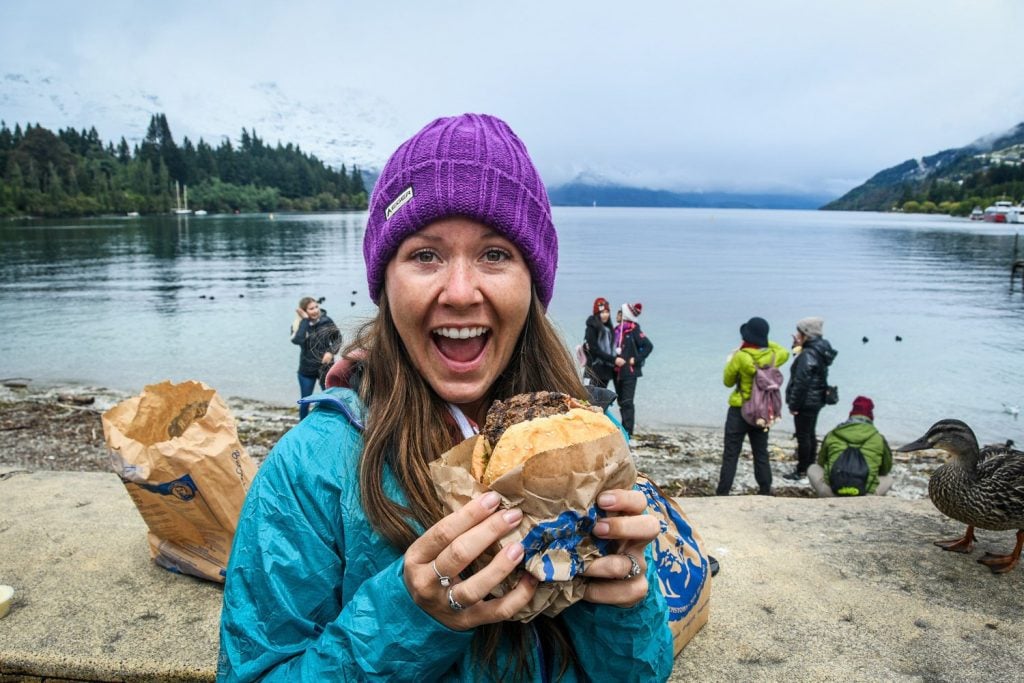
We have TONS of resources for planning your trip in our New Zealand travel guide . Below are some of our top recommended articles for New Zealand itinerary planning…
- Things to Know Before Traveling in New Zealand
- Exciting Things to Do in New Zealand on Your First Visit
- New Zealand Travel on a Budget + Money-Saving Tips
- Best Time to Visit New Zealand: When to Go & When to Avoid!
- Ultimate Guide to Planning Your New Zealand Campervan Trip
- Best Campervan Rentals in New Zealand
- Best New Zealand Campsites: Ultimate Guide + Map
- Car Rental in New Zealand: Essential Guide + Tips
- Incredible New Zealand Hikes + Local Tips
- Best New Zealand Foods to Try (& what to skip!)
Be sure to download our complete packing list for New Zealand ! It’s full of good suggestions and insider tips to help plan your campervan trip in New Zealand. And it’s completely FREE , so why not!?
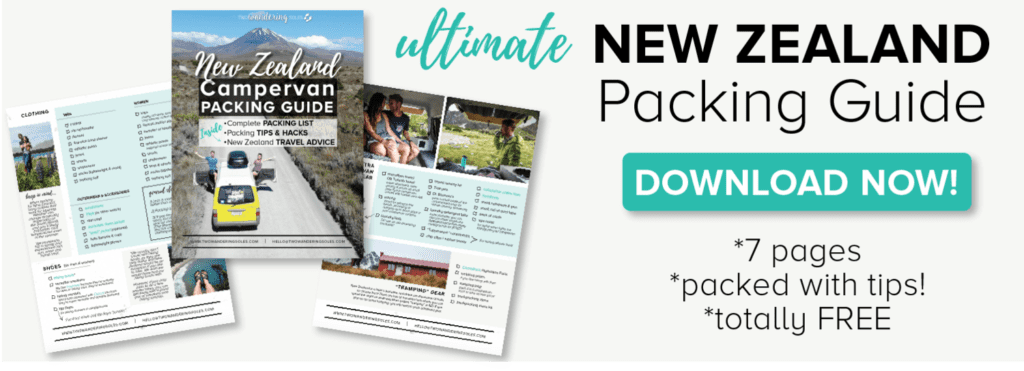
Want your itinerary planned for you?
- Perfect 1 Month New Zealand Itinerary
- South Island New Zealand Itinerary: Epic 2-Week Road Trip
- North Island New Zealand: 2-Week Road Trip Itinerary
Save this article on Pinterest for later!
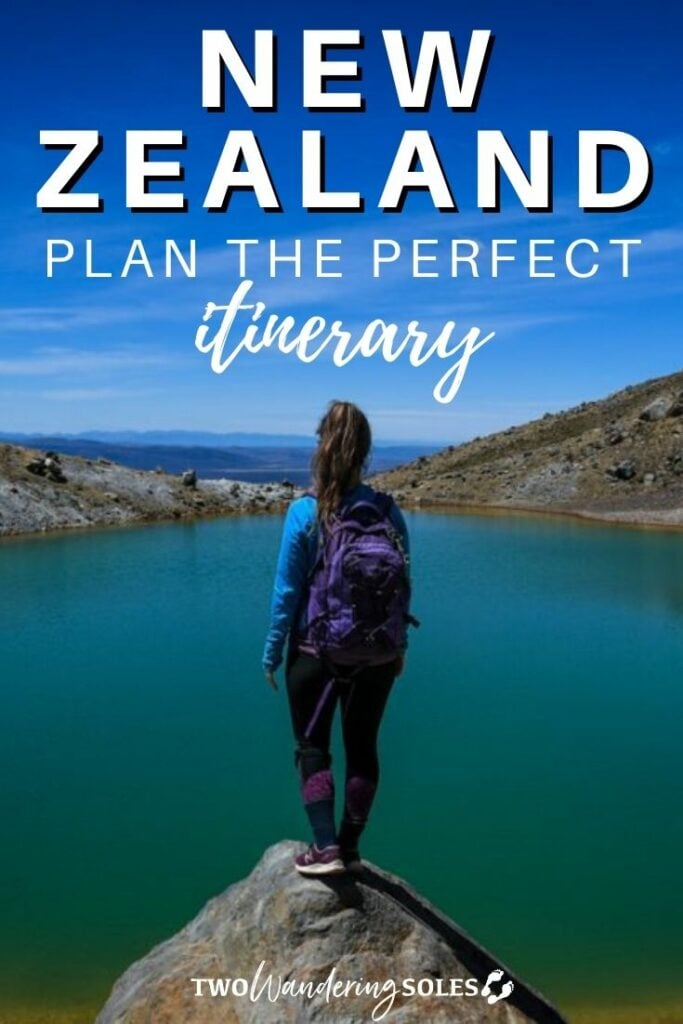
We want to hear from you!
Are you planning your own perfect New Zealand itinerary and still have questions? Let us know in the comments below and we’ll do our best to get back to you!
Comments (1) on “ How to Plan the Perfect New Zealand Itinerary ”
Great article! I am thinking of a two month New Zealand trip next year, in October, November, and December. Will probably fly into Auckland and spend about three weeks to a month road tripping the North Island. Then will go down to the South Island and spend about a month to five weeks road tripping before going back up to Auckland and flying home. How is the weather in the North island during mid October to mid November? Will I be able to hit up beaches? Also, is mid November to mid December a good time to see lupins on the South Island? What would be the ideal (female) packing list during this time? Thanks in advance!
P.S Hope you enjoyed your Arizona hike! Can’t wait to hear about it!
Leave a Reply Cancel reply
Your email address will not be published. Required fields are marked *
Save my name, email, and website in this browser for the next time I comment.

- Food & Drink
- Milford Sound
- Itineraries
- Work With Me
35 New Zealand Travel Tips: What to Know Before You Go
Are you’re planning your first trip to New Zealand and wondering where to start? I’ve got you covered with these New Zealand travel tips!
New Zealand is a stunningly beautiful country that offers a wide range of experiences for travelers. From the rugged mountains and glaciers of the South Island to the lush rainforests and pristine beaches of the North Island, it’s no wonder New Zealand is a must-visit destination for many.
With so much to see and do, there are a few things you should know first, so you can have an amazing time without having to spend time figuring these things out DURING your trip.
I’ve compiled the best tips for traveling in New Zealand that I learned from living here for 20 years to help you travel safely and smoothly throughout the country.
Here are 35 New Zealand travel tips to help you make the most of your adventure.
» You might be interested in Driving from Queenstown to Milford Sound: Everything You Need to Know + 18 Best Places to Stop Along the Way

Top New Zealand Travel Tips
1. don’t try to do everything.
New Zealand may be a small country but there is so much to see and do. Not to mention all the incredible landscapes to explore across two main islands. If you’re thinking you can see it all, you’re going to be disappointed or overwhelmed trying. My best tip for new visitors to New Zealand is “ don’t try to do everything” .
Even living here for many years, I still haven’t done it all.
No matter how much time you have, it’s impossible to do absolutely everything. And that’s ok! Plan a realistic itinerary so you can take the time to enjoy it. Prioritize your absolute must-dos, then build additional things around that.
Road trips are a good way to see a lot of things in between two main cities, including the small towns and beautiful landscapes around New Zealand.
2. Plan According to the Season
New Zealand is split across two main islands, and they are different in both terrain and climate. Research the areas you plan to visit including the weather to help you determine the best time to visit New Zealand .
In winter it can be quite cold in the South Island which may restrict certain activities, but it is ideal for skiing and snowboarding in the parts which have an alpine environment.
In summer it is a busier time to visit but there are more options with the good weather such as beach activities, especially in the warmer North Island.
Spring and fall can be good for hiking and experiencing popular activities with fewer crowds.
If you are planning road trips, bear in mind there can be snow and ice on roads in the alpine areas during winter. So you’ll need to keep an eye on road conditions and may need to consider a 4WD or carrying snow chains for your vehicle.
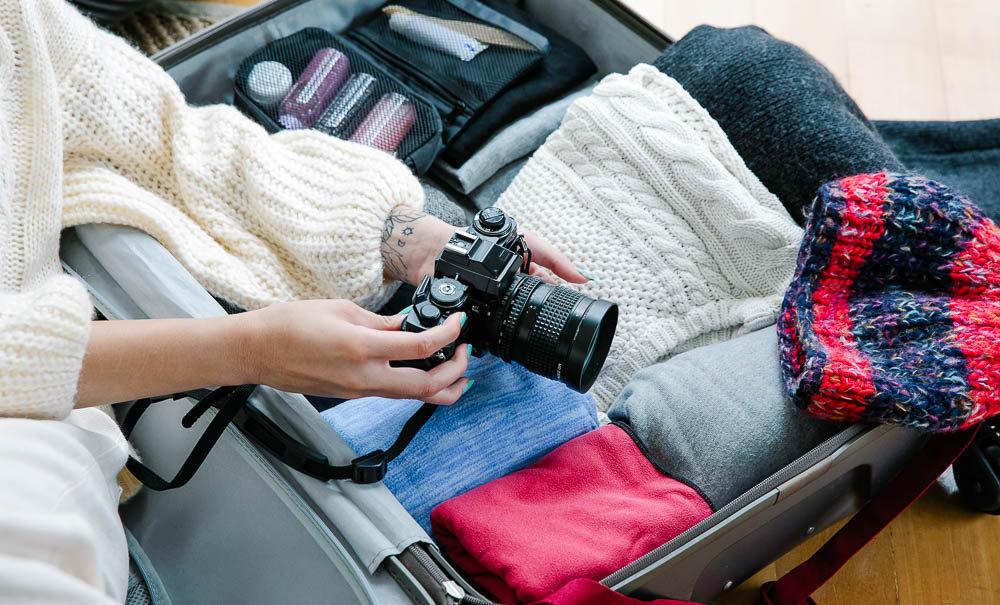
3. The Seasons are Reversed
Speaking of planning according to the season, it’s worth mentioning our seasons are opposite to the Northern Hemisphere.
Summer in New Zealand runs from December to February and winter from June to August.
This means summer school holidays are in December and January, which combined with the holiday season tends to be the busiest time of year to travel around New Zealand. Be sure to check school calendars if you want to avoid the school holiday crowds.
Spring (September to November) and fall (March to May) are considered the shoulder seasons and tend to be less busy with cheaper prices for accommodation, car rentals and some attractions than you would find in peak season.
4. Rent a Car or Campervan
Public transport outside the main cities is limited. If you plan on exploring multiple areas, I recommend renting a car or campervan. It offers the most flexibility and you can explore the country at your own pace.
Even within the cities, you may be limited to what you can see and do without your own transport. For example, the west coast beaches in Auckland are worth visiting but you’ll need a car to get there.
Hotels in the cities generally charge a fee for parking and it can be expensive. An option is to build your itinerary so that you have a few days in the city first without a car, then rent a car for the day trips you plan to take later on.
There are several car rental companies in New Zealand, including international brands and local companies. Some of the popular companies include Budget, Avis, Hertz, and Europcar. It’s important to do your research and compare prices and services before making a reservation.
We like using DiscoverCars.com to compare prices and book our rental cars. Once you enter your travel details they search the best deals you!

5. Know All Your Transport Options
Choosing the best way to travel around New Zealand is a personal choice. If renting a car is not right for you, there are several other options for getting around, each with its own advantages and disadvantages. The best option depends on your budget, travel style, and timeframe.
Here are some options to consider:
- Public transportation: New Zealand has a network of Intercity buses and trains that connect major cities and towns. This is a convenient and affordable option for getting around, especially if you’re traveling on a budget, but bear in mind it takes longer and offers less flexibility.
- Domestic flights: Air New Zealand and Jetstar are the two domestic airlines in New Zealand. Air New Zealand has the most coverage in regional airports, and Jetstar is generally cheaper. Flying between cities is good if you are short on time but it can be expensive and you’ll be limited to airport locations and flight schedules.
- Guided tours: There are bus tours covering most areas of the country from a couple of days to a couple of weeks. It’s a stress-free way to travel, with your itinerary and bookings made for you, and a great way to learn about the areas you visit from knowledgeable guides. Although they can be expensive and you may have limited time to explore on your own.
6. Know Where You Can and Cannot Camp
If you plan to explore New Zealand on a budget, staying in campsites and holiday parks along your journey, and renting a campervan is the way to go. Just be sure to know where you are allowed to camp as you can’t just park up anywhere in New Zealand.
Each region has its own by laws on freedom camping that you’ll need to adhere to. And you’ll need to be driving a certified self-contained campervan.
It’s also a good idea to book where you’ll be staying in advance, especially in peak season.

7. Learn New Zealand Road Rules
New Zealand drives on the left side of the road which may be different from what you are used to. This means the steering wheel will be on the right side of the car. A good tip to remember is the driver is always on the side of the car that is closest to the middle of the road.
Take some time to practice in a quiet place before tackling the cities or winding mountain roads.
Things like roundabouts and one-lane bridges are common in New Zealand but may be new to you. Be sure to know the New Zealand road rules and check driving conditions before heading off.
You can check the rules for driving as a visitor to New Zealand on the NZTA site , including license requirements.
8. Explore the Cities
New Zealand has several vibrant and dynamic cities that offer a range of experiences for visitors. I recommend that you don’t just stick to one during your visit. Each has its own vibe and attractions. They are also a great start and end point for exploring beyond the cities or embarking on a road trip.
- Auckland , the largest city in New Zealand, is known for its stunning harbor, world-class restaurants, and has plenty of attractions to choose from. Being a main travel hub, many visitors spend at least one day in Auckland to start their trip.
- Wellington , the capital city, is a cultural hub with a thriving arts scene, great coffee, and beautiful harbor views.
- Christchurch , located on the South Island, is known for its beautiful gardens and parks as well as cafes and restaurants.
- Queenstown , the adventure capital of New Zealand , offers a range of outdoor activities, from skiing and snowboarding to bungee jumping, skydiving and jetboating.
These cities, among others, offer a unique glimpse into New Zealand’s culture and history, as well as plenty of exciting things to do – rain or shine .
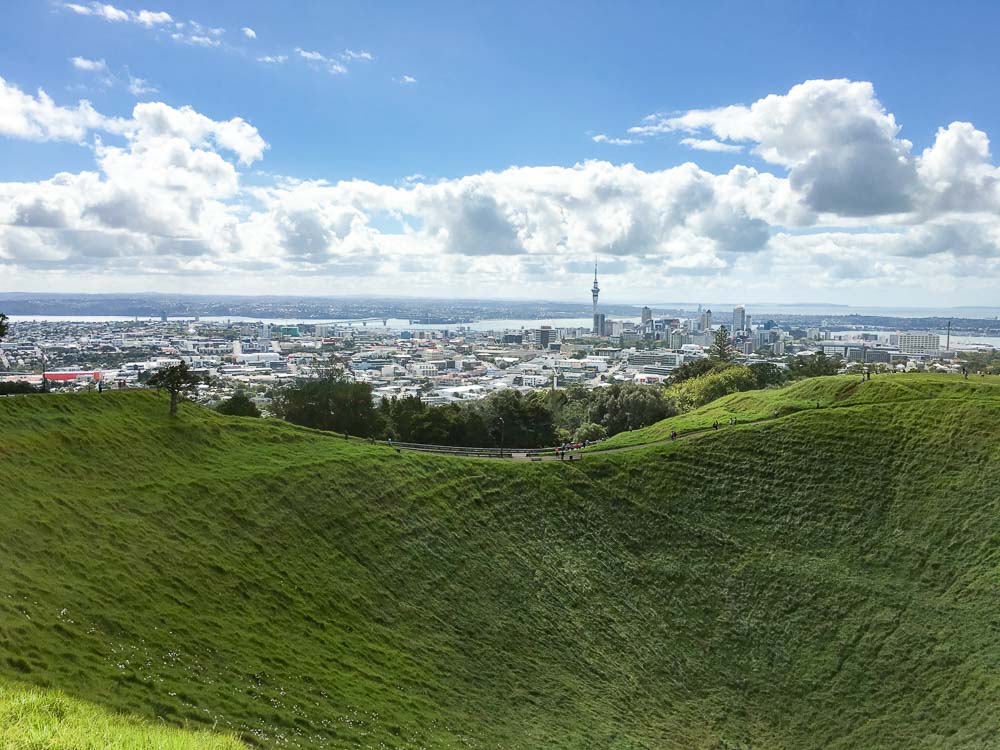
9. Explore Beyond the Cities
New Zealand is known for its natural beauty and there are many ways to experience it. From scenic drives and world-renowned hiking trails to national parks and quaint towns rich in history and culture.
In fact, New Zealand is home to two UNESCO World Heritage Areas, two International Dark Sky Reserves/Sanctuaries and 13 national parks that are free to visit.
Each area offers unique landscapes and activities, so try to visit at least a couple during your trip. Nature is what New Zealand does best!
10. Respect the Environment
New Zealand has a commitment to caring for the environment, including conservation efforts to preserve the native wildlife that is under threat due to invasive species.
Tiaki is a significant part of Māori culture that can be loosely translated to mean to care, conserve and protect. The Tiaki Promise is a commitment to care for New Zealand and everyone who lives and travels here has a responsibility to look after it. This means that while traveling in New Zealand we will:
- Care for land, sea and nature, treading lightly and leaving no trace
- Travel safely, showing care and consideration for all
- Respect culture, traveling with an open heart and mind
It’s important to stay on marked trails and practice “leave no trace” principles when hiking and camping. Always leave with anything you brought. Leaving trash or tramping on delicate vegetation is not responsible or respectful.
Be sure to clean your boots at cleaning stations when you see them. Not all trails have them, but it is an important step in containing diseases such as Kauri tree dieback, which is killing our beautiful Kauri trees. So please use them when you see them.
This is why it’s also important to only bring clean hiking gear into New Zealand. Declare your gear at the airport and they’ll even clean it for you.

11. Try Local Cuisine
New Zealand may not be the first place that comes to mind when thinking about food, but thanks to its diverse cultures and rich agricultural resources New Zealand has a range of delicious foods to try . Be sure to try local cuisine and visit farmers’ markets for fresh produce. Here are some of the best local dishes and where to try them:
- Auckland: Known for its multicultural food scene. Visit the Auckland Night Markets to try a variety of street food from all over the world. Head to Commercial Bay for a selection of restaurants and an upmarket food hall with a range of eateries. Or head to the Viaduct for Auckland’s top restaurants with a view. Try the steak and oysters at Oyster and Chop or fresh seafood at Soul Bar and Bistro.
- Rotorua: Experience a hāngī meal and learn about Māori culture at a Māori Village in Rotorua. Hāngī is a traditional method of cooking in Māori culture in which food is steamed in an underground pit, referred to as an earth oven, resulting in deliciously tender meat and root vegetable infused with smoky flavors.
- West Coast: Famous for its whitebait fitters. New Zealand whitebait are tiny fishes with a subtle flavor, most commonly served in fritters. They can be found all over New Zealand during whitebait season (September and October), but especially along the West Coast of the South Island.
- Bluff: A small town located at the very bottom of the South Island known for its fresh seafood and bluff oysters that are wild caught straight off the coast. If you can’t make it to Bluff, don’t worry, they are shipped to just about every seafood restaurant in the country from March to August.
- Kaikoura: Known for its amazing crayfish with ‘seafood caravans’ dotted along the coast. Similar in appearance to lobster but with a subtle flavor. If you’re heading to Kaikoura be sure to stop at Nins Bin to try their famously fresh crayfish.
- Queenstown: Home to the famous Fergburger, arguably New Zealand’s best burger, but also many restaurants featuring farm to table cuisine and local wines. Try Rata restaurant for fresh contemporary New Zealand cuisine. Or the signature ribs at Flame Bar & Grill, we dine here at least once or twice whenever we’re in Queenstown!

12. Enjoy Local Wine
New Zealand is known for its world-class wine, with several regions producing some of the best wines in the world. There are quite a few and I’m still working my way through trying them all!
Try to visit a couple of wineries, tour the vineyards, and sample the wine. It’s a wonderful experience sitting amongst the vineyards. Enjoy the stunning views of the surrounding landscapes, as well as a chance to meet the winemakers and learn about the wine-making process.
You may like to book a wine-tasting tour. There are plenty to choose from in each of New Zealand’s wine regions. Here are a few of our favorite wine regions to visit in New Zealand:
- Waiheke Island , located on the North Island and a short ferry ride from Auckland, is known for red wines based on Cabernet Sauvignon, Merlot, Malbec and Cabernet Franc grape varieties. The island is home to 30 boutique wineries , many with tasting rooms, swanky restaurants and breathtaking views.
- Hawke’s Bay , located on the North Island, is known for its full-bodied red wines, including Cabernet Sauvignon, Merlot, and Syrah.
- Marlborough , located on the South Island, is known for its Sauvignon Blanc, which is crisp, refreshing, and bursting with tropical fruit flavors.
- Central Otago , also located on the South Island, is known for its Pinot Noir, which is elegant, complex, and has a distinct earthy flavor.
Popular wineries include Cloudy Bay in Marlborough, Craggy Range in Hawke’s Bay, and Felton Road in Central Otago.

13. Book in Advance
New Zealand is a popular destination during the summer months (December to March). Accommodation and tours can fill up quickly. Many visitors from the Northern Hemisphere come to escape their winter plus local families are traveling for summer school holidays .
It’s worth booking your accommodation and car or campervan rental well in advance for the best rates. As appealing as it sounds to arrive with a road trip plan and wing it on where to stay each night, it’s not a good idea.
Even campsites need to be booked in most places and you may end up with nowhere to stay if you leave it to the last minute. You’re better off having a rough itinerary and booking your accommodation in advance for each area.
I also recommend booking any tours or attractions you don’t want to miss out on.
If you’re traveling between May and October you’ll have more flexibility with fewer crowds. With the exception of Queenstown, which gets busy for ski season from June to August. Even then, you’re better off having a rough plan with flexible bookings that you can change around once you’re here.

14. Don’t Miss the Scenic Roads
The South Island offers some of the most scenic drives in the country with views that have to be seen to be believed. Our 2-week South Island road trip itinerary provides a comprehensive loop around the island stopping at popular attractions and off-the-beaten-path locations.
The Southern Scenic Route follows the coastline from Dunedin to Invercargill including picturesque lighthouses and stunning waterfalls to be explored along the way.
You can continue on the Southern Scenic Route from Invercargill to Te Anau through the remote coastal communities and popular surf beaches along the southern coast.
Te Anau is a great base from which to explore the popular Milford Sound and the more remote Doubtful Sound . The drive from Te Anau to Milford Sound is an incredible journey through the lush landscapes of Fiordland with plenty of scenic stops along the way and not to be missed.
But my personal favorite is the drive from Queenstown to Mt Cook . Plan for a slow drive, with plenty of stops to see all the best views and places to discover along the way. From New Zealand’s oldest hotel to landscapes that can only be described as otherworldly, it has it all.
Here are some other scenic drives you might enjoy:
- Driving from Queenstown to Milford Sound: Everything You Need to Know + 18 Best Places to Stop Along the Way
- Driving Cromwell to Queenstown: 10 Best Places to Stop Along the Way
- 15 BEST Places to Stop on the Drive from Glenorchy to Queenstown
- Queenstown to Invercargill: 10 BEST Places to Stop Along the Way
For the North Island, our 2-week North Island road trip itinerary covers all the best places and scenic routes to take.

15. Protect Yourself from the Sun and Sandflies
The UV rays are pretty intense in New Zealand, thanks to a thin ozone layer and less airborne pollution to scatter the UV radiation. Traveling in New Zealand requires some preparation to protect yourself from the sun’s harmful rays all year round, with extra precautions during the summer months. Here are some of our top tips:
- Check the UV Index : UV levels are variable across the country and depending on the time of year. The sun’s rays are generally the strongest from months of September to April and from 10 a.m. to 4 p.m. so make sure you can seek shade during these times and plan outdoor activities in ways that prevent overexposure to the sun.
- Sunscreen: Use a broad-spectrum sunscreen with at least SPF 30 and remember to re-apply regularly, even if it’s cloudy. Consider a waterproof sunscreen if you’ll be swimming or sweating and re-apply more often.
- Clothing: Wear lightweight, long-sleeved shirts and pants to protect yourself from prolonged exposure to the sun. You can find apparel with built-in UV protection, but generally clothes with a tight weave are best at blocking UV rays.
- Hats and Sunglasses: Protect your face, neck and shoulders with a wide-brimmed hat. Sunglasses that block both UVA and UVB rays are best for protecting your eyes.
- Hydrate: Exposure to the sun can bring on dehydration quickly, especially when you’re active. Drink plenty of water, even if you don’t feel thirsty, to ensure you stay hydrated.
- Bring Bug Spray: Sandflies can be prolific in areas near running water and humid bush such as beaches, lakes and waterfalls, especially during summer. These tiny insects leave an itchy bite that can be unpleasant. Cover your arms and legs with clothing and use a high deet insect repellent if venturing to these areas. I also find they don’t bother you as much if you keep moving.

16. Don’t Skip the Hike
New Zealand is an outdoor paradise with hundreds of trails across the country from easy to advanced, and ranging from 10 minutes to 10 days! We always recommend including a few hikes in your itinerary.
The Department of Conservation (DOC) is a great resource to find trails that are available in any region across New Zealand, including any alerts or track closures.
Exploring the landscapes of New Zealand is a truly rewarding experience but it’s important to be prepared. If you plan on doing the more challenging hikes be sure to wear sturdy footwear and don’t underestimate the effort required. New Zealand’s advanced trails can be tough, technical and remote but incredibly beautiful.
The environment can also change quickly, especially in the backcountry and at higher altitudes. Dress for the conditions and always have a warm layer with you, even in summer. Wi-Fi may not be available in some locations so if you’re heading into the remote or alpine areas you should carry a personal location beacon (PLB) with you.
Here are some of our favorite hikes in New Zealand:
- 12 BEST Day Walks in Queenstown
- 10 EPIC Day Hikes in Queenstown
- 15 Must-Do Walks in Te Anau From Easy to Advanced
- Guide To Hiking Roys Peak: Everything To Know About New Zealand’s Most Photographed View
- 15 Best Hikes In Milford Sound
- Sawpit Gully Trail – A Spectacular Hiking Trail in Arrowtown, New Zealand

17. Enjoy the Beaches
New Zealand is home to some of the most stunning beaches in the world, and there are plenty of ways to enjoy them. Here are some of our top tips:
- Choose the Right Beach: New Zealand beaches can vary drastically from the wild black sand beaches on the west coast to the calm and pristine white sand beaches on the east coast. Do some research to find a beach that fits your interests – whether that’s surfing, swimming, relaxing or exploring.
- Sun Protection: Wear a broad-spectrum sunscreen with at least SPF30. Reapply regularly and don’t forget your sunglasses and hat.
- Follow Safety Guidelines: Always pay attention to beach safety signs and flags. Watch out for rip currents and only swim in designated areas when lifeguards are present.
- Pack a Picnic: Many beaches have picnic areas, some even with BBQ facilities, where you can enjoy a meal with a view. Remember to pack plenty of water and stay hydrated.
- Explore Beyond the Sand: Many beaches are near hiking trails, waterfalls, parks or towns with shops and restaurants. See what else there is to see and do in the area.
- Leave No Trace: Remember to take trash and belongings with you at the end of the day to help keep New Zealand beautiful.

18. Be Flexible
New Zealand is beautiful, wild and unpredictable and the weather can affect some activities. For example, wind or rain may cancel a skydive or a helicopter landing on a glacier. Fog may obstruct views at the top of the mountain you just spent 4 hours climbing.
I get that it’s a balancing act between planning for the time you have here and being flexible. Especially if you are traveling in the summer months when booking tours in advance is recommended.
Most tours offer the chance to re-schedule if it gets cancelled due to inclement weather. Our advice is to book your activities or tours that are weather-dependent for the beginning of your stay. This way you have the option to re-book for another day if you need to.
It’s also good to have a list of other things you want to see or do in each location so that you can adjust to the weather and conditions if you need to. Then you won’t have to spend time trying to research other things to do on the fly if plan A gets disrupted.
19. Dress for The Weather
New Zealand’s weather can be unpredictable, so be prepared for all kinds of weather, even in the summer.
The best way to pack for New Zealand is to bring layers. The time of year you’ll be visiting and the activities you’ll be doing will determine just how many layers you need. For example, hiking in the South Island in fall I wear a short sleeve or long sleeve t-shirt during the day and usually progress to a fleece and then a puffer jacket the higher we climb, and for the cooler evenings.
But even in summer, a light layer is useful for the cooler evenings and protection from the sun. And a warm layer if you’ll be heading to the mountains.
A waterproof jacket and comfortable walking shoes are essential all year round. And sturdy hiking boots if you’ll be hitting the trails.

20. Be Prepared for Earthquakes
Earthquakes can occur in certain parts of New Zealand. They aren’t very often and are usually small. In fact, I’ve lived here for many years and I still haven’t felt one in person. But that doesn’t mean one won’t happen while you’re here. It’s important to be familiar with safety procedures, just in case.
- Familiarize yourself with the “Drop, Cover, and Hold” protocol. If you feel shaking, drop down on your hands and knees. Cover your head and neck and get as much of your body under a sturdy piece of furniture. Hold on to your shelter until the shaking stops.
- Know the safe spots in your area. If inside, find an anterior wall or under large sturdy furniture and avoid doorways. If outside, move away from buildings, trees, streetlights, and power lines, then Drop, Cover and Hold.
- Know the emergency procedures at the place you’re staying. Identify safe places to take cover and establish a way to contact friends and family to let them know you’re safe.
- Consider having an emergency kit with you that includes items such as bottled water, non-perishable food, a flashlight, a first-aid kit, a portable charger for your phone and any essential medication.
Tips for Traveling in New Zealand
Here are some quick New Zealand travel tips to ensure you get here smoothly as well as some handy tips for traveling in New Zealand once you arrive.
21. Declare, Declare!
New Zealand customs are strict and you are required to declare certain items in order to protect the country’s environment.
Food as well as plant and animal products can introduce pests and diseases that could cause irreparable damage to New Zealand’s agriculture and environment. While some packaged food is okay to bring in, declare it anyway to be on the safe side.
New Zealand’s ecosystem has evolved in isolation for millions of years, with unique plants and animals that are found nowhere else in the world. The country’s isolation and geological history have created a unique and delicate balance between species. The introduction of a non-native pest or disease can have devastating consequences.
Not only can failure to declare result in fines or even criminal charges, but you may inadvertently bring in something extremely harmful to the environment.

22. Know Your Visa Requirements
Visitors to New Zealand are required to have a visa or an Electronic Travel Authority (ETA), depending on their country of origin.
Citizens from visa-waiver countries, such as the United States, Canada, and the United Kingdom, can apply for an ETA before their trip online or via the free app .
Visitors from countries that are not on the visa waiver list must apply for a visitor visa before arriving in New Zealand. This process can take several weeks, so be sure to plan accordingly.
The type of visa you have will determine how long you can stay, but generally ranges from 3 to 9 months. It’s important to check the visa requirements for your specific country before traveling to New Zealand, as they can vary depending on your country of origin and the purpose of your visit.
23. Have a Return Ticket
One of the rules for entry into New Zealand is that you must have a return ticket, unless you have a work visa. I know, it’s a great place and I don’t blame you for wanting to stay forever but you won’t even get into the country without that return ticket.
Luckily, you can stay for a long time as a tourist and there may be an option to extend your visit depending on the type of visa you entered on.
24. Currency
The local currency is the New Zealand dollar which comes in colorful notes ranging from $5 to $100.
Coins come in 10, 20 and 50-cent pieces and $1 and $2 coins. This keeps prices nice and round as does Swedish rounding. A purchase ending in 6, 7, 8, or 9 is rounded up to the nearest 10c and a price ending in 1, 2, 3, or 4 is rounded down to the nearest 10c since we don’t have any 1, 2 or 5 cent coins.
Most places in New Zealand accept credit cards, Visa and Mastercard being the most popular, but be aware some retailers may apply a surcharge for using a credit card. Also, the term EFTPOS means ‘paying with card’ in New Zealand.
The currency exchange bureaus you’ll find in New Zealand cities generally have better exchange rates compared to airports.

25. Sales Tax
In New Zealand, sales tax is called GST and it’s already built into the prices of things. This means the price you see on the sticker is the price you’ll pay at the counter for the most part.
Exceptions include if Swedish rounding or a credit card surcharge is applied.
26. Tipping is Not Expected
Tipping in New Zealand is not as common as it is in some other countries, such as the United States. In general, service charges are not added to bills, and tipping is not expected. The hospitality industry pays staff a fair wage, so tipping is not necessary to supplement their income.
However, if you receive exceptional service at a restaurant or from your tour guide, leaving a small tip is always appreciated. Generally, a 5-10% tip is considered a generous gesture. However, it’s entirely up to the individual’s discretion.
27. Emergency Number
111 is the emergency number for police, fire and ambulance in New Zealand and the number to call if anyone’s safety is at risk.
105 is the number for police non-emergencies. This includes reporting things that don’t need immediate or urgent attention such as a lost wallet or phone, and damaged or stolen property.
You should contact your embassy for issues with your passport.
New Zealand is a safe country with low crime rates, but it’s good to know these numbers and not need them, rather than need them and not have them.
28. Carry Reusable Bags
New Zealand grocery stores no longer provide free bags so I recommend carrying a couple of reusable bags with you. You can buy them from any grocery store. And if you are caught without a bag, don’t worry, you can still buy paper bags at checkout.
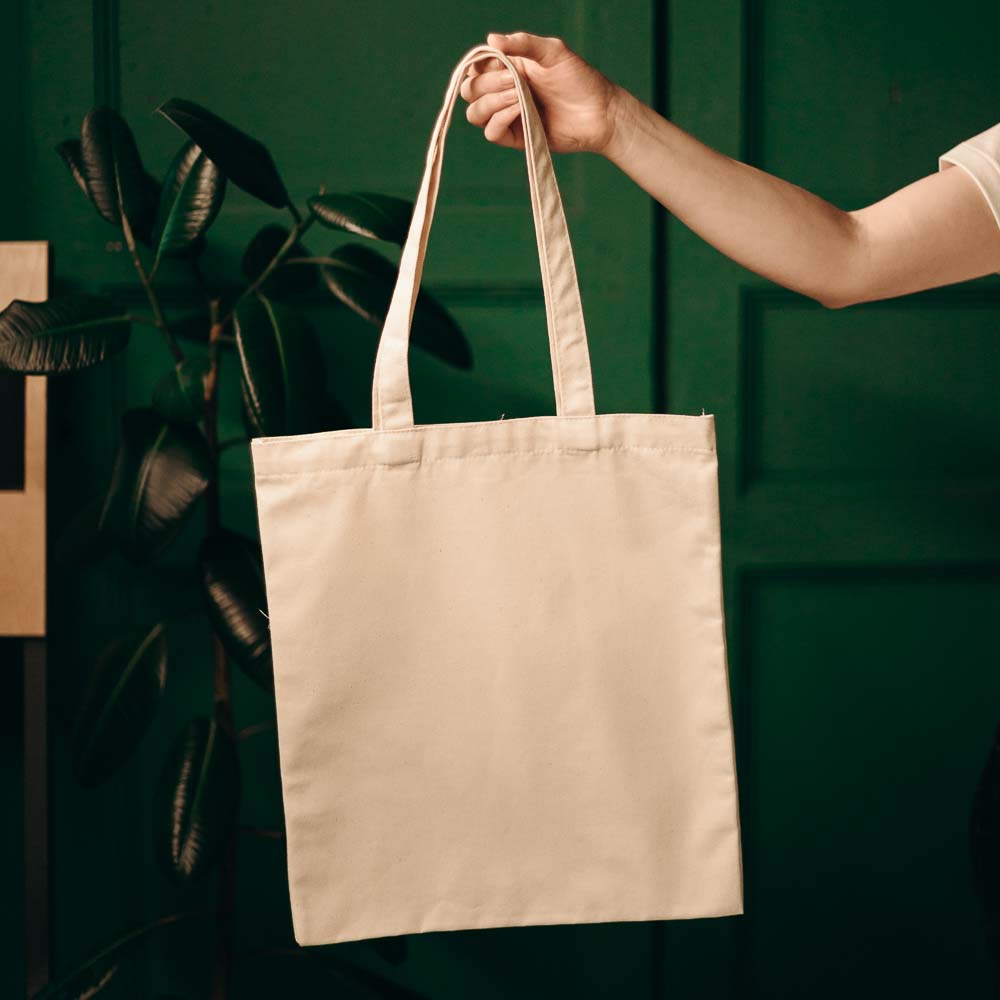
29. Acceptable ID
The legal drinking age is 18 years old in New Zealand and you may be asked to show your ID to prove your age when buying alcohol.
The only forms of ID that are accepted are your passport, a valid New Zealand driver license and the Kiwi Access Card (previously known as the 18+ Card). So, if you are heading out to buy alcohol from a store or ordering from a restaurant, you may want to have your passport with you.
If you are staying in New Zealand for a while, it may be worth getting a Kiwi Access Card instead so you can keep your passport safe.
30. Wi-Fi Can Be Mixed
Wi-Fi in New Zealand may not be as good as what you’re used to back home. Free Wi-Fi in city cafes is usually decent but cheaper accommodations can be slow and may only be for a small amount of data.
The nicer hotels generally have good Wi-Fi but don’t be surprised if it varies from place to place. Sometimes it’s worth paying a little extra for good Wi-Fi.
Some remote areas don’t have access to a network. So, if you’re heading into these areas, such as Milford Sound, be sure to download any maps before you go.
31. Consider Getting a SIM Card
If staying connected is important, you may want to consider getting a New Zealand sim card for your phone. If you plan on sharing your epic adventures on social media and relying on Google Maps to navigate, consider choosing a plan with a lot of network data. You can purchase New Zealand SIM cards at the airport.

32. Plan More Time Than What Google Says
New Zealand highways are often single-lane winding roads outside the main cities and it’s unlikely you’ll be traveling at the maximum speed limit for the entire journey. And even if you could, it may not be the speed you are comfortable doing.
It’s fair to say, it usually takes a little longer to cover the same distance compared to other countries. Plus, I always recommend leaving extra time to pull over and enjoy the scenic stops along the way.
Sometimes Google will take you on the shortest route rather than the easiest and you may end up on some gravel farm or logging road. If you’re traveling to remote areas, just double-check the directions are sticking to the main highways.
33. New Zealand is Expensive
Be prepared for sticker shock. The prices for things such as food and drink are likely to be higher than what you may be used to at home. If you’re traveling from the United States, UK or Europe you’ll at least have the exchange rate from a stronger currency on your side.
Here are some ways to save during your stay:
- Cook some of your own meals . Pak n Save, Countdown and New World are supermarkets you’ll find in the main cities and towns around New Zealand. Pak n Save being the cheapest.
- Check gas prices . Gas prices vary, gas stations at supermarkets or outside of the main cities tend to be cheaper. Just be sure to fill up before heading into remote areas such as Milford Sound. There can be long stretches of driving between gas stations.
- Take advantage of free activities : New Zealand has many free activities, such as hiking, walking tours, and visiting museums. National Parks and beaches all have free access. Take advantage of these to save money and experience local culture.
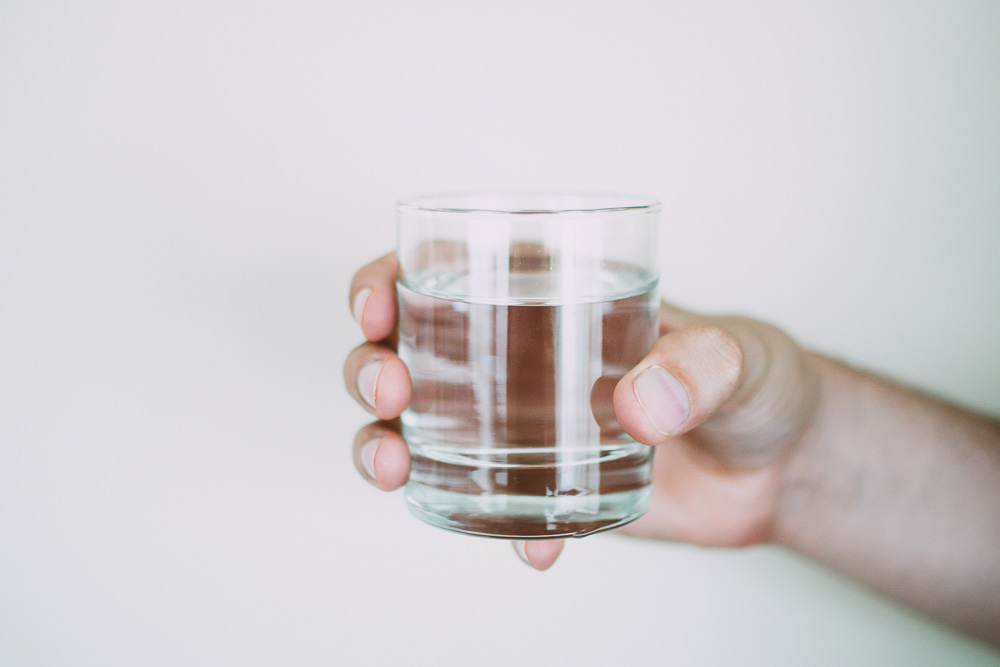
34. You Can Drink The Tap Water
New Zealand water is safe to drink and you can fill your water bottle up from the tap. I think it tastes pretty good too.
Many parks and walkways have water refill stations. So bring along your reusable water bottle. In fact, some of the rivers in Milford Sound are so pure you can fill your water bottle up straight from the source. Local tour guides will show where it’s safe to do this.
Plus, not having to buy bottled water is another great way to save money.
35. Power Points and Voltage
New Zealand uses Type I plugs for wall sockets which are the same as Australia and the Pacific Islands, and the voltage is 230/240 volts (50Hz). Some of the things you need to plug into the wall for power, such as laptops with a dual voltage power supply, you can use with a decent plug adaptor (a worthwhile investment).
If you’re bringing appliances (such as standard hair dryers) from countries where the voltage is lower, such as the USA and Canada, check that your appliance clearly states it is safe for use up to 240 volts. If not, you will need to use a voltage converter/transformer.

Wrapping Up: Travel Tips New Zealand
There you have it, our top New Zealand travel tips! Visiting New Zealand for the first time is an exciting experience. With so much to see and do, it’s a destination that will leave you with memories to last a lifetime. These top tips for traveling in New Zealand will help you prepare and enjoy your time in this beautiful country. Happy planning and safe travels!
Travel Planning Guide
🚗 Where should I book my rental car?
Renting a car is one of the best ways to get around New Zealand. Public transportation can only get you so far, even in the cities. I always rent with Discover Cars , which checks the prices of all major rental car companies, so you get the best rates.
🚐 What about a campervan?
Renting a campervan is a fantastic way to experience the more remote areas of New Zealand. I really like JUCY because they have a big range of vehicles and locations around the country, which offers more flexibility with pick-up and drop-off. I also like Motorhome Republic , which compares all the campervan options available in NZ.
🛏 What’s the best way to book my accommodations?
For hotels and vacation rentals, Booking.com or Expedia.com are the best sites. You can also book through TripAdvisor. If you’re considering renting a house instead, try VRBO which often has good deals.
🛩 What’s the best site to buy flights to New Zealand?
For finding the best deals on flights to New Zealand from around the world, I recommend Kayak.com .
Like this article? Save it on Pinterest so you can find it again.
FOLLOW US on Pinterest and Facebook for more New Zealand travel inspiration and tips!

YOU MIGHT ALSO LIKE

How to Spend a Weekend in Auckland: The Perfect 2-Day Itinerary

10 Best Cruises in Milford Sound

Top 21 Foods in New Zealand You Must Try

Queenstown 3 Day Itinerary: How to Spend 3 Days in Queenstown, New Zealand
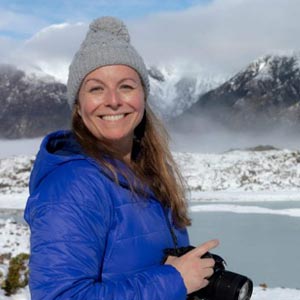
Heather is a travel enthusiast living in New Zealand with her family. She writes about living in and enjoying travel to New Zealand.
Leave a Reply Cancel reply
Your email address will not be published. Required fields are marked *
Save my name, email, and website in this browser for the next time I comment.

- Work With Me
The Best New Zealand Itinerary for Solo Travellers
- December 20, 2022 June 19, 2023
Best New Zealand Itinerary for Solo Travellers:
Solo travelling New Zealand: Coach, C ar or Campervan? Stop 1: Auckland Stop 2: Bay of Islands Stop 3: Waitomo Caves Stop 4: Hot Water Beach Stop 5: Mount Maunganui Stop 6: Rotorua Stop 7: Lake Taupo Stop 8: Tongariro Alpine Crossing Stop 9: Wellington Stop 10: Christchurch Stop 11: Lake Tekapo Stop 12: Queenstown Stop 13: Lake Wanaka Stop 14: Franz Josef Glacier
If you want to travel New Zealand solo, you don’t need to pay thousands of dollars for an expensive solo package trip.
This New Zealand itinerary for solo travellers will tell you the best places to stay to meet new people, how to find cheap group activities and how to have the most epic NZ trip solo.
How to Get Around New Zealand as a Solo Traveller
New zealand coach travel for solo travellers.
Coach travel is probably the most budget-friendly way to complete your solo trip around New Zealand.
If you don’t want to drive during your solo itinerary, InterCity coach service offers transport to basically all of the major tourist spots in the country.
You don’t have to buy tickets for specific coach routes either, instead you buy journey hours on a FlexiPass and you can top up as you go.
You can buy up to 80 hours of travel, which would get you up and down the length of the country for $641 dollars.
If you’re just visiting one of the islands or doing a shorter trip, you could choose between 20-70 hours of travel.
For solo travellers, using coach travel can be the most economical choice, especially given the current global fuel prices.
Car Hire in New Zealand for Solo Travellers
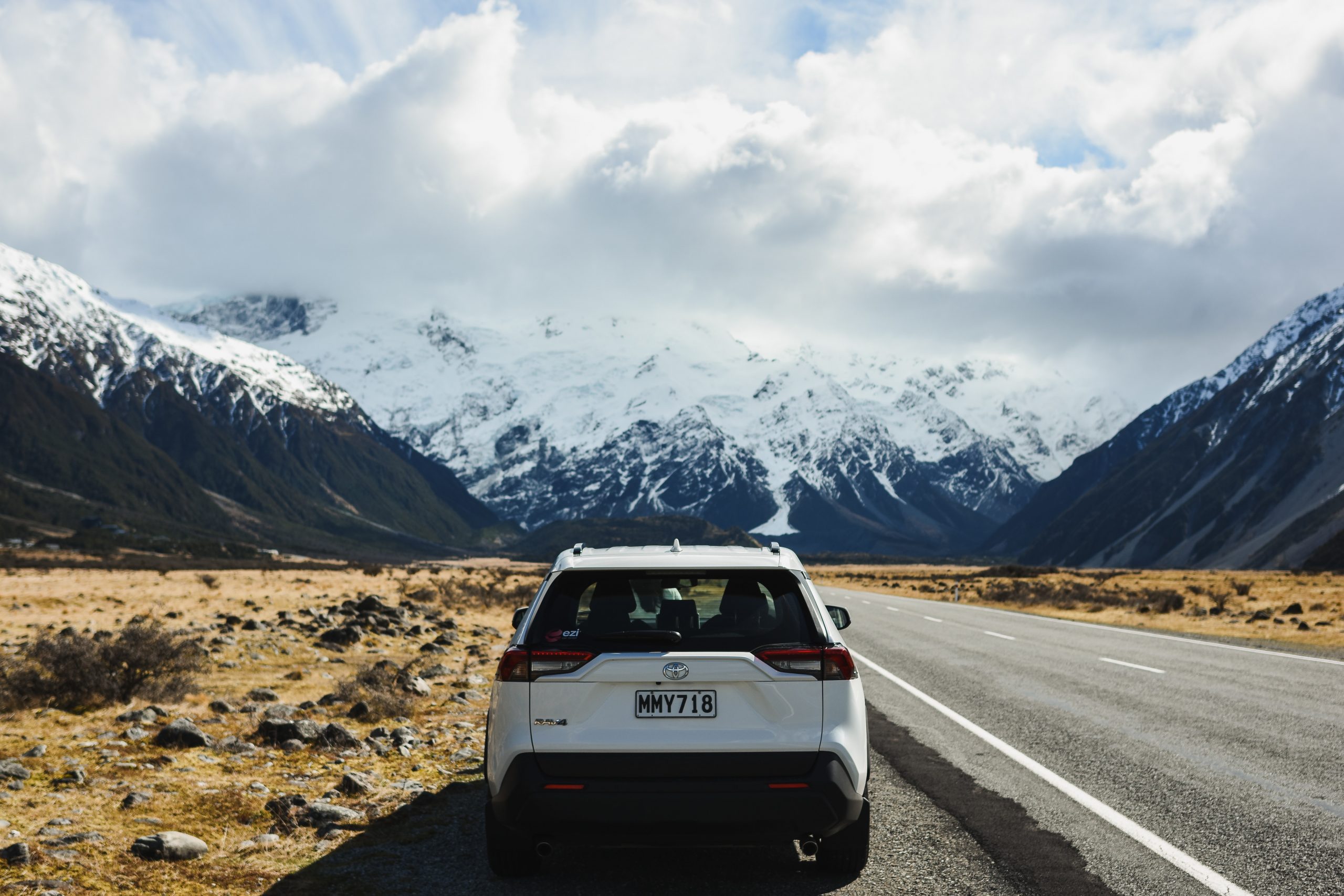
Hiring a car to drive around New Zealand is an exhilarating experience.
Driving is relatively easy in New Zealand (as long as you’re comfortable driving on the left!), and it’s a great way to check out spots that are off the beaten track.
If you feel comfortable driving long distances on your own, then car hire may be a good option for your solo itinerary.
For car hire I can recommend Jucy Rentals , who offer cheap car rentals and have various drop off locations on both North and South Island.
This means if you don’t want to drive back to Auckland after your solo road trip, you can drop off the car in Queenstown or Christchurch.
I’ve used Jucy both in New Zealand and Australia and was really impressed with the customer service and quality of the vehicles for reasonable prices.
New Zealand Campervan Hire for Solo Travellers
When solo travelling I personally prefer to stay in hostels as it’s the best way to meet new people and socialise.
However, if you do want to do complete your New Zealand solo traveller itinerary in a campervan, then you will have an amazing time.
In spring and summer, many of the free camping spots are full of backpackers so you will still have an opportunity to meet new people on the road.
For solo campervan hire in New Zealand, I would again chose Jucy Rentals .
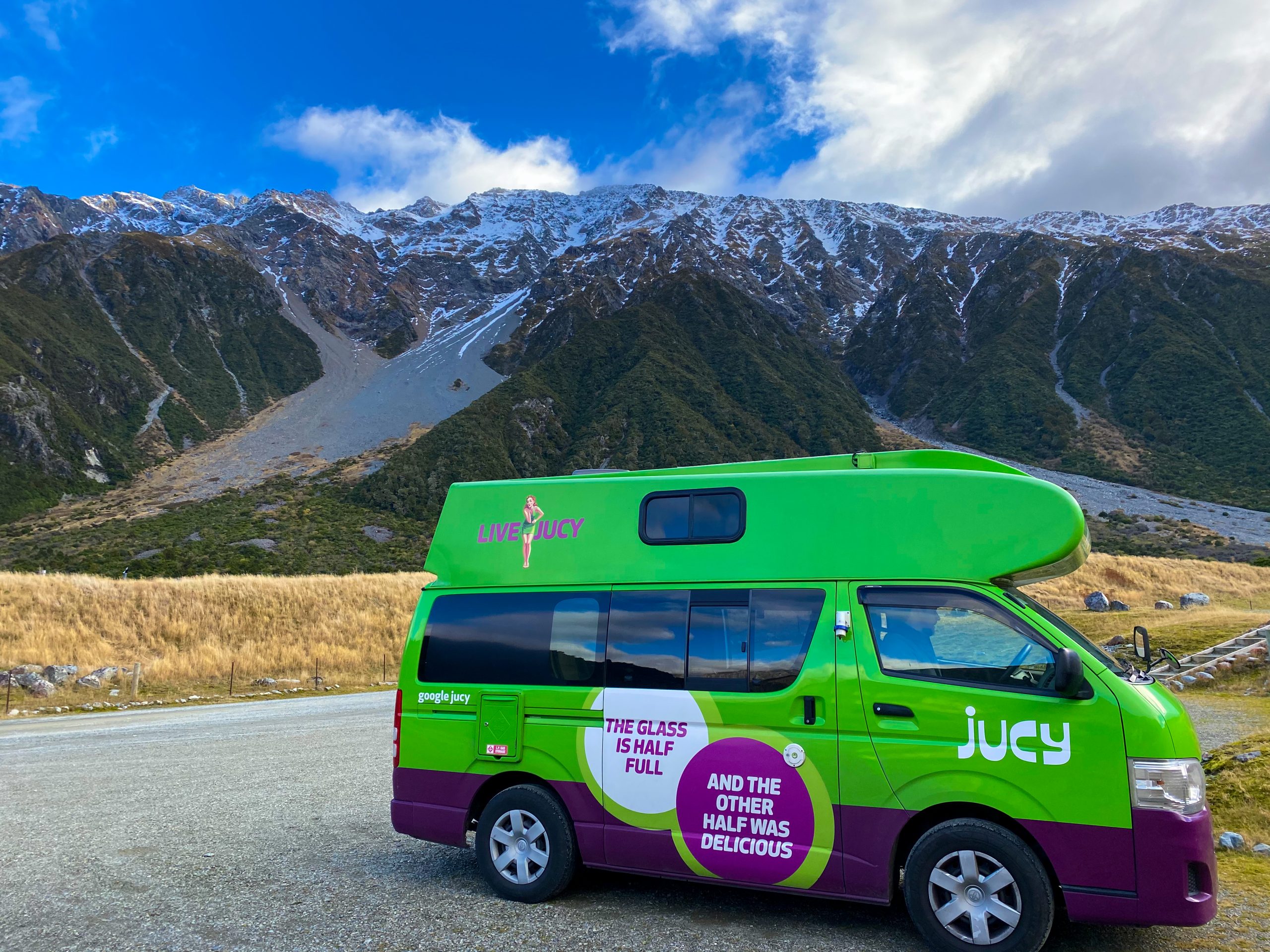
The iconic bright green and purple campervans are always a good conversation starter, and it’s an unspoken rule that you have to wave at all fellow Jucy vans on the highway!
Stop 1: Auckland

It’s most likely that you’ll fly into Auckland, given that it’s the biggest international airport.
Auckland is a brilliant place to start your solo New Zealand itinerary, offering great opportunities to meet people and organise your transport around the country.
The best place to stay in Auckland for solo travellers is Haka Lodge, where you can choose between dorms or private rooms.
At Haka Lodge, you’ll be able to meet like-minded travellers who are also most likely at the beginning of their Kiwi adventure.
If you only have a short time in Auckland before commencing your solo New Zealand roadtrip, I can highly recommend doing an Auckland Walking Tour with an expert local guide , a Discover Auckland Scenic Discovery Tour or an Auckland Food Walking Tour .
Whilst in Auckland, don’t miss Viaduct Harbour, Auckland Sky Tower and Auckland War Memorial Museum .
Stop 2: Bay of Islands
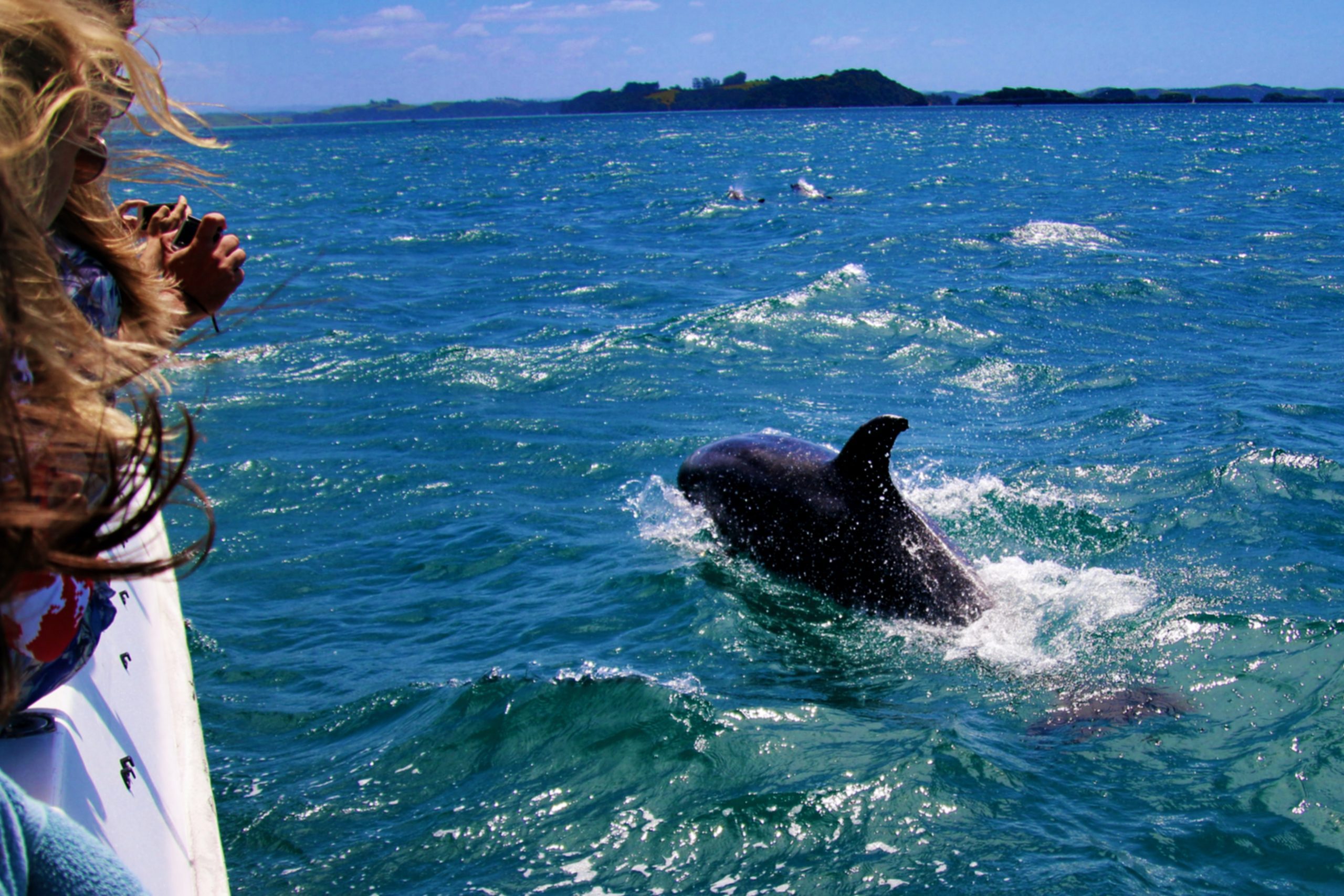
Bay of Islands is a cluster of 140 subtropical islands on the east coast of the country.
It’s famous for pristine waters, unspoilt beaches and marine life.
Bay of Islands is also a great place to visit as a solo traveller, with a couple of chilled out beach hostels to stay at.
As a solo traveller I would choose to stay in Paihia, a relaxed coastal town known as the gateway to the Bay of Islands.
Haka Lodge Paihia is a brilliant backpackers hostel right on the beach, with paddleboards and kayaks available to hire.
Some of the islands can only be accessed by boat, so you may want to do a Bay of Islands Boat Tour to discover marine life, snorkel, SUP and sunbathe with your tour group.
Bay of Islands is also the place for thrill-seekers to do one of the highest skydives in New Zealand (20,000 ft).
Whilst in the Paihia, definitely check out the Waitangi Treaty Grounds (a preserved site where the first accord between the British and the Māori was signed).
Stop 3: Waitomo Caves

Waitomo Caves is a famous extensive underground cave system full of glow worms.
It’s one of the most unique experiences in New Zealand and tourists come from all over the world to experience the magical glow worm caves for themselves.
Whether you want to do a Glowworm Caving Adventure , a Black Water Rafting Experience , or a Budget-Friendly Boat Tour , there are plenty of group tours available so you can enjoy this experience with others.
For the best accommodation for solo travellers near Waitomo Caves, I can highly recommend YHA Waitomo Juno Hall .
The youth hostel is just down the road from the Waitomo Caves and has an outdoor pool and fab BBQ/ communal areas to enjoy the warm summer evenings with new friends.
Stop 4: Hot Water Beach
The Coromandel Peninsula is known for it’s pristine aquamarine water and laid back holiday vibes, as well as the famous Hot Water Beach.
The best place for solo travellers to stay on the Coromandel Peninsula is Hot Water Beach TOP 10 Holiday Park .
Here you can opt for a mixed dorm in a cosy cabin or choose a private glamping pod/ room.
The super clean communal kitchen is a great place to make friends, and get a group together to dig for hot water on the nearby popular beach.
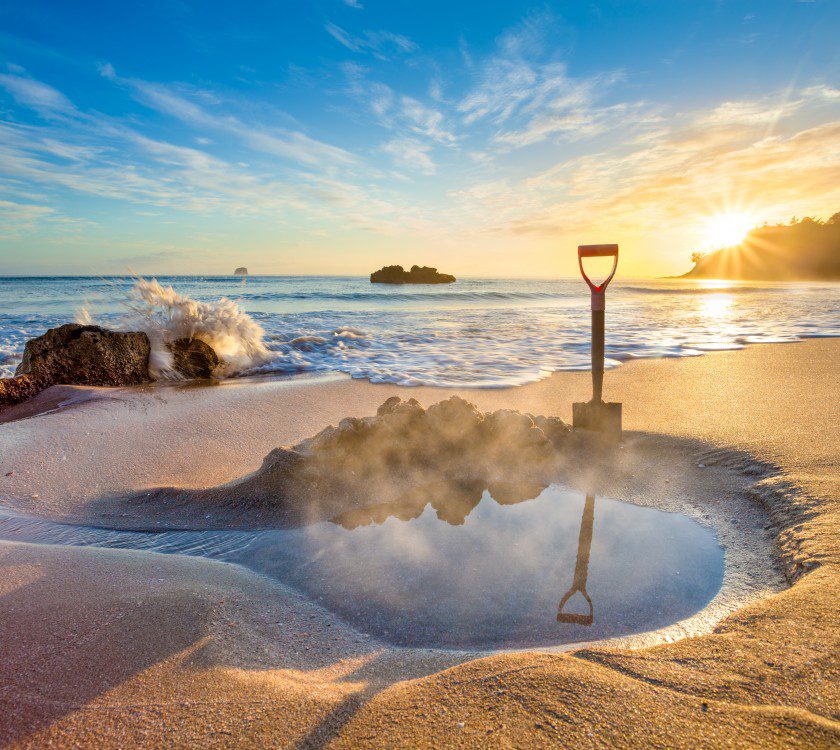
Due to a natural phenomenon where hot springs run underneath the sand, at certain times of the day you can grab a shovel and dig a hole in the sand that will fill with thermal water.
The water is only hot for 2 hours either side of low tide (make sure you check the low tide times and plan your trip accordingly).
Look for the small rocks sticking out of the sea and dig in front of them, because this is where the hot water is found.
You don’t need to bring your own shovels, you can rent them for a couple of dollars from the café near the beach.
Whilst you’re on the Coromandel, don’t miss the epic Cathedral Cove Kayak Tour in the clear aquamarine water, along with the stunning cliffs of Cooks Beach .
Stop 5: Mount Maunganui
The next stop is a laid back surf town with great nightlife.
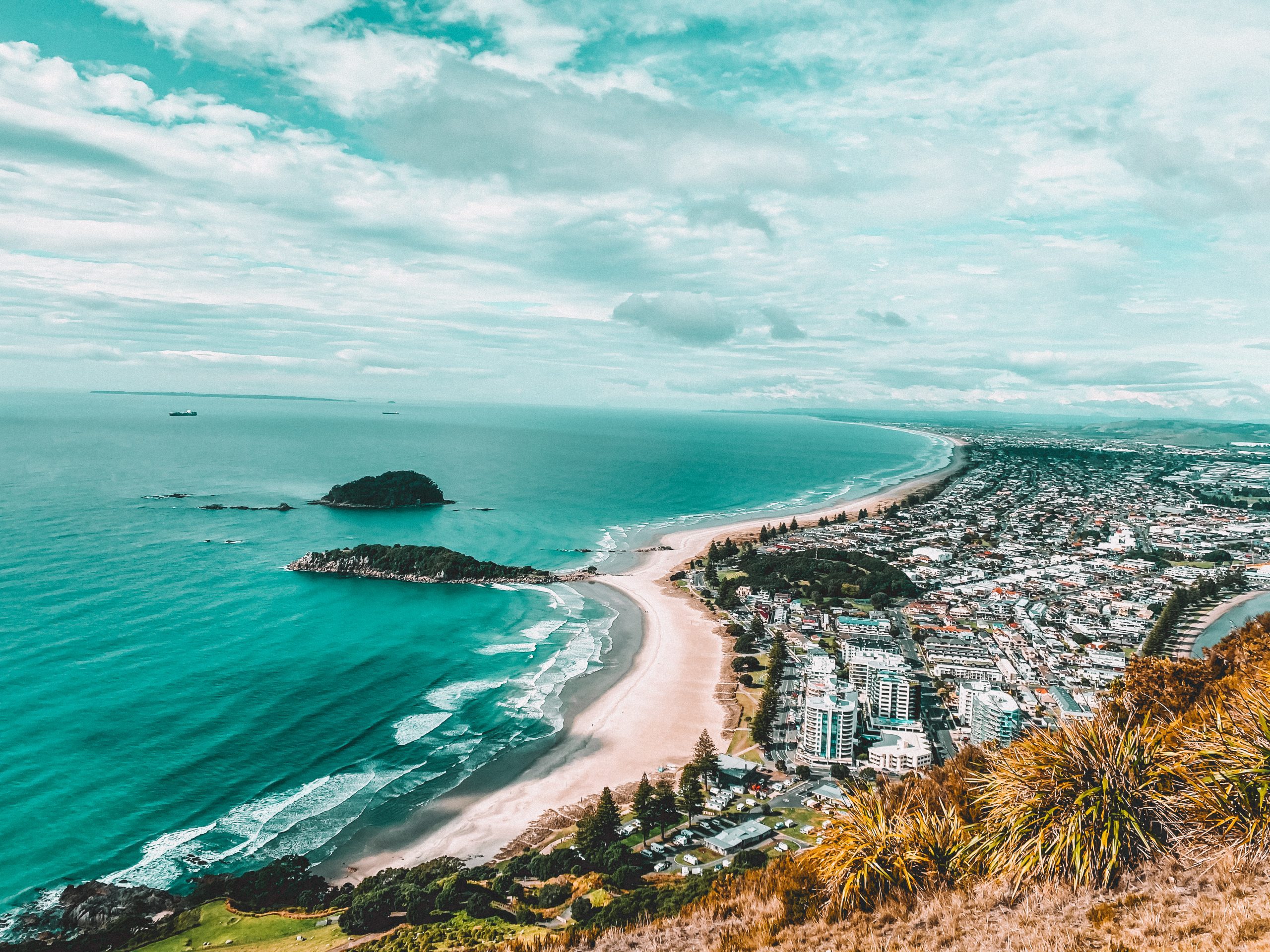
Mount Maunganui is an extinct volcano by the ocean, and it’s one of New Zealand’s Best Short Hikes .
Below the volcano you’ll find Main Beach , which is popular with surfers and suitable for beginners.
The best place for solo travellers to stay in Mount Maunganui is Mount Backpackers .
Found just round the corner from the beach, the sociable hostel offers group home-cooked dinners and surfboard/ wetsuit hire.
You’ll also find fellow travellers at the hostel to party with (don’t miss Voodoo Lounge and Palace Tavern).
Stop 6: Rotorua
Rotorua is famous for geothermal activity, and it’s also the best place in New Zealand to learn about Māori culture.
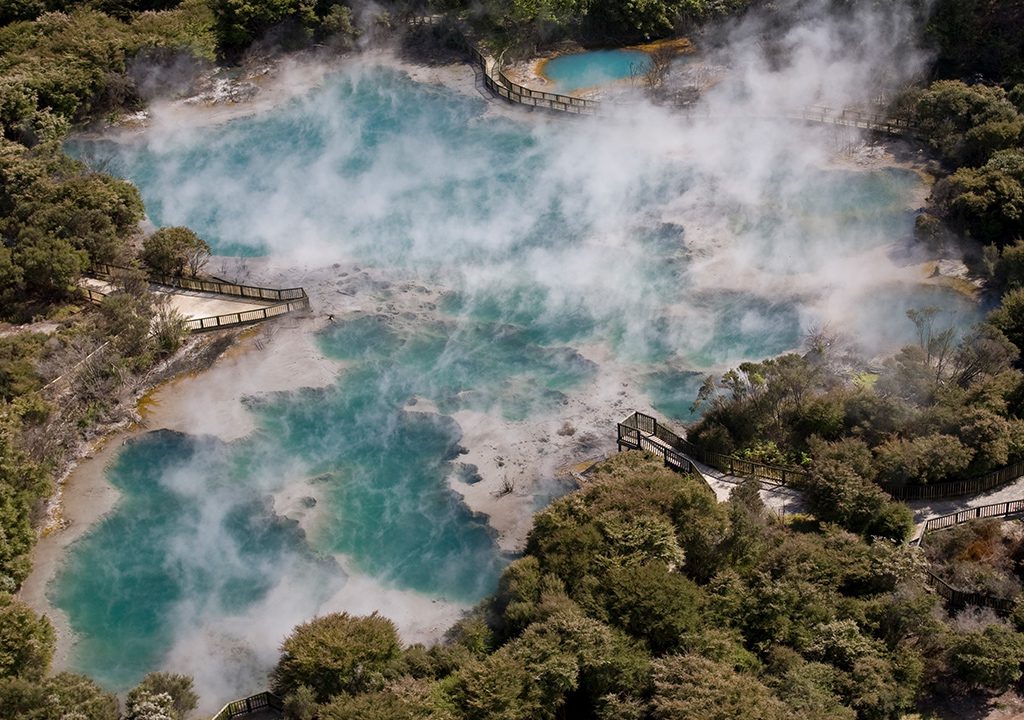
The buzzing town is a great place for solo travellers to base themselves for a few days, with opportunities to do cool group activities.
Rotorua is the best place to do white water rafting in New Zealand, with the nearby Kaituna River being home to the highest rafted waterfall in the world .
This adrenaline-filled activity is a brilliant way to make friends with fellow thrill-seekers.
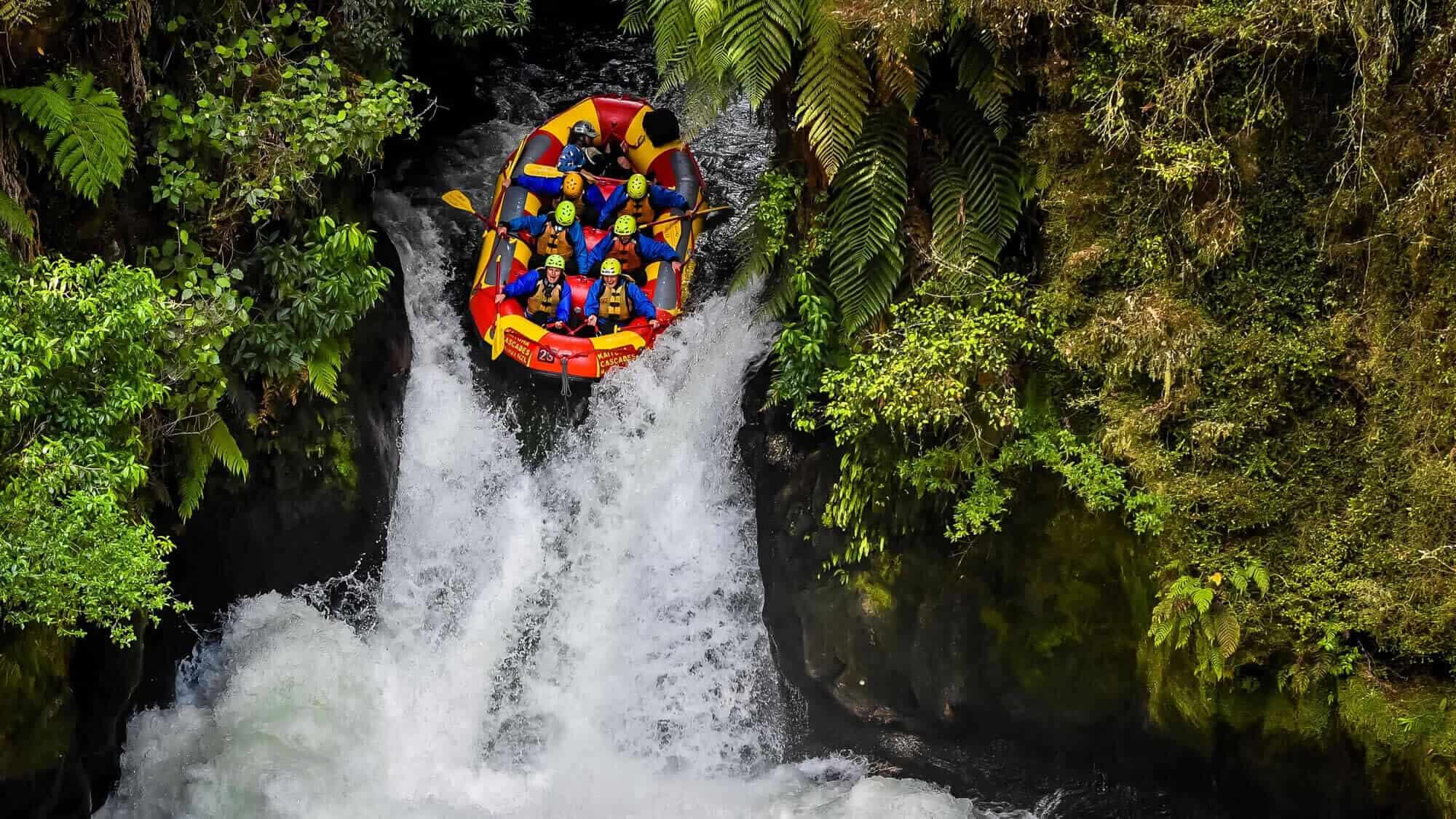
In terms of accommodation for solo travellers, Rock Solid Backpackers is the best place to stay.
It’s found on Eat Street, Rotorua’s iconic street filled with eateries, bars and a nightclub, meaning it’s a really sociable spot to enjoy with new friends (try and plan your trip around the Thursday Rotorua Night Market for amazing street food).
At the hostel, get a group of backpackers together and drive out to the free thermal attractions around Rotorua, such as Kerosene Creek natural hot spring and Waiotapu Mud Pool .
For authentic cultural experiences in Rotorua, check out Te Puia (home to the impressive Pōhutu geyser) and Mitai Living Maori Village .
Other cool activities to do in Rotorua include the Ziplining Forest Adventure in the Redwood Forest and the Rotorua Luge .
If you’re a Lord of the Rings fan, you should also do a day trip to The Hobbiton Movie Set from Rotorua (it’s only an hour away by car).
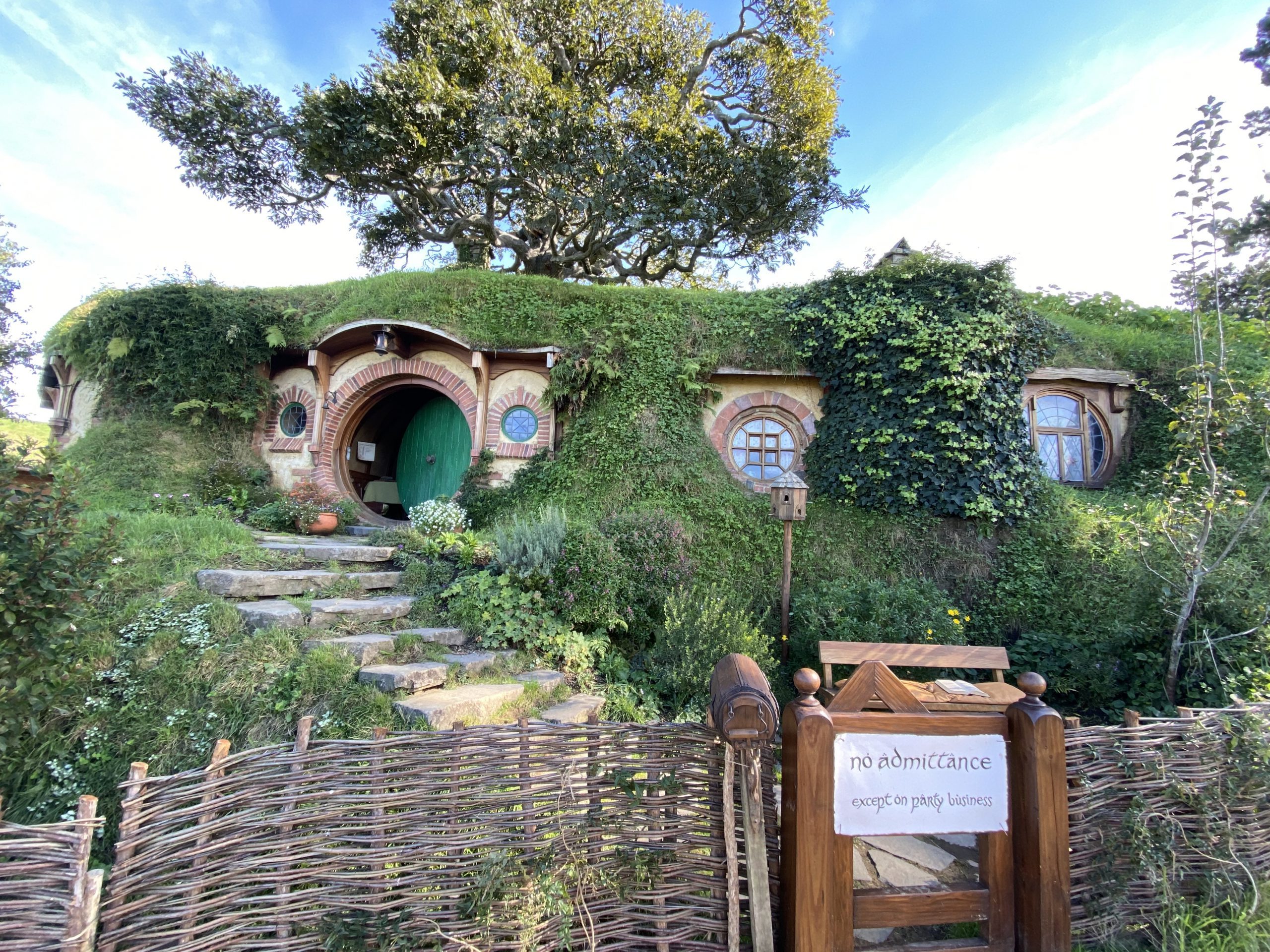
Stop 7: Lake Taupo
Lake Taupo is the largest lake in the country, and a must-stop destination on your New Zealand itinerary for solo travellers.
Solo travellers should check into Finlay Jack’s Backpackers , a really cool hostel with free morning yoga, group BBQs and even backyard gigs in the summer.
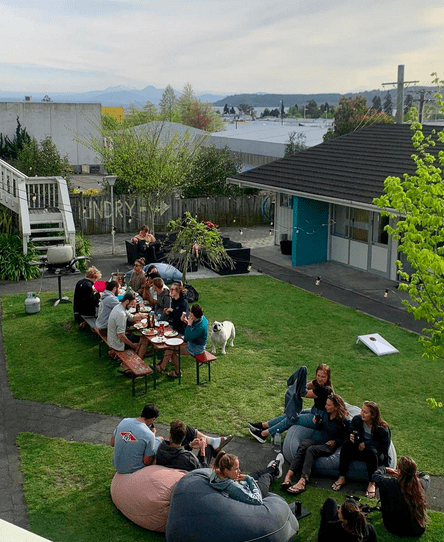
Other sociable backpacker hostels around Lake Taupo include Haka Lodge Taupo and Rainbow Lodge Backpackers.
After making some new mates in your hostel, get a group together and check out Huka Falls , New Zealand’s famous waterfall that drains a quarter of a million litres of water per second from the lake.
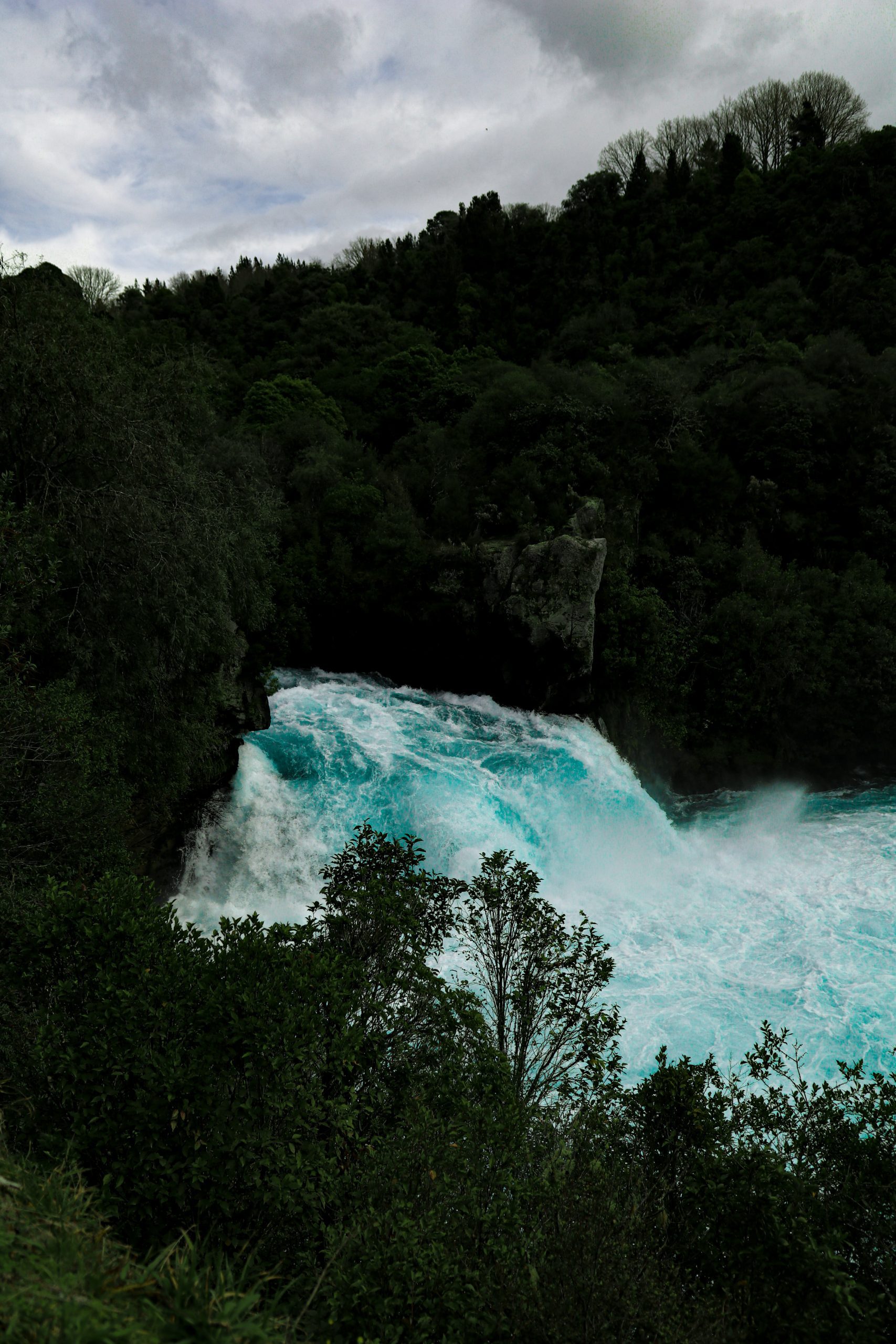
Fellow adrenaline junkies at your hostel may enjoy a group trip on the thrilling Huka Jet , whilst those who love a good stomp will be challenged by Mt Tauhara .
Want to learn more about māori history in Taupo? Why not join a boat trip out to the Māori rock carvings at Mine Bay (it’s really cheap!).
Stop 8: Tongariro Alpine Crossing
The Tongariro Alpine Crossing is one of the most famous attractions in New Zealand, and it’s easy for solo travellers to find fellow hikers to tackle it with.
The hike through Mordor in Tongariro National Park is a must-do for any Lord of the Rings fan, with a chance to get up close to Mount Ngauruhoe (Mount Doom).

All you need to do is check into the YHA National Park Backpackers , who offer shuttle buses to and from the Tongariro Alpine Crossing every day (during high season).
Hiking solo can be dangerous in New Zealand, but YHA National Park Backpackers takes away that worry by offering group shuttles to hostel guests.
There is also a climbing wall at the hostel, with guests offered equipment hire at a discounted rate.
Prefer to do a guided trek of the Tongariro Alpine Crossing ? This highly rated guided trek includes transfers from National Park Village where the YHA is located.
Stop 9: Wellington
The capital city is a fantastic stop on the New Zealand itinerary for solo travellers.
The Marion Hostel is the best hostel in Wellington – it has been beautifully refurbished to add a little luxury to the backpacker experience (and it has a sociable roof terrace).
Whilst in Wellington definitely check out Te Papa Museum of New Zealand , which is free entry and has brilliant exhibitions.
With your new travel mates from the hostel, take a stroll up to Mount Victoria Lookout at sunset for great views over the city and the waterfront.
For those wanting to experience some of Wellington’s nightlife, don’t miss Cuba St for a buzzing atmosphere.
Stop 10: Christchurch
Christchurch is the biggest city on New Zealand’s South Island and a cool place to check out for a day or two.
Solo travellers should stay at The Old Countryhouse , a friendly hostel with a social atmosphere near the city centre.
Whilst in Christchurch, don’t miss the vibey Riverside Market and the colourful New Regent Street for great bars and cafés.

Christchurch also has lots of English heritage that can be enjoyed by strolling along the River Avon, and don’t miss the old vintage trams rumbling through the city.
Stop 11: Lake Tekapo
Lake Tekapo is stunning spot in the heart of South Island that solo travellers will love.
YHA Lake Tekapo is a great sociable spot to stay for solo travellers, with a common area overlooking the lake.
Whilst in Lake Tekapo don’t miss Mt John Summit Circuit Track for panoramic lake views and the beautiful Church of the Good Shepherd at sunrise.
Whilst here the friendly staff will help you to organise a trip to Mount Cook via Lake Pukaki , which I would highly recommend for epic scenery.
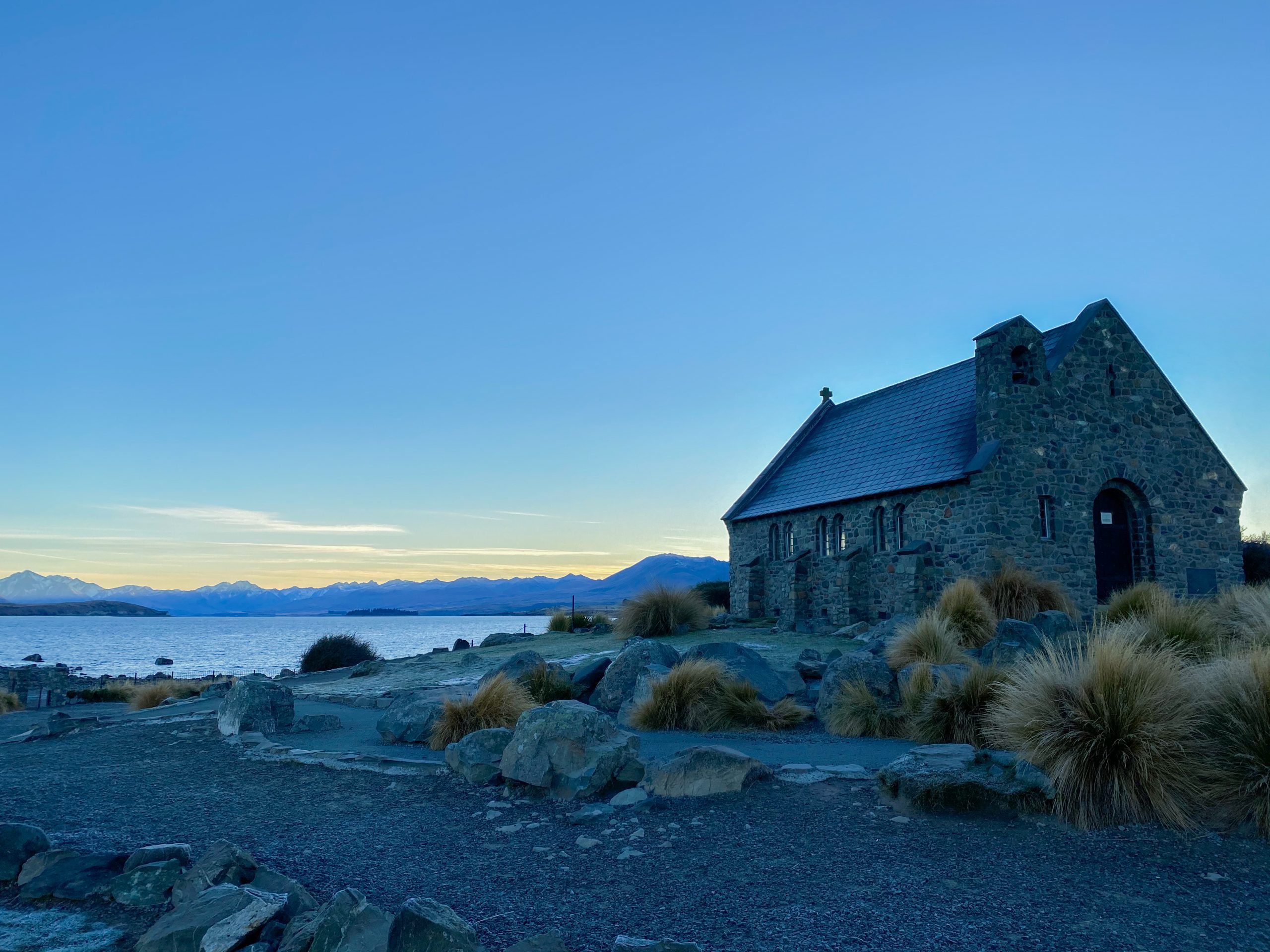
Stop 12: Queenstown
And now we get to the pearl of South Island, the lakeside paradise of Queenstown.
Queenstown is probably one of the best spots in New Zealand for solo travellers, with loads of activities and tours available.
Solo travellers should stay at Adventure Queenstown Hostel , found just a block from the shores of Lake Wakatipu.
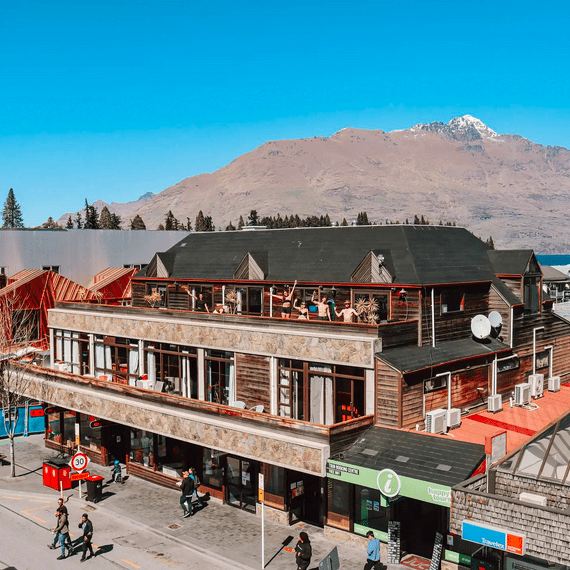
The budget-friendly hostel offers hostel-run events and activities 7 nights a week, along with a roof terrace with views of The Remarkables mountain range.
With your new hostel friends why not go bungee jumping off Kawarau Gorge Suspension Bridge or do a 85km/hour jet boat ride through the Shotover River Canyons .
If a group of you enjoy hiking you can tackle Queenstown Hill ( don’t be fooled – it’s actually a small mountain ) or the even more challenging Ben Lomond .
Heading up the Skyline Gondola is a bit of a rite of passage in Queenstown (it’s one of the best viewpoints in New Zealand ), but adrenaline-junkies might prefer the Queenstown Zipline Adventure for even better views.

Food-enthusiasts should try the cult burgers at Fergburger and authentic Mexican at Margo’s Queenstown .
A sunset drink at Perky’s Floating Bar is obligatory, whilst party animals won’t be disappointed by Queenstown’s après-ski style nightlife.
If you can get a group together at the hostel, you should spend a day driving out to Glenorchy and Arrowtown, two beautiful heritage towns just outside of Queenstown.
Queenstown is also the perfect base for solo travellers to do a day trip to the famous Milford Sound, I would recommend the Milford Sound Day Tour from Queenstown .
Stop 13: Lake Wanaka
Lake Wanaka is another of the South Island’s famous lakes.
Solo travellers should stay at Wanaka Bakpaka Hostel , a lakeside 1920s hunting lodge with amazing views over the glacial waters.
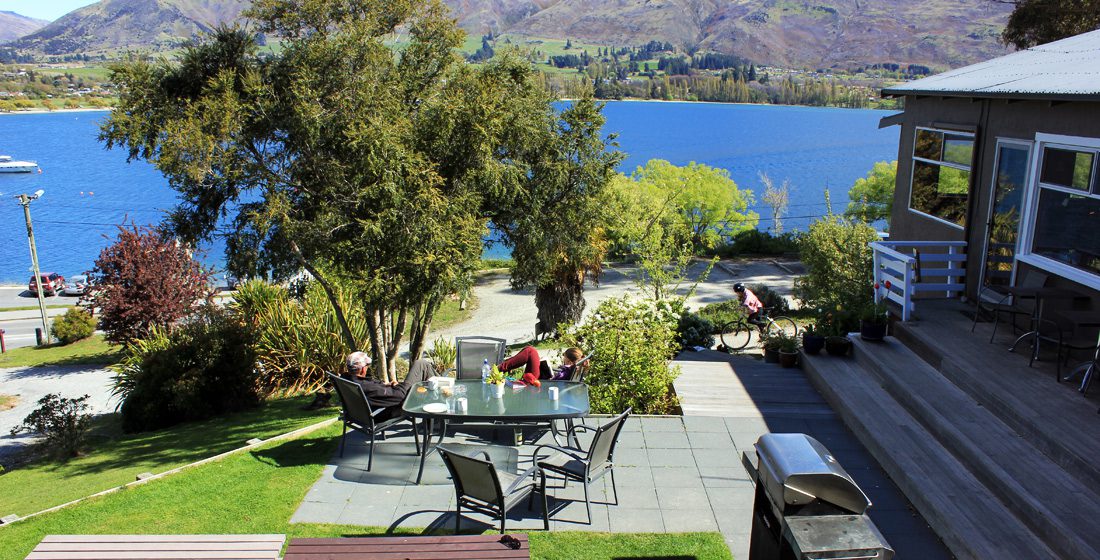
You can’t visit Wanaka without checking out #ThatWanakaTree , a willow tree sticking out of the water towards the southern end of the lake.
A group of you from the hostel may want to tackle the legendary Roy’s Peak , or bathe in the Blue Pools of Mount Aspiring National Park.
Wanaka is a small town, but it still has some cool spots for a drink. Don’t miss Cork Bar and b.social , or Ground Up Brewing and Rhyme X Reason Brewery for local craft beer.
Stop 14: Franz Josef Glacier
The next stop on your New Zealand itinerary for solo travellers is the ‘ Wild West Coast ‘.
Known as Glacier Country, Franz Josef Glacier is found on the other side of the Southern Alps to Mount Cook, yet the landscapes are so different.
Solo travellers visiting Franz Josef Glacier should stay at Glow Worm Accommodation , a chilled backpackers hostel with a hot tub and free breakfast, as well as free soup in the evenings and unlimited popcorn.
On a clear day you can see Franz Josef Glacier from the kitchen, and you’ll be able to get a group together to hike up to the glacier observation deck .
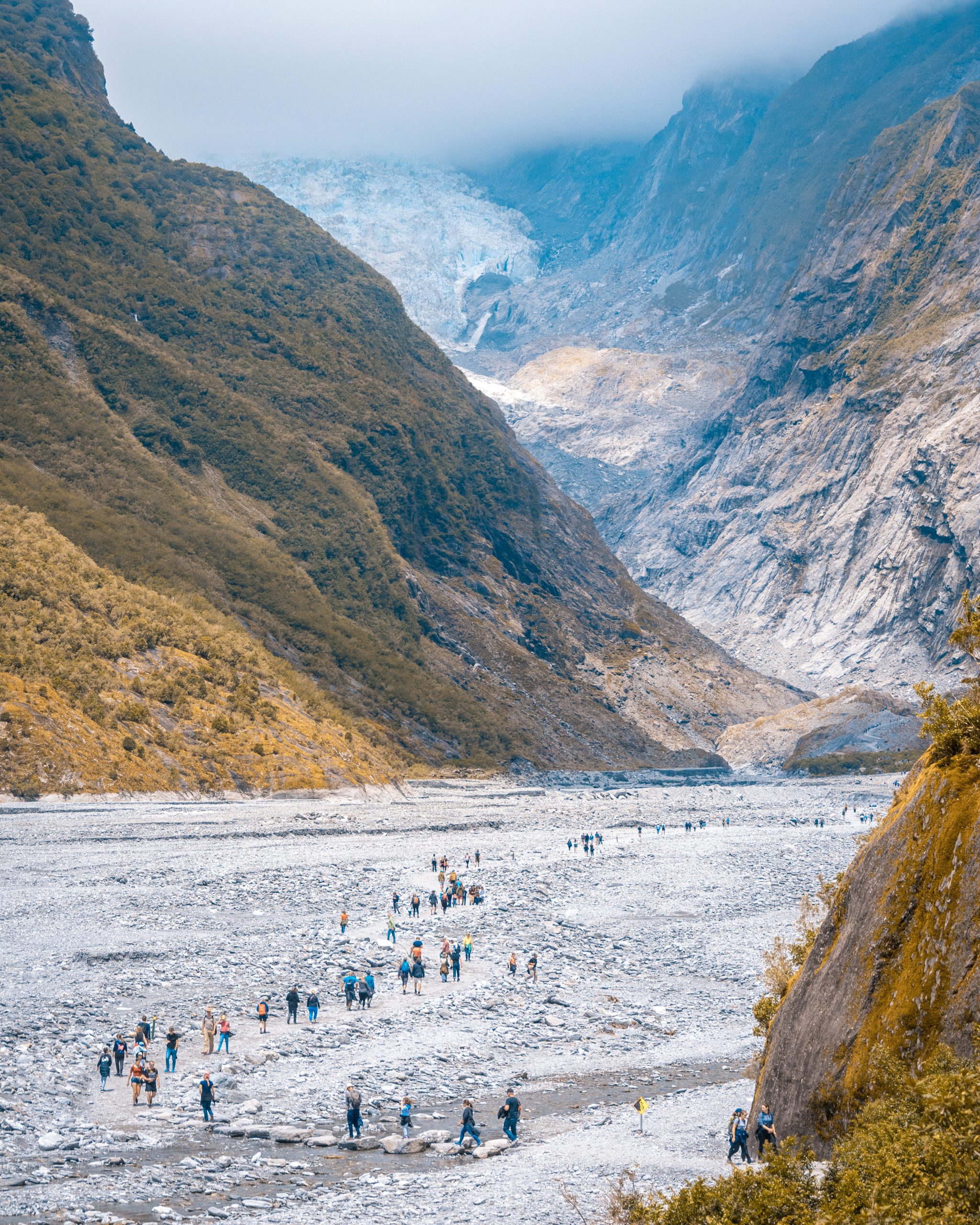
I hope you enjoyed this New Zealand itinerary for solo travellers. Don’t miss the best viewpoints in New Zealand too!

What to Wear in New Zealand: Packing List for All Seasons
Hiking , Oceania Packing Lists , Packing Lists , Travel Packing Lists
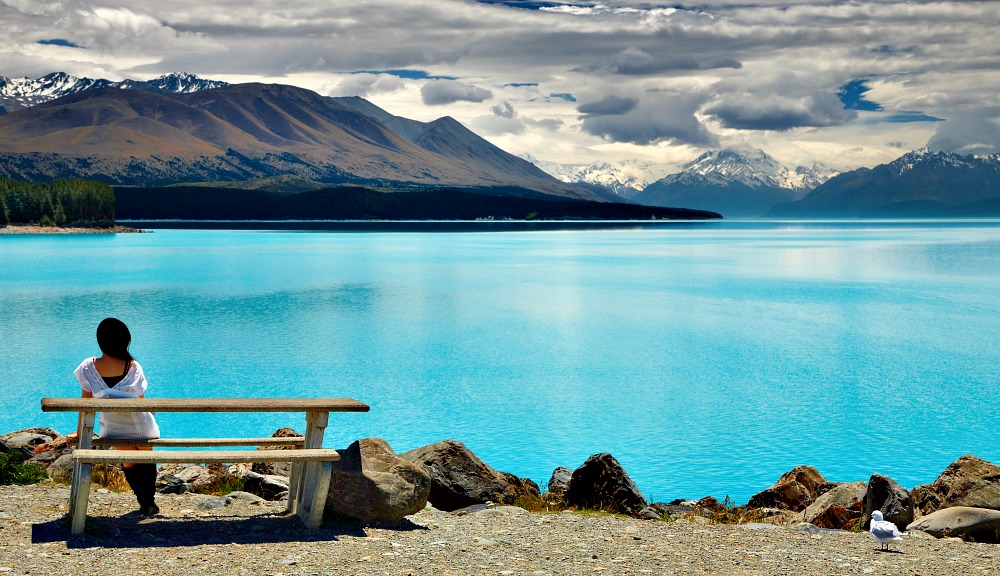
Support TFG by using the links in our articles to shop. We receive a small commission (at no extra cost to you) so we can continue to create helpful free content. We earn from qualifying purchases made to the featured retailers. Thank you, we appreciate your support!
New Zealand is one of the adventure capitals of the world with jaw-dropping mountains, crisp blue lakes, beautiful beaches, and a bustling capital. If it’s not on your list yet, it should be, soon! It’s an absolute must! Here’s what to wear in New Zealand!
What to Wear in New Zealand
Written By: Marijs Vrancken
Table Of Contents
New Zealand is an incredible country, and both the north and south islands offer amazing sites and activities, from city tours to nature excursions. One of the best things about New Zealand is that you can visit any time of year and have a wonderful experience.
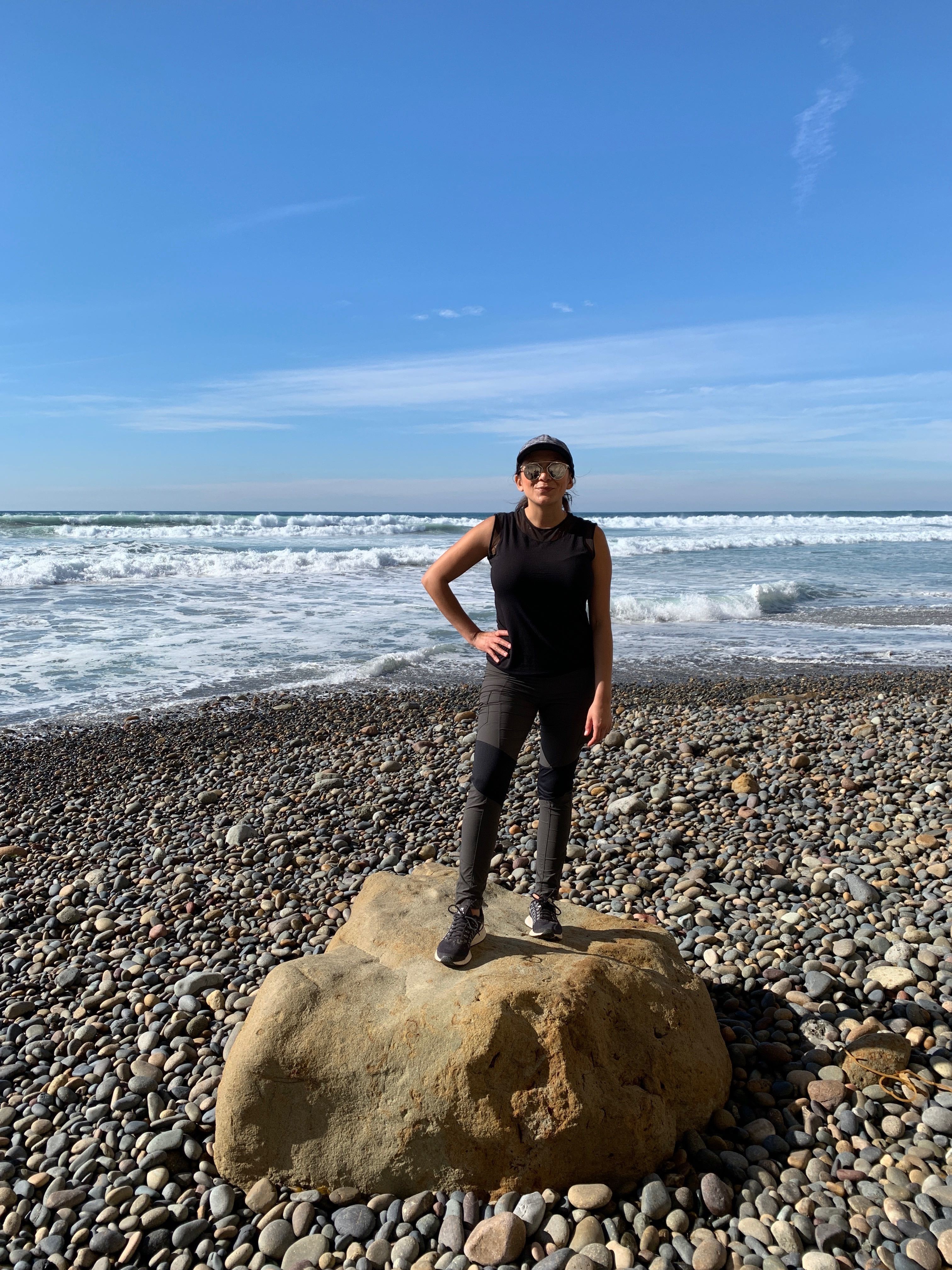
What Should I Wear in New Zealand?
The most important factors in planning and packing for New Zealand are the activities you’ll be doing on your trip AND the weather.
Always, always, always check the weather forecast before your trip. Once you’ve researched the weather, you can focus on creating a capsule travel wardrobe , which should easily fit in a carryon suitcase with the help of packing cubes to compress your clothing.
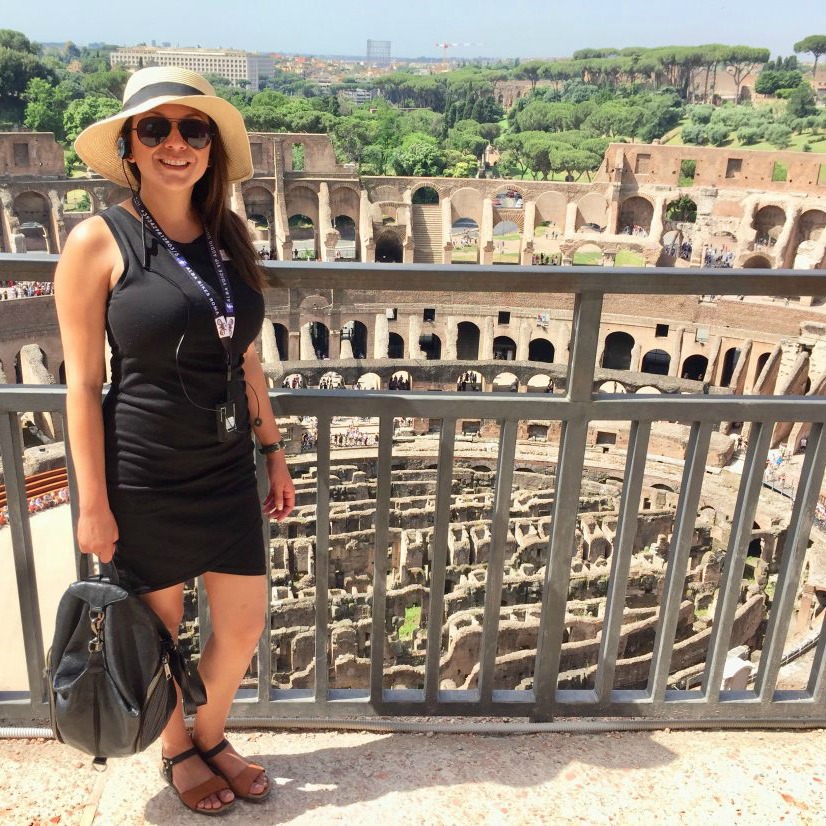
Outfit Details: Ruched Sleeveless Dress | Naot Sabrina Sandals | Rebecca Minkoff Bag | Hat
New Zealand Clothing Style
As you plan your New Zealand packing, keep in mind that when it comes to style, kiwis tend to be quite laid-back.
On the South Island, you’ll notice that people will rarely even change for Friday night drinks – they might even go barefoot if it was allowed! Packing your nicest pair of heels is therefore really not necessary when just visiting the South Island.

Outfit Details: Michael Stars Draped Top | Pants | Tory Burch Minnie Ballet Flats
People on the North Island do like to dress up a little more with hip cities such as Auckland and Wellington. So if you did pack that nice dress and heels, this is where you’re going to want to show it off. However, a nice top would probably save you some space and can go nicely with the jeans you have to pack anyway.

Top | Longsleeve | Tee | Henly | Shirt | Jeans 1 | Jeans 2 | Pants | Dress 1 | Dress 2 | Coat | Jacket | Boots 1 | Boots 2 | Scarf | Bag
What to Wear in New Zealand: Fall and Winter
While the North Island stays milder, the South Island will get icy cold during autumn and winter. As New Zealand has snow covered caps even in the summer, there will be more snow in the winter.
Some parts of the country will be battling icy winds and other parts will have rain – and lots of it. The sun will come out occasionally, but you should be layering for the cold and wet winter.
Expect anything from below freezing to a 70°F / 16°C and sunny day during the winter months and between 43- 68°F / 6-20°C in the autumn.
Read these tips on what to wear on a rainy day !
New Zealand Packing List for Fall and Winter
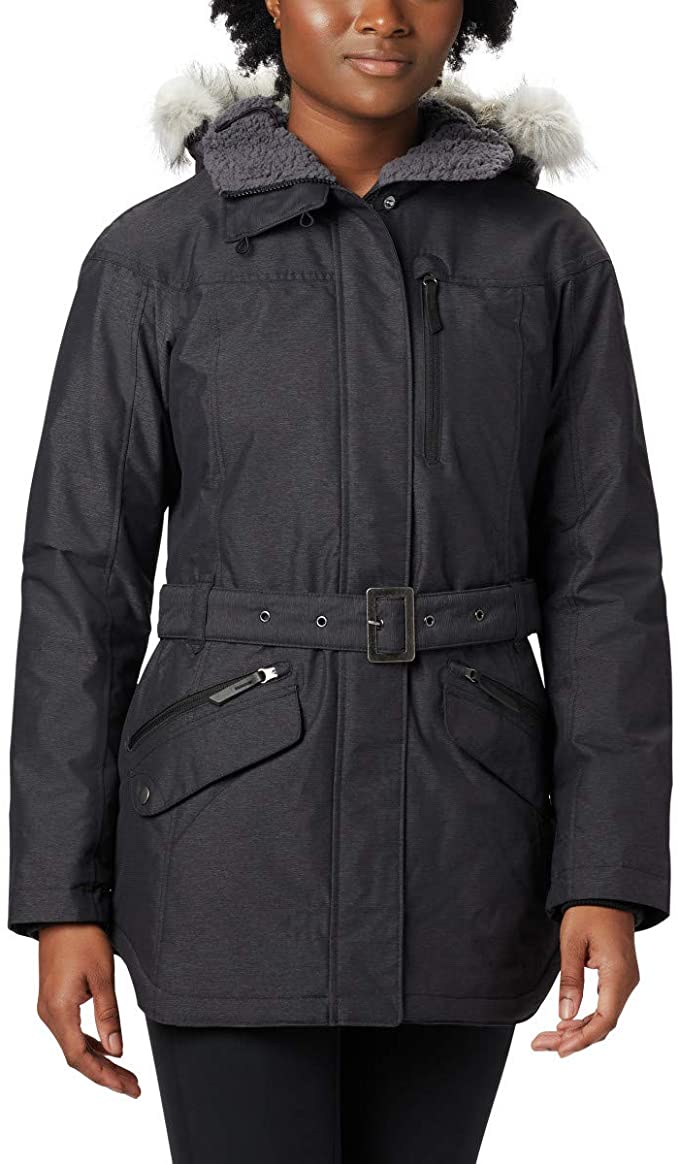
Columbia Carson Pass Ii Jacket
Because you’re expecting cold weather, autumn and winter are the seasons in which you’ll be packing the most.
An absolute essential item you need to bring as you plan what to wear in New Zealand is a warm jacket that can handle the snow. You might even want to consider adding a snow-proof pair of trousers to go with it. Pack an extra pair of jeans as your other one is bound to get wet and cold.
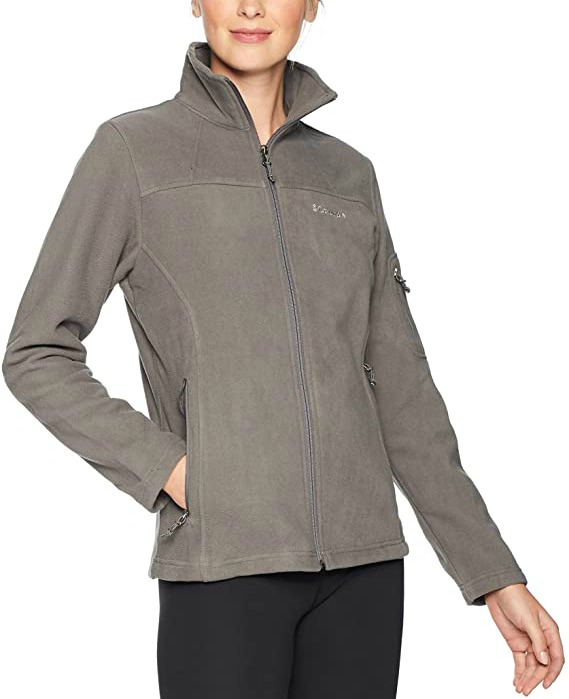
Columbia Full Zip Fleece Jacket
Adding gloves and a wool hat to your warm scarf will be a must as well as another top layer. This extra layer should be warmer than a normal sweater but less warm than your ski jacket.
A zip-up fleece jacket would be a good alternative here. Adding a few pairs of warm socks are, of course, a given.
Learn how to pack for cold weather here !

Tee | Top | Tank | V Neck | Longsleeve | Jeans 1 | Skirt | Shorts | Dress 1 | Dress 2 | Jacket | Raincoat | Boots | Flats | Scarf | Bag
What to Wear in New Zealand: Spring and Summer
In spring, weather will be warming up on both islands and you’ll finally be able to enjoy the sun a bit more! However, that doesn’t mean you’ll stay dry. Even in summer you’ll always want to have your rain jacket and scarf on hand.
That nice denim jacket also comes in handy when layering on cold summer and spring nights. Summer days can get as high as 86°F / 30°C but can reach under 50°F / 10°C when it becomes evening.
During spring you can expect anywhere between 41-68 °F / 5-20°C. Be prepared for any and all weather conditions!
New Zealand Packing List for Spring and Summer
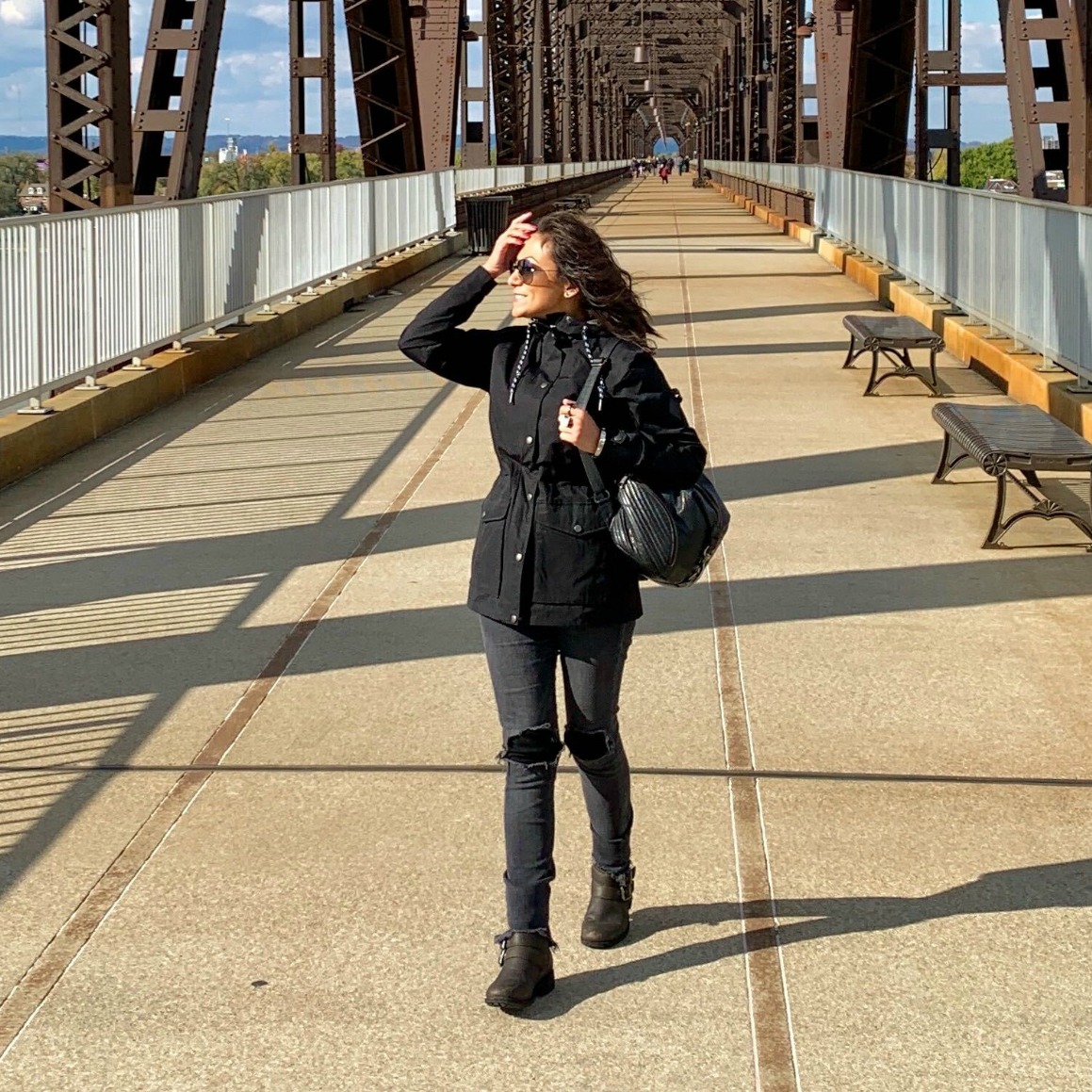
Eddie Bauer Charly Jacket
A major plus when planning what to wear in New Zealand is that you can skip the big snow jackets in summer and spring, you will still need a basic jacket and a rainproof jacket for layering and keeping you warm when the sun disappears.
You’ll be happy to have those layers with you. Yes, even that warm winter scarf.
Find out why we love these lightweight jackets for summer travel !
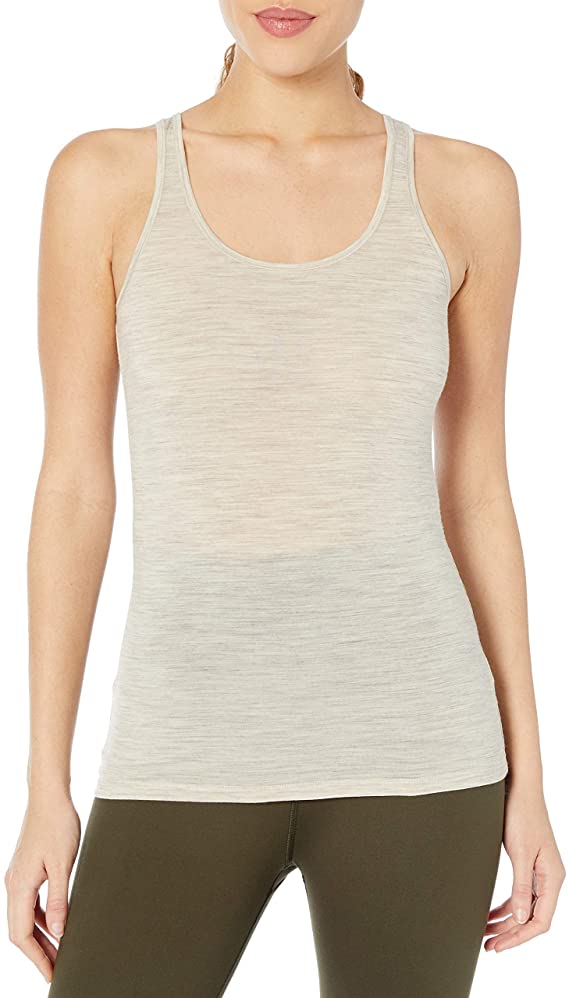
Icebreaker Siren Merino Wool Tank
When the sun comes out to play, it can warm up quite fast. Just as in autumn or winter, layering will always be key in New Zealand. Switching a couple of your t-shirts for some lighter tank tops can be an excellent idea.
Adding a lighter shoe such as an espadrille is perfect for New Zealand’s fickle weather.
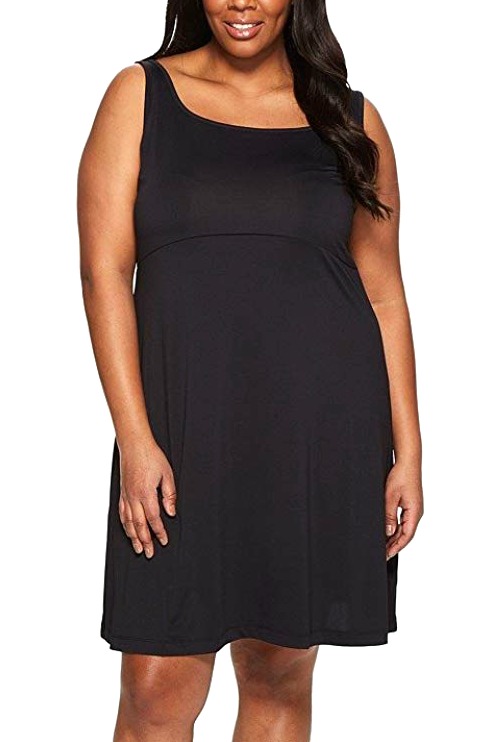
Columbia Sportswear Freezer III Dress
Even though you won’t be able to wear it on a daily basis, adding a pair or two of shorts or skirts will be a relief when you need to cool down. When focusing your travels to the North Island, I would even suggest throwing in another skirt and a summery dress .
If you’re planning to do some beach hopping on the North Island, taking a second bikini and a summer coverup is a good option. But always keep some warm layers close by!
Check out our readers favorite swimwear and the best swimsuit coverups for travel!
Watch the video above to learn more about how to pack according to your trip activities.
The Essential New Zealand Packing List
We’ve made this super simple and helpful by creating the ultimate packing list for New Zealand:
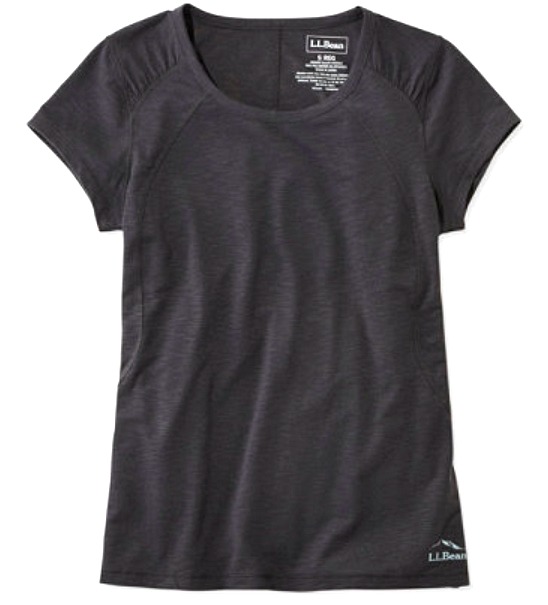
L.L. Bean Pima Cotton Tee
- 1 pair of jeans
- 1 pair of hiking trousers
- 1 sweater to keep you warm
- Thermal underwear + socks
- 1 rain and windproof jacket . A travel size umbrella will keep you dry in the cities, but the wind that accompanies the rain is quite strong, so it won’t last long elsewhere.
- 1 denim jacket or something similar that will give you warmth and will look nice in the cities
- 5-7 t-shirts made of natural material that breathe well
- 1 long sleeved shirt
- A nice top or dress to wear for a night on the town
- 10 pairs of underwear + 2 bras
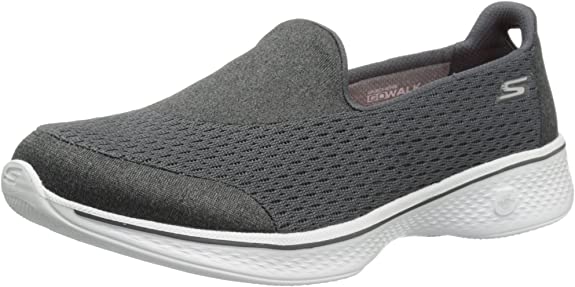
Skechers Go Walk 4 Charcoal Comfortable Sneakers
- A pair of flip flops is always handy to have, whether you’re wearing them in summer or around the hotel pool
- Hiking boots
- Sneakers for when heavy boots aren’t necessary or for when they’re too wet
- A nice pair of flats for a night out
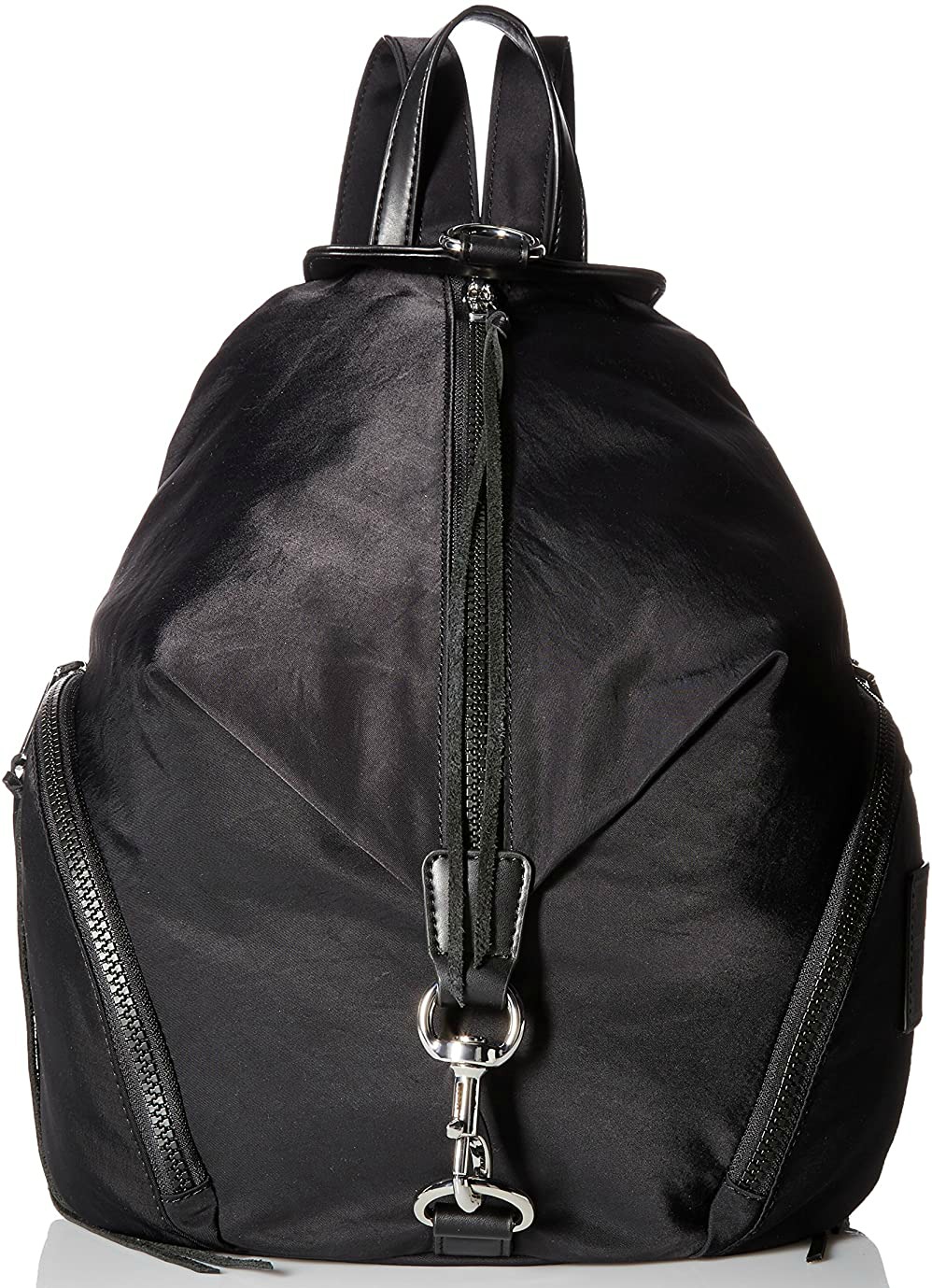
Rebecca Julian Nylon Backpack
Basic Necessities and Accessories
- Sunscreen (necessary in every season).
- Sunglasses.
- Sunhat : Looks good in photos and protects you from the sun.
- Bug spray: Cold or warm, the sandflies will always come to the party.
- Bikini or swimsuit : an obvious addition in summer but even in the winter you can have a dip in the hotel pool or in one of the many hot springs.
- Day pack : as you’ll most likely be going on several hikes. A day pack will be necessary through most of your trip.
- Toiletries , travel towel , and anything necessary for basic hygiene.
- Other adventure essentials: depending on which activities you are going to do.
- Electrical equipment such as phone, camera, GoPro, etc.
Learn our hacks with packing cubes in this video !
How to Pack Clothing for New Zealand
One way to organize your travel wardrobe is by using packing cubes. The Compass Rose packing cubes have a numbering and color system so it’s easy to identify where everything is! The video below demonstrates this.
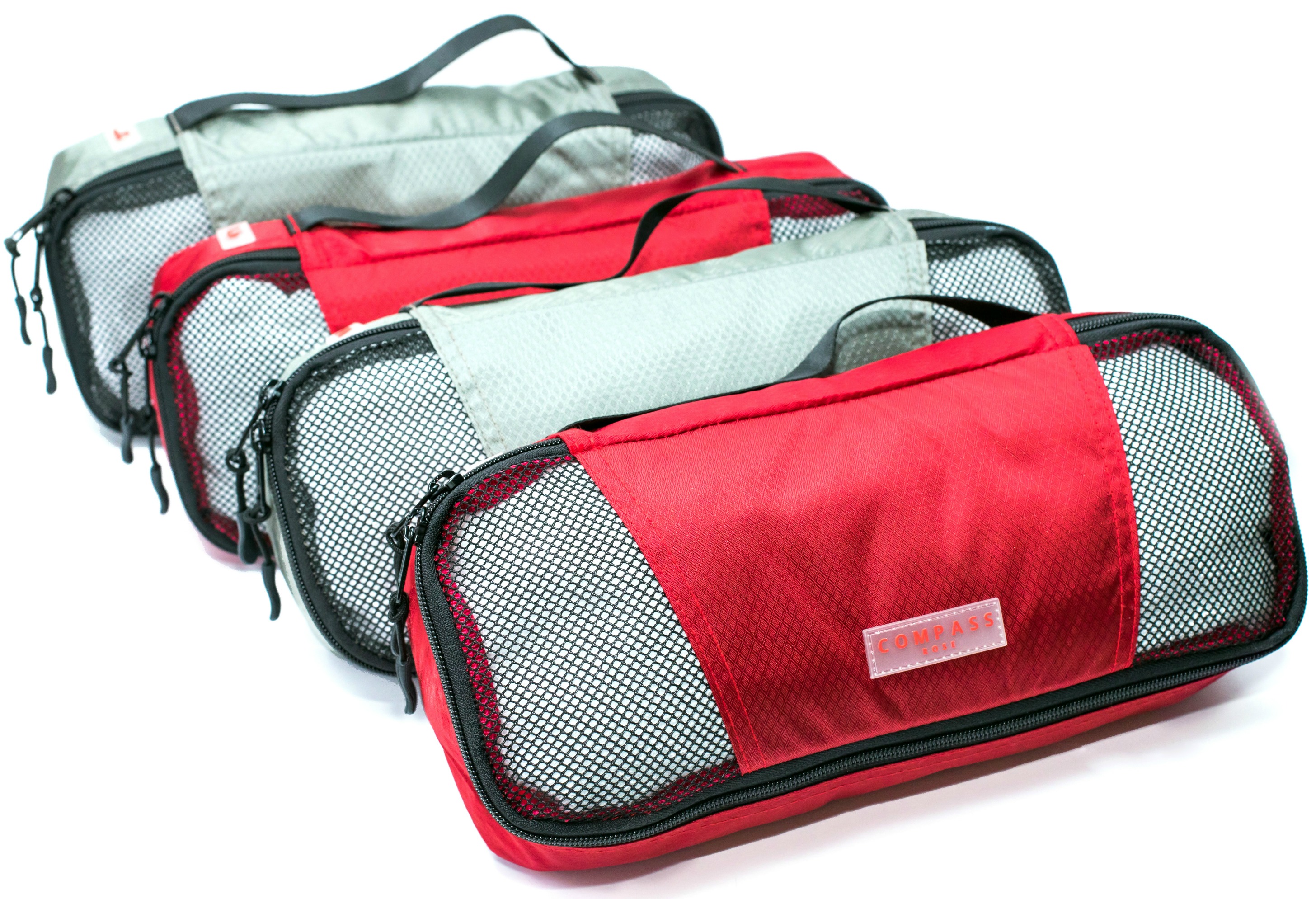
We also put together a five-part YouTube series showing the different methods to use packing cubes for travel. If you use this specific packing strategy, packing cubes can also compress your belongings. This is the secret to traveling carry-on only!
Watch this video that shows how you could pack for a trip with hot and cold weather.
New Zealand Packing Tips
Planning your New Zealand packing list poses a few challenges. The weather can change in a matter of minutes, meaning that you have to be prepared for sun, rain, wind, and maybe even snow.
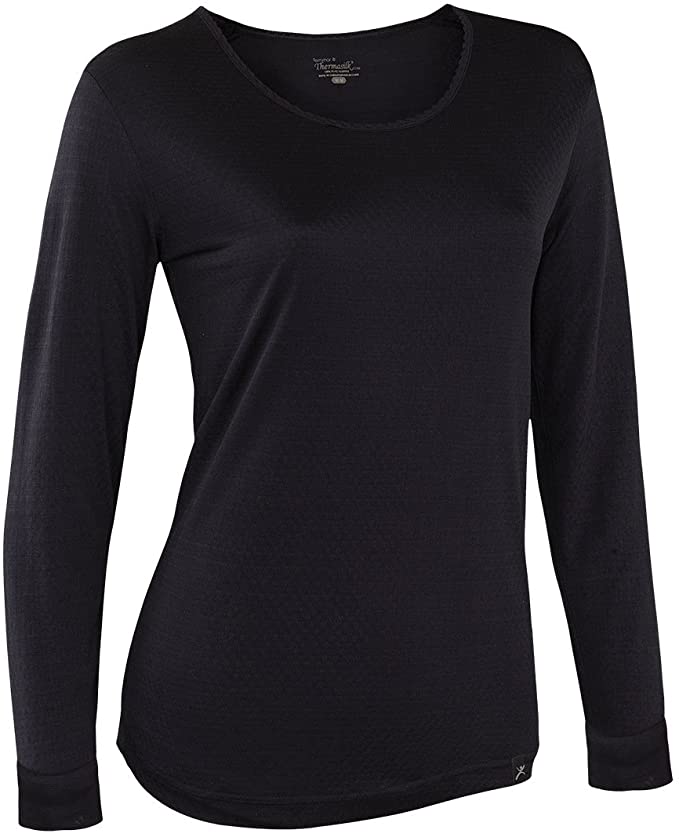
Terramar Silk Undershirts
This applies not only for winter but also for summer. Therefore, the key tips I can give you for packing is to layer, prepare for cold and wet weather, and take shoes that can handle such weather. Keep this in mind when wondering what to wear in New Zealand.
Find out why thermal long underwear is a must for traveling light (and staying warm) in winter!
The most important thing to know when planning what to wear in New Zealand is that you should pack for “four seasons in one day”, which means your packing list won’t change drastically for winter versus summer. As the weather is forever changing, be prepared to have one outfit that’s wet and then needing a second warm outfit ready at any time.
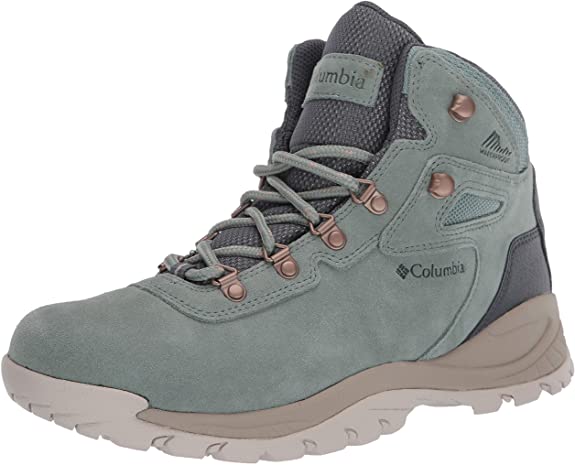
Columbia Women’s Newton Ridge Plus Waterproof Hiking Boot
Visiting New Zealand in summer will mean a few more summery items, while visiting in winter will mean adding a thick coat . The basic packing list will remain the same.
New Zealand is one of the few countries in which I would say that having a decent pair of hiking boots is a good idea. It will add to the bulk of your luggage so wear them on the plane to save weight!
What are the best hiking shoes for women ? Take a look at our top picks!
Check out this video of our review of the best lightweight luggage to help you choose the best one for your trip.
New Zealand Luggage Tips
So the hard part’s out of the way; after much turmoil you’ve finally figured out exactly what to wear in New Zealand – now it’s time to get packing! Which luggage will work best for you?
Depending on how many days or weeks you’re traveling, you may want to use packing organizers , which allow optimum use of the space in your luggage, keeping everything organized and in place during your travels, and making the task of unpacking and repacking simple and stress-free.
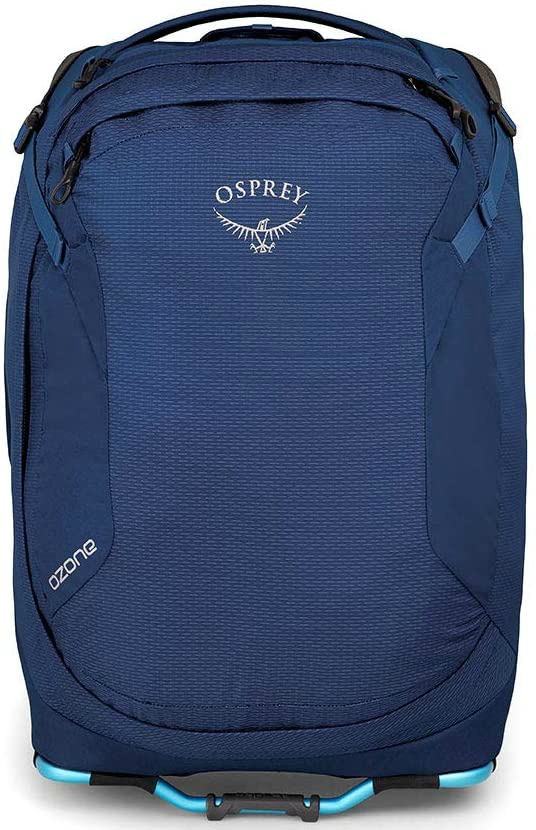
Osprey Ozone Wheeled Carry-on 42L/21.5″
Choose a lightweight practical carry-on , such as the Osprey Ozone , which is a personal favorite. Keep in mind that most budget airlines have a carry-on bag allowance of 55cm x 40cm x 20cm. Always check your airlines individual baggage rules and regulations in advance.

New Zealand Accomodations
We love Airbnb for accommodation in New Zealand. Sign up here for a free $40 credit!
I prefer to book “the entire home” instead of opting for shared accommodation on Airbnb. Aside from safety, I also like to feel like I’m living in the destination. It’s a small taste of local life plus you get more amenities than you would at a hotel such as a kitchen and washing machine.
If you prefer the convenience and comfort of a hotel room, I like using both Agoda.com and Hotels.com . Tip: Hotels.com gives you a free night for every ten nights you book!
For hostels, we recommend Hostelworld and Hostelbookers . Always read the reviews before booking to get the best idea if the hostel is right for you. Some are quiet and family friendly while others are known for their party atmosphere.

New Zealand Transportation
There are seemingly endless ways to travel around New Zealand. For touring around one of the islands, you can rent a car or motorhome. Many visitors rent a vehicle because the roads are easy to navigate and you can travel on your own schedule.
If you’re on a budget or don’t want to drive, you can take a public bus, coach, or train. Several tour companies offer “hop-on, hop-off” passes, which is ideal for backpackers who want to visit multiple cities.
To travel from one island to the other, you can take a passenger or vehicle ferry or hop on a plane.
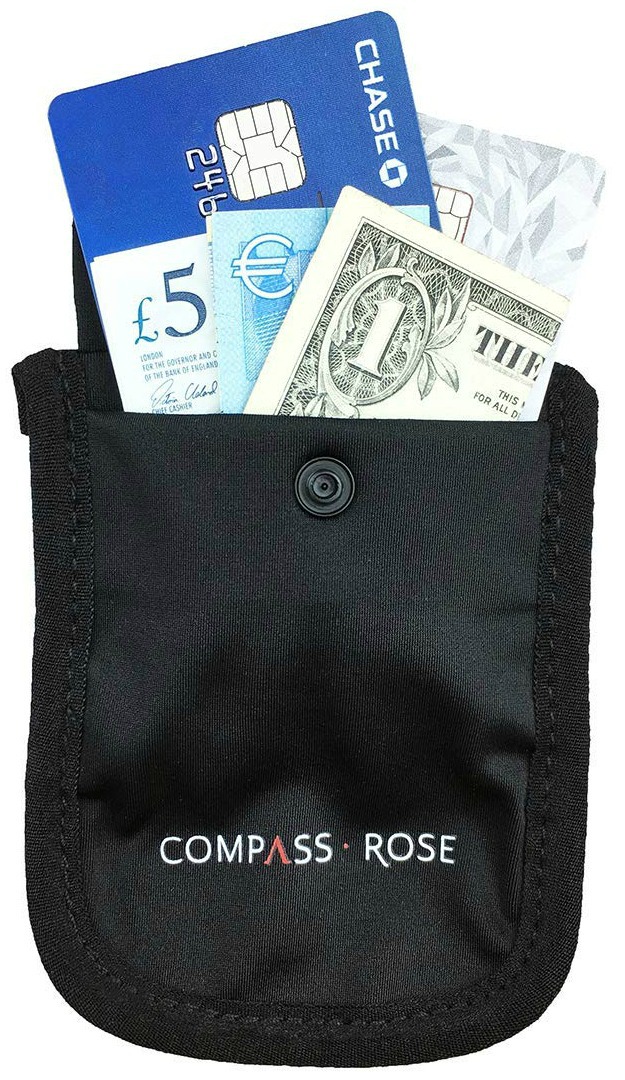
Compass Rose Bra Wallet
Safety Tip: To ensure all your valuables are secure, the best option is to use a combination of anti-theft travel accessories . You can use a hidden bra wallet to store your credit cards and cash for everyday use, then a money belt to store your passport on transit days.

What to Do in New Zealand
Now that you know what to wear in New Zealand, here are a few ideas on what to do there. Like Australia, there are dozens of outdoors and adventurous activities you can enjoy. Here are just a few recommendations:
- Visit locations, such as Hobbiton, where Lord of the Rings was filmed
- Tour hot springs and geysers
- Enjoy wine tasting on Waiheke Island
- Bungee jump in Queenstown
- Take a boat tour around Milford Sound
- Go whale watching
- Tour the art scene in Auckland
Whether you’re an outdoors adventurer or prefer cityscapes, there’s plenty to do in New Zealand!

Enjoy the beauty that is New Zealand and stay warm!
What are your tips on what to wear in New Zealand? Share your New Zealand packing list in the comments!
For more South Pacific packing tips, please read:
- Backpacker Packing List for New Zealand
- What to Pack for Gold Coast and Brisbane
- Visiting the Great Barrier Reef? Here’s What to Bring
- Road Trip Australia Travel Tips
Suggested travel resources:
- Lonely Planet South Pacific
- Lonely Planet New Zealand (Travel Guide)
LIKED THIS POST? PIN THIS PIC TO SAVE IT!

I hope you liked this post on what to wear in New Zealand. Please share with your friends on Facebook, Twitter, and Pinterest. Thanks for reading!

Author Bio: Marijs left the fashion industry to travel the world two years ago. Leaving her shoes behind was one of the hardest things she’s ever done. For her, travel is all about seeing incredible nature and wildlife. The biggest bonus is meeting amazing people, telling stories, and capturing moments on her blog Rooftop Antics . Thirty countries later, Marijs is now based in Australia, working remotely, and traveling the rest of New Zealand, Southeast Asia, and the Pacific Islands.
26 Comments
I’ll be using this article as the base for my packing list for a NZ trip that’s coming up soon!
Very helpful information! We booked a trip to South Island for January 2024..
Thank you for the New Zealand travel tips. We will be going on an 11 night cruise in January, covering both north and south islands. It sounds like one wardrobe might not work for all destinations and it would be best to research the weather for each stop along the way. Do you agree?
Just got back from New Zealand! Had a fabulous time and did carry on only. This information was extremely helpful in my packing! Have friends going in November and can’t wait to share with them your tips and your website/Facebook page! Will be going skiing in Dec to Breckenridge/Vail. Will be checking for info on how to better pack for that trip (go every year, but pack terribly). Thx!
I’m taking a cruise to New Zealand in early March. We’ll be going to ports in both the north and south islands. Is the weather more summerish or more like autumn? I’m still trying to figure out what I’ll need to pack.
Hi K, to get the best advice about what the weather is going to be like, I would suggest you check the weather forecast closer to ensure to your departure dates for the different places you will be visiting in New Zealand to ensure that you have the most appropriate clothing and footwear packed.
To get the best advice for packing for this time of year, I would highly recommend that you join our TFG facebook group and post any questions you have there: https://www.facebook.com/groups/travelfashiongirls/ Its a fabulous community of helpful female travelers that love to share their advice and many of them are traveling in New Zealand right now.
Have the most amazing time!
As well as a carry on case, is a backpack (that can fit under the seat) considered ok as personal bag? It’s fine when I travel within Europe, but traveling to Nee Zealand next week, and I’m not sure if it will be allowed or not. Thank you!
Hi Jen, it would depend on your airline? We would always recommend you check with your airline about their luggage allowance to see whether you’re allowed a personal item and what size they would allow. Have an amazing time on your trip.
Great tips! A few extras from a Kiwi who now lives in Seattle: Flip flops are called jandals in NZ (it’s short for Japanese sanadals), definitely make sure you have a pair to wear if you visit any black sand beaches (often on the west coast), especially in the summer. Luckily they are easy to find/buy almost anywhere if you forget to pack yours.
I’m going to be referring back to this article constantly–hoping to plan a New Zealand trip in the next year or so! Haven’t even sorted the seasons yet. I appreciate the tips here!
Also really important yet not mentioned, the sun in NZ is incredibly harsh, you will get burnt even on a winter day. Tank tops in summer I would very much not advise here unless you want to spend your holiday purple and sore. Slip slop slap and wrap! A good sunscreen is advised.
Hi Rosie, thank you for taking the time to share your insider tips with us! ?
Hello. We’re planning to travel to New Zealand for the women’s rugby world Cup 2021 from September 16 to October 17. I know it’s a while away but I am a planner. We are car renters and don’t care for public transit. Looking for Airbnb’s near Whangarei stadium and Eden park for finals. Any tips would be amazing. Beth from Canada.
Hi Beth, thank you for reaching out! To get the best advice for your question, I would highly recommend that you join our TFG facebook group and post your packing question there: https://www.facebook.com/groups/travelfashiongirls/ Its a fabulous community of helpful female travelers that love to share their advice and feedback. Have an amazing time! ?
Hi, Thanks for your suggestions. But, we are senior citizens going with our grand children. Two kids between the age of 6&8. What dresses you suggest for us? We are going in end of december to first week of Jan. 2020. We are ready with chudidar….
Hi Rekha, thank you for reaching. The product images shown in the blog are simply to provide you with an understanding of the general principles you can use. You can then adapt and tailor the items shown to suit your own style and preferences. Here is a helpful guide that explains more about how to use our guides: https://www.travelfashiongirl.com/how-to-use-the-travel-fashion-girl-packing-lists-and-guides/ We do also have a selection of age-specific articles you might like: https://www.travelfashiongirl.com/over-40-fashion/ I would also highly recommend that you join our TFG facebook group and post any questions you have there: https://www.facebook.com/groups/travelfashiongirls/ Its a fabulous community of helpful female travelers that have the best advice and recommendations to share. Hope this helps you with your packing. Have a wonderful trip with your grandchildren! ?
As with most places in the world, accommodation close to the airport as well as transport such as taxis and buses, charge significantly more than the average rate than if you were to walk slightly out if the airport zone and get transport from there accommodation. I think as a traveler you’d want to stretch your budget so always look out for things as such.
Hi, thank you for sharing your travel advice for New Zealand with us! 🙂
We hiked in the Waitakere Ranges specifically on the Kitekite Trail last week. They have had mudslides and so many trails are closed or only open to a certain area. We used normal tennis shoes to hike in and were fine. Part of the Kitekite track was closed, but we were still able to see beautiful trees and small waterfall as well as the silver fern (All Blacks Rugby Team Emblem Logo). Just call the day of your hike to make sure can access track before you go.
I live in New Zealand, and I think the thing I have to point out is the part about people dressing up more in the north than in the south. A heads up, the north is actually more laid back than the south. In the south, if you really did go to the mall, or anywhere barefoot, you’d definitely see heads turning, although this applies for the bigger towns as well as the cities in the south. I travel to the north often and actually see people in their pyjamas out shopping in broad daylight. If this isn’t laid back, I don’t know what is. Also, in the winter nowadays, the wind bites. If travelling anywhere from Christchurch upwards in the winter, don’t expect snow so much, rather rain or hail. From below Christchurch downwards, you’ll definitely get snow, it’s happened every year I can recall.
Hi, thank you so much for taking the time to share your travel tips for New Zealand with us! 🙂
Couldn’t agree more. The South Island social scene is every bit as dressed up as Europe particularly in the cities such as Christchurch, Nelson and Dunedin. Very rarely have I ever seen people in bare feet in malls unless it is a shop across the road from a beach. You would be asked to leave a restaurant if you were not wearing shoes and clean attire. Same for the upmarket bars.
(Just a heads-up – in the luggage tips section there’s a paragraph that’ refers to Europe instead of NZ.) In my experience NZ airlines are pretty strict with luggage size, but they also *weigh* your carry on bag. I’ve been forced to re-pack my things in the check in line because I was ~1kg over the limit for my carry on — something I’ve never encountered in the US. And moving items into my purse was not going to fly with the staff either. This was on a long haul flight on a major airline.
Hi Jo, thank you for bring this to my attention! That’s great advice, thanks for sharing it 🙂
I don’t know if this is just a problem with my computer or not, but the links for the clothing all took me to Amazon’s home page, not the actual items.
Hi Carrie, most of the items sell out almost instantly so we link them to categories where you can find similar items 🙂
Submit a Comment Cancel reply
Your email address will not be published. Required fields are marked *
Save my name, email, and website in this browser for the next time I comment.
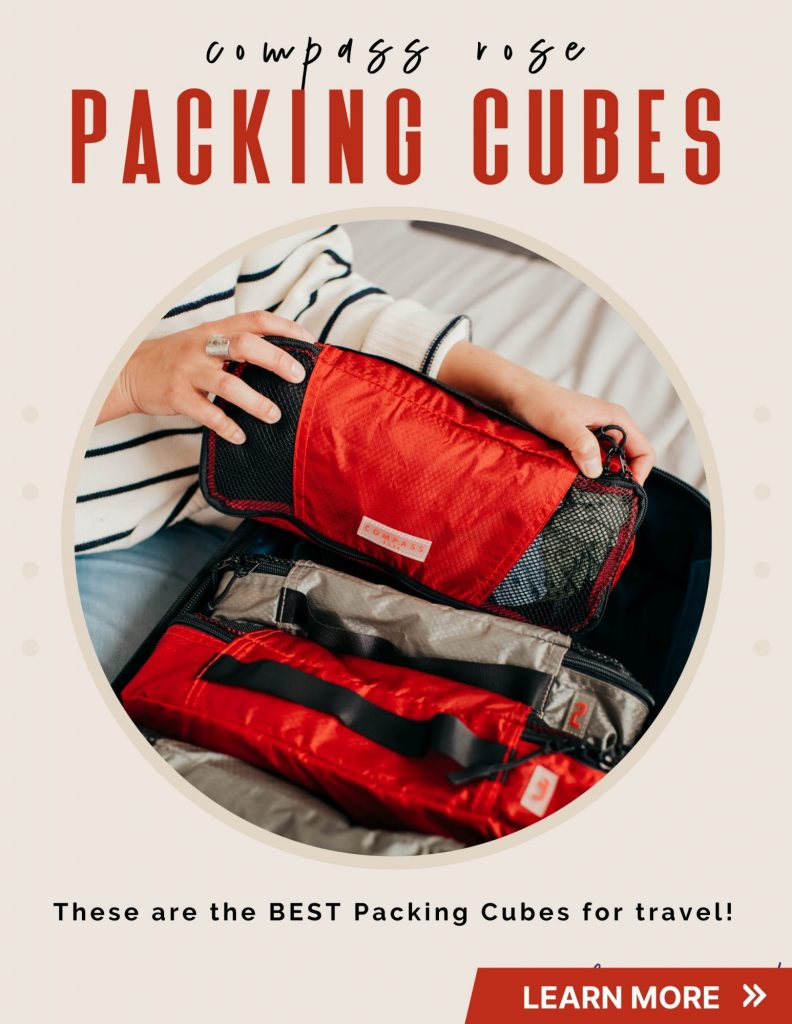
- facebook-official
- youtube-play
- pinterest-circled
New Zealand Packing List: What to Pack for New Zealand 🥾 [2024]
Nz pocket guide is 10 years old. thank you for trusting us with your trip for over a decade, the complete packing list for new zealand.
Packing before a big trip like one to New Zealand is exciting, yet still pretty stressful. This complete New Zealand packing list aims to remove the anxiety by listing all of the essentials. You’ll know exactly what to pack for New Zealand after scrolling through our easy-to-follow bullet points.
By the way, have you seen our complete travel guide to New Zealand ? That has much more tips to help you plan the perfect trip.
What Luggage to Take: Day Pack and Backpack/Suitcase
Before we jump into what to pack for New Zealand, you need something to pack it all in. We recommend either a large backpack or suitcase per person (or per adult if you’re a family) and a day pack per person.
Backpack or Suitcase?
Everyone has an opinion on whether a backpack or a suitcase is better for New Zealand. A suitcase is often more convenient if travelling by car/campervan and with no intention of doing a multi-day hike . A large backpack, such as the ones we list in What is the Best Backpack for New Zealand? tend to be more versatile; better when using other transport means and for doing a lot of walking. Find a more in-depth comparison in our backpack vs. suitcase for New Zealand guide .
Which Day Pack?
Choose a versatile small/medium backpack as your day pack. That way, you can use it as your carry-on luggage on your flight to New Zealand, as well as a bag for when you’re out and about exploring New Zealand.
If you plan on doing a lot of day walks, make your day pack one that is suitable for hiking, such as this 22l Osprey backpack . If not, we like the eco-friendly Herschel day packs made from recycled plastic bottles.
What Clothes to Pack for New Zealand
Whatever the season, the key is to pack versatile outfits and lots of layers! New Zealand has a very changeable climate where, even in summer, you could wake up with sunshine and end the day with rain and chilly weather. A rainjacket and mid-layer are essential at least to have in your day pack so you can throw them on if needed.
As for the quantities of clothes, we recommend packing enough for almost a week. When needed, use the laundry facilities, which are found in most accommodations.
The below list is per person, applying to every member of your group (or just yourself if travelling solo), including men, women and kids.
- 1 Leggings/sweatpants
- 1 Hiking pants
- 1 Shorts (summer)
- 6 Tops/T-shirts/singlets
- 1 Light long-sleeved top (protect yourself from the sun in summer)
- 1 Thermal underlayer (top and/or bottoms for winter, spring or autumn)
- 1 Sweater/hoody/fleece/mid-layer
- 1 Waterproof and windproof jacket (make it a warm jacket for winter)
- 6 Socks (a mix of woollen and cotton)
- 6 Underwear
- 2 Bras (if applicable)
- 1 Hiking shoes
- 1 Flip-flops
- 1 Suncap/sunhat
- 1 Beanie (winter)
- 1 Scarf/neck-warmer (winter)
- 1 Sunglasses
The above list is the bare essentials for a trip to New Zealand. Some travellers might prefer to take an extra city outfit (jeans/sundress/shirt/casual shoes). However, you will not look too out of place in outdoor gear in a city – the New Zealand fashion sense is pretty casual.
Pyjamas were not included on this list, as you can always sleep in your sweatpants/leggings/shorts, tops or undies. However, feel free to add them if you prefer.
Packing for the Season
Note that the packing list for each season is slightly different, so check out our seasonal packing lists for New Zealand:
- Packing List for Summer in New Zealand
Packing List for Autumn or Spring in New Zealand
- Packing List for Winter in New Zealand
Toiletries to Pack
We all have our own regimes (or lack of) when it comes to hygiene and beauty. Below are good things to remember but they won’t apply to everyone.
- Sunscreen (at least SPF 30)
- Insect repellent (summer)
- Aftersun/moisturiser
- Shampoo/conditioner
- Hairbrush/comb
- Hair bobbles/bands
- Feminine hygiene products
- Contact lenses/glasses
- Prescription medication
You may have noticed that we didn’t include soap in this list because it’s usually included in most accommodations except hostel dorms , campervans or campsites , so take some if you are staying in one of those.
Note all of the above (except prescriptions) can be bought in New Zealand supermarkets and pharmacies.
Medication and First Ait Kit
Accidents or unexpected illnesses can happen, so be prepared with a small travel first-aid kit. Take it in your day pack.
- Plasters/bandaids
- Disinfectant wipes
- Gauzes with clips/tape
- Hand sanitiser
- Paracetamol/ibuprofen
- Antiseptic cream
- Hydrocortisone cream
- Antihistamine
Again, you can get medication in New Zealand supermarkets and pharmacies. For more stuff to stuff into your first aid kit, see our Health Tips For Travelling in New Zealand .
Other Essentials
And for all that extra stuff that doesn’t fit into a category, here are some other items to add to your New Zealand packing list.
- New Zealand travel adapter
- Camera/ action camera
- Electronic device chargers (extra batteries are a good idea)
- Driving license + IDP (if driving)
- Flight ticket + return ticket (or sufficient funds)
- Visa + supporting evidence (if required)
- New Zealand dollars (enough for the first few days)
- Credit/debit card
- Reusable water bottle/ water bladder (tap water is safe)
- Food containers (if self-catering)
- Shopping bags (if self-catering)
- Travel towel (if camping or staying in hostel dorms)
- Travel games /entertainment (especially if travelling with kids)
For some cool but admittedly not essential stuff to take with you to New Zealand, see 14 Genius Travel Gadgets for New Zealand .
Camping Gear
If you plan to stay in a tent , camp in a campervan or do a multi-day hike where you’ll stay in a backcountry hut , there are some other things worth packing for New Zealand.
Camping in a tent
- Lightweight tent
- Sleeping mat
- 4-Season sleeping bag
- Torch/flashlight
- Camping stove (get gas canisters in New Zealand)
- Camping cooking utensils
Check out our Camping Essentials Checklist for New Zealand for a more comprehensive list. Plus, see DOC Campsite Pass: How it Works & is it Worth it?
Camping in a Campervan
- 4-Season sleeping bag (if bedding is not included and/or you’re camping in winter)
For more ideas, head to the 12 Essentials to Pack for a New Zealand Campervan Trip .
Staying in Huts for Hiking
- Camping cooking utensils .
For more advice, check out New Zealand Hut to Hut Hiking: What is it Like to Stay in a Hut? and DOC Backcountry Hut Pass: How it Works & is it Worth it?
Packing for Longer Trips
New Zealand is a popular destination for long-term trips, especially as the visitor visa allows most nationalities to stay for up to three months. In addition, many travellers choose to come to New Zealand on a gap year using the working holiday visa or as an international student .
The good news for packing for a long-term trip to New Zealand is that all of the information above applies! Some of the following items are worth adding to your packing list:
- Passport-sized photos (for an 18+ ID , for instance)
- Photocopies of your passport
- Copy of your work visa + supporting evidence (for example, the working holiday visa requires evidence of sufficient funds, onward travel ticket and travel insurance – more information at Arrival Advice: Passport Control and Immigration )
- Travel insurance
- Smart/casual outfit (for work/job interview)
Remember, you can get a lot of gear in New Zealand, so you can still pack lightly for a long-term trip. For more advice, head over to The Ultimate Packing List for an Extended Trip in New Zealand .
More New Zealand Packing Lists and What to Pack for New Zealand
That’s it for our complete packing list for New Zealand. Now, you might also be interesting in these other guides to check out what to pack for New Zealand:
- 10 Items You Should Definitely Not Pack for New Zealand
15 Essentials to Pack for New Zealand
- What are the Best Cheap Hiking Boots for New Zealand?
- What Clothes to Pack to Backpack in New Zealand
- What to Pack for a Gap Year in New Zealand: Pre-departure Checklist
Plus, find more essential travel advice in the 31 Tips for Travelling in New Zealand .
The information in this guide has been compiled from our extensive research, travel and experiences across New Zealand and the South Pacific, accumulated over more than a decade of numerous visits to each destination. Additional sources for this guide include the following:
- Tourism New Zealand (General travel advice - Updated [2024])
- Immigration New Zealand (Visa and immigration advice - Updated [2024])
- New Zealand Customs Service (Customs and Biosecurity - Updated [2024])
- New Zealand Traveller Declaration (NZTD online platform - Updated [2024])
- Tiaki Promise (Care for people place and culture - Updated [2024])
- Safe Travel (NZ travel advisories - Updated [2024])
- Stats NZ (Statistics and travel data - Updated [2024])
- Waka Kotahi NZ Transport Agency (Road and transport tips - Updated [2024])
- DriveSafe (Road safety - Updated [2024])
- Council websites and freedom camping maps (Local travel advice region by region - Updated [2024])
- AdventureSmart (Know before you go - Update [2024])
Our editorial standards : At NZ Pocket Guide, we uphold strict editorial standards to ensure accurate and quality content.
About The Author
This article has been reviewed and approved by Robin, who is the co-founder of NZ Pocket Guide. With more than 15 years of experience in the New Zealand tourism industry, Robin has co-founded three influential tourism businesses and five additional travel guides for South Pacific nations. He is an expert in New Zealand travel and has tested over 600 activities and 300+ accommodations across the country.
Was this article useful?
Related posts, 12 essentials to pack for a new zealand campervan trip, the ultimate packing list for an extended trip in new zealand, packing list for summer in new zealand, how to choose a good pair of hiking boots, recommended for you, the top new zealand events & festivals 🙌 [2024], 15 best backpacker hostels in tongariro national park 🎒 [2024], 10 best hostels in national park village & whakapapa 🎒 [2024], destinations, travel tips, connect with us, accommodation.
Welcome/Kia Ora By using this website you agree to our Privacy Policy and terms of use within it which includes sponsored posts and affiliate links.
Connect with us
Welcome/Kia Ora! By using this website you agree to our Privacy Policy and the terms of use within it.
© 2024 NZ Pocket Guide. Contact – Disclaimer – About Us – Our Standards
More From Forbes
American sportsmen discover new zealand’s hunting and fishing paradise.
- Share to Facebook
- Share to Twitter
- Share to Linkedin
The world's largest red deer stags are the prized attraction for international hunters visiting New ... [+] Zealand.
Long before Peter Jackson’s Lord of the Rings trilogy put New Zealand on everyone’s travel list, hunters and anglers long coveted the island nation’s riches of fish and game. It is a sportsman’s Jurassic Park, where beasts grow to near-mythic dimensions and the stunning landscape inspired the fictitious land of Middle-earth.
New Zealand’s temperate climate, rich volcanic soils, lack of apex predators, and lush pasturelands proved the perfect habitat on which to introduce all manner of the Old World’s famous game—especially red deer.
New Zealand's many mountain-framed lakes provide stunning backdrops for many adventures.
In the early 1900s, the red deer, chamois from the Alps, fallow deer, the large-bodied sambar deer, reclusive rusa stags, Himalayan tahr (a mountain goat-like animal), elk from North America, and wild boar were all brought to New Zealand, a country that originally had but one species of mammal—a bat.
Essentially, game keepers and biologists saw New Zealand as a blank canvas on which to create a wild game masterpiece, so they did. Without natural predators nor severe winters to slow the population growth of the country’s new cast of horned and antlered creatures populations of many of the introduced species exploded. So prolific were the red deer, for instance, that a few decades ago game managers were forced to conduct extensive culling operations to bring the deer numbers back to levels the habitat could support.
The Best Romantic Comedy Of The Last Year Just Hit Netflix
Apple iphone 16 unique all new design promised in new report, rudy giuliani and mark meadows indicted in arizona fake electors case.
John Scurr poses with a pair of pukeko or swamphens, one of several indigenous game birds found in ... [+] New Zealand.
Today, these same red deer have become a popular draw for hunters from across the world—especially Americans. Thousands of U.S. hunters travel to New Zealand annually to partake in big game hunting.
“Most hunters know of New Zealand as the home of the world’s biggest stags,” says John Scurr , a Kiwi native and veteran hunting operator who specializes in arranging custom hunting and fishing experiences for all manner of the nation’s fish and game. “But we have many game species that are thriving here on both the North and South islands.”
Wine tours are just one of many diversions available to visiting sportsmen.
For Scurr, however, it’s about customizing diverse New Zealand tour packages that allow visiting hunters and anglers to immerse themselves in a wide range of attractions and activities that complement rod and gun adventures.
“New Zealand is a his and her (and family) destination, so if a hunter wants to bring a non-hunting spouse or friend here,” says Scurr, “we can arrange a wide assortment of activities from helicopter junkets to volcanos and glaciers, lake excursions, wine tours, glacier climbing, jet boating, hiking and biking, bungy jumping, parasailing, or drives through the countryside to explore any number of our inviting communities.”
New Zealand's wealth of breathtaking scenery is reason enough to visit.
Sportsmen’s dollars, then, are helping support the entire tourism economy, the nation’s second largest industry behind agriculture. In addition, hunting provides the financial incentive to keep lands wild, supporting myriad non-game species that depend on the same cover as deer and other game.
“Rather than sitting in a lodge for a week and then returning home,” says Scurr, “many of our sporting clients want to experience more of New Zealand before they go. And most of our hunting areas are conveniently located near other great attractions.”
The bustling and beautiful town of Wanaka with a population of some 12,000 is located on the shores of stunning Lake Wanaka, a 74-square-mile body of water, and is home base for Scurr’s South Island adventures.
Scurr poses with accomplished Oklahoma hunter Suzie Brewster and her giant stag.
“We put some of our hunters up in well-appointed lakeside condos,” he says, “and we dine in restaurants that are all within easy walking distance. And our hunting areas are located just a ten-minute drive from town. This has been a very popular package for us as non-hunting spouses can enjoy a wide range of amenities offered in Wanaka (spas, shops, restaurants, tours, art, and cultural opportunities) and then come together with their husbands after the hunt to share an evening on the town.”
Nearly as famous as its stag hunting, New Zealand is a celebrated fly-fishing destination for outsized rainbow and brown trout. The plethora of gin-clear rivers and lakes along with a handful of famous lodges, put the country high on most trout anglers’ must-visit list.
The inviting and bustling community of Wanaka is home base for Scurr's South Island offerings.
Adding some bird hunting to the menu is a simple proposition as well, for New Zealand has a mix of endemic and introduced game bird species including the highly prized (and striking) paradise duck.
For hunters who don’t want the hassle of flying with their own firearms, Scurr has a wide assortment of rifles and shotguns for rent. “We find that most hunters choose to use our guns because it saves a lot of headaches dealing with gun licensing and customs. But if a hunter would rather bring his favorite rifle, we’ll assist with the permit process as well.”
For Scurr, sharing the best of New Zealand is his life's passion.
For Scurr, it’s about sharing the wealth of sporting and recreational opportunities that his native New Zealand has to offer. “We have a unique landscape and with that comes special opportunities for visiting sportsmen and others,” he says. “And when someone books with us we want them to go home and share the experience with their friends as they plan their next adventure to New Zealand.”

- Editorial Standards
- Reprints & Permissions
Cookies on GOV.UK
We use some essential cookies to make this website work.
We’d like to set additional cookies to understand how you use GOV.UK, remember your settings and improve government services.
We also use cookies set by other sites to help us deliver content from their services.
You have accepted additional cookies. You can change your cookie settings at any time.
You have rejected additional cookies. You can change your cookie settings at any time.
- Transport planning
National Travel Survey mid-year estimates: year ending June 2023
Mid-year estimates of travel behaviours by residents of England travelling within Great Britain for the year ending June 2023.
Applies to England
Nts mid-year estimates: year ending june 2023, nts mid-year estimates, year ending june 2023: technical report, nts mid-year estimates: official statistics in development feedback, nts mid-year estimates, year ending june 2023: table index.
ODS , 6.72 KB
This file is in an OpenDocument format
NTS mid-year estimates, year ending June 2023: Data tables (ODS)
ZIP , 138 KB
NTS mid-year estimates, year ending June 2023: Data tables (MS Excel)
ZIP , 676 KB
The National Travel Survey mid-year estimates, year ending June 2023 results showed:
people in England made 882 trips on average in the year ending June 2023, about 17 trips per week
overall trip rates were 2% higher than in 2022 and 7% lower than in 2019
- there were increases in trip rates amongst car passengers, buses in London, London Underground and surface rail in the year ending June 2023 compared to calendar year 2022
- trip rates for walking, cycling, non-London buses and car driver trips remained fairly stable
- the 5,720 miles people travelled on average in the year ending June 2023 was 6% higher than in 2022, and a decrease of 12% compared to 2019
- on average people spent 338 hours travelling in the year ending June 2023, around 56 minutes a day
- the most common trip purpose in the year ending June 2023 was for shopping with 165 trips per person, this was followed by commuting with 119 trips per person
Please see the data tables for further information.
Our statistical practice is regulated by the Office for Statistics Regulation (OSR). OSR sets the standards of trustworthiness, quality and value in the Code of Practice for Statistics that all producers of official statistics should adhere to. You are welcome to contact us directly by emailing National Travel Survey with any comments about how we meet these standards.
National Travel Survey statistics
Email [email protected]
Public enquiries 020 7944 3077
Media enquiries 0300 7777 878
To hear more about DfT statistical publications as they are released, follow us on X (formerly known as Twitter) at DfTstats .
Related content
Is this page useful.
- Yes this page is useful
- No this page is not useful
Help us improve GOV.UK
Don’t include personal or financial information like your National Insurance number or credit card details.
To help us improve GOV.UK, we’d like to know more about your visit today. We’ll send you a link to a feedback form. It will take only 2 minutes to fill in. Don’t worry we won’t send you spam or share your email address with anyone.

IMAGES
VIDEO
COMMENTS
What to Do. June is a good time to enjoy general sightseeing activities in New Zealand, which combine indoor and outdoor experiences. There are great museums, galleries, and museums in the big cities (Auckland, Wellington, Christchurch, Dunedin), and fun activities elsewhere like Maori cultural shows in Rotorua and Taupo, dolphin or whale-watching cruises in the Bay of Islands and Kaikoura ...
High mountain regions start to get covered in snow during June too. North Island Temperatures: Highs of around 15ºC (59ºF) or more, and lows of 3ºC (36ºF). South Island Temperatures: Highs of around 13ºC (55ºF) and lows of -2ºC (28ºF). For a packing list to match the weather in June, see the Packing List for Winter in New Zealand.
In this guide to travelling New Zealand in June, we'll cover June temperatures, must-do activities in June, travel tips for New Zealand in June and June events. Average Temperature. The temperature in the North Island in June is between 4 - 16 °C / 39 - 61 °F. The temperature in the South Island in June is between 1 - 12 °C / 34 ...
Typical Temperatures in June. June is the first week of the winter season in New Zealand, therefore the temperatures will start dropping to their coldest out of the whole year. June often experiences cold winter blasts from the South Pole, however, temperatures rarely get below -5ºC (23ºF). Nevertheless, there are some regions that don't ...
Tongariro crossing in winter, mount Ngauruhoe, the great walk, New Zealand, Tonagriro National park. A Hoar Frost Rose in New Zealand. Winter hoar frost, Ida Valley Ophir suspension bridge. Mount Cook Village, New Zealand. A hiker soaks in a dramatic sunrise on a snowy Roy's Peak trail over Lake Wanaka.
With winter rolling in, there is a good mix of things to do, events to attend and reasons to travel to New Zealand in June.Here are some: Queenstown Winter Festival: The start of ski season means that Q-Town is open for business. This quintessential ski town kicks off the season, normally in late June, with free concerts, and some really cool slopestyle competitions.
Here are some of the average high/low temperatures across the North and South Islands in June: Auckland: 15° / 8° Celcius, or 59° / 46° Fahrenheit. Wellington: 12° / 7° Celcius or 53° / 44° Fahrenheit. Christchurch: 11° / 2° Celcius or 51° / 35° Fahrenheit. Queenstown: 8° / 0° Celcius or 46° / 32° Fahrenheit.
New Zealand weather in June. June marks the arrival of much colder weather to New Zealand, which includes Polar Blasts - cold air being blown up from Antarctica. While severe freezing temperatures below minus 10 degrees Celsius are uncommon, temperatures tend to fluctuate between -5 degrees Celsius (23 degrees Fahrenheit) at night and 20 ...
Here are some of our favourite New Zealand activities in June: Queenstown Winter Festival. Celebrate Matariki; Maori New Year. Go Skiing. Heli-Hike the Franz Josef Glacier. Take a Dip in the Hot Springs in Rotorua or Hanmer Springs.
Best time to visit. The best time to visit New Zealand is during the summer months of December to March. Expect long, bright, sunny days and temperatures between 61°F and 75°F. It's an ideal time to visit the lovely beaches or enjoy the many outdoor activities available, such as hiking and mountain biking. However, New Zealand's rugged ...
Average Temperature in Queenstown in June. Queenstown in June has an average temperature range of 6 to 8 degrees Celsius. With the days being generally cooler, the temperatures usually dip to 0 or 1 degree Celsius at night time. It is possible for the temperature to go below 0 on particularly cold nights, although when the sun is out you can ...
The best time to travel to New Zealand largely depends on what kind of holiday you want to have, with the peak season (featuring the best weather) falling from December to February. If you're after snow, travelling during the winter months of June to August is the way to go. Although New Zealand's climate is quite varied due to its diverse landscape, most of the country experiences a ...
New Zealand's climate is diverse - the north of the North Island can have warm subtropical weather in summer, while inland alpine areas of the South Island can have heavy snow and temperatures as low as -10°C (14°F) in winter. The hottest months in New Zealand are January and February, and the coldest month of the year is July.
Overall, then, average temperatures in the North Island in June are quite cold, but never freezing. However, there is huge variation across the island in terms of average temperatures, as well as from the beginning of June to the end of the month. For example, average high temperatures all across the North Island all remain in or near the teens ...
The Ultimate List of New Zealand Travel Tips. Ah, New Zealand! Known to the local Māori as "Aotearoa", New Zealand is a remote country in the South Pacific famous for its dramatic scenery. At about 1,600 km (1,000 mi) long and 450 km (280 mi) at its widest point, the country is easy to explore.
New Zealand highlights itinerary. Food & wine — Hot pools & health spas — Māori culture — Nature & wildlife. 14 Days. Auckland > Rotorua > Queenstown. This itinerary takes you through some of New Zealand's most scenic spots over 14 days. Enjoy glowworm caves and geothermal wonders in the central North Island, before driving through ...
But don't let that stop you - it is still totally possible to explore New Zealand on a budget. If you are on a tight budget and watch your spending closely, you could get by with a daily budget of $60 - $90 per person. If you want a few splurges and to stay in nicer accommodation, plan to budget $100 - $150.
29. Acceptable ID. The legal drinking age is 18 years old in New Zealand and you may be asked to show your ID to prove your age when buying alcohol. The only forms of ID that are accepted are your passport, a valid New Zealand driver license and the Kiwi Access Card (previously known as the 18+ Card).
Stop 7: Lake Taupo. Lake Taupo is the largest lake in the country, and a must-stop destination on your New Zealand itinerary for solo travellers. Solo travellers should check into Finlay Jack's Backpackers, a really cool hostel with free morning yoga, group BBQs and even backyard gigs in the summer.
Explore five of the best New Zealand towns to visit in June with Stuff's travel guide. Find out what to do, see and eat in these winter destinations.
New Zealand has jaw-dropping mountains, crisp blue lakes, beautiful beaches, and a bustling capital. ... We're planning to travel to New Zealand for the women's rugby world Cup 2021 from September 16 to October 17. I know it's a while away but I am a planner. ... Alex on June 12, 2018 at 12:10 am Hi, thank you for sharing your travel ...
New Zealand is quite a wet country and rain should be expected at any time of year. In general, the further north you go, the higher the chance of rain. For instance, Auckland receives almost double the amount of rain as Christchurch in May. So, May can be quite wet, but less so than the winter.
Plus, find more essential travel advice in the 31 Tips for Travelling in New Zealand. Sources: The information in this guide has been compiled from our extensive research, travel and experiences across New Zealand and the South Pacific, accumulated over more than a decade of numerous visits to each destination.
Thousands of U.S. hunters travel to New Zealand annually to partake in big game hunting. "Most hunters know of New Zealand as the home of the world's biggest stags," says John Scurr, a Kiwi ...
the 5,720 miles people travelled on average in the year ending June 2023 was 6% higher than in 2022, and a decrease of 12% compared to 2019 on average people spent 338 hours travelling in the year ...